# **软考下午题**
一大题知识点
数据流图
数据流程图基本元素
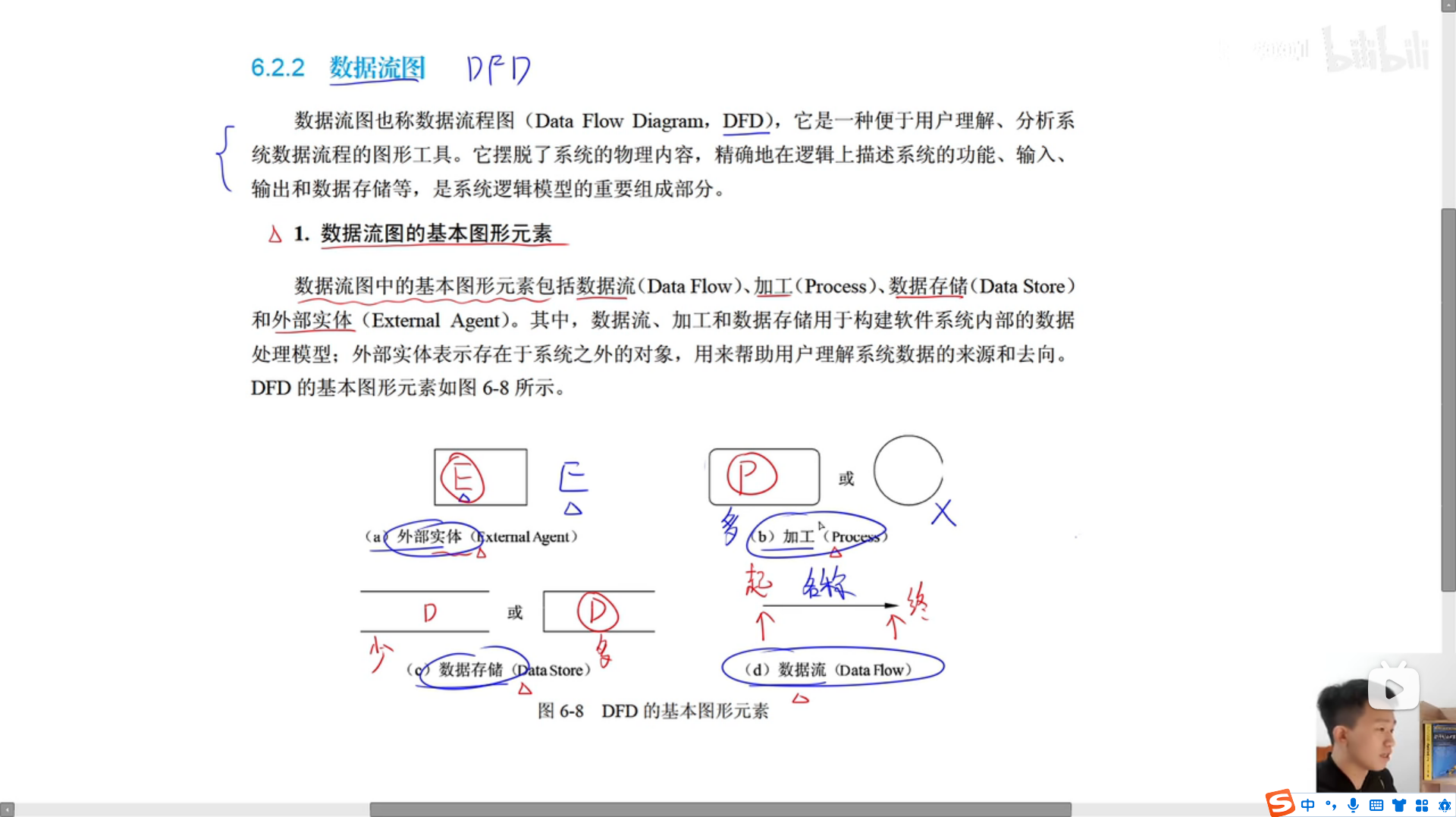
外部实体的基本定义
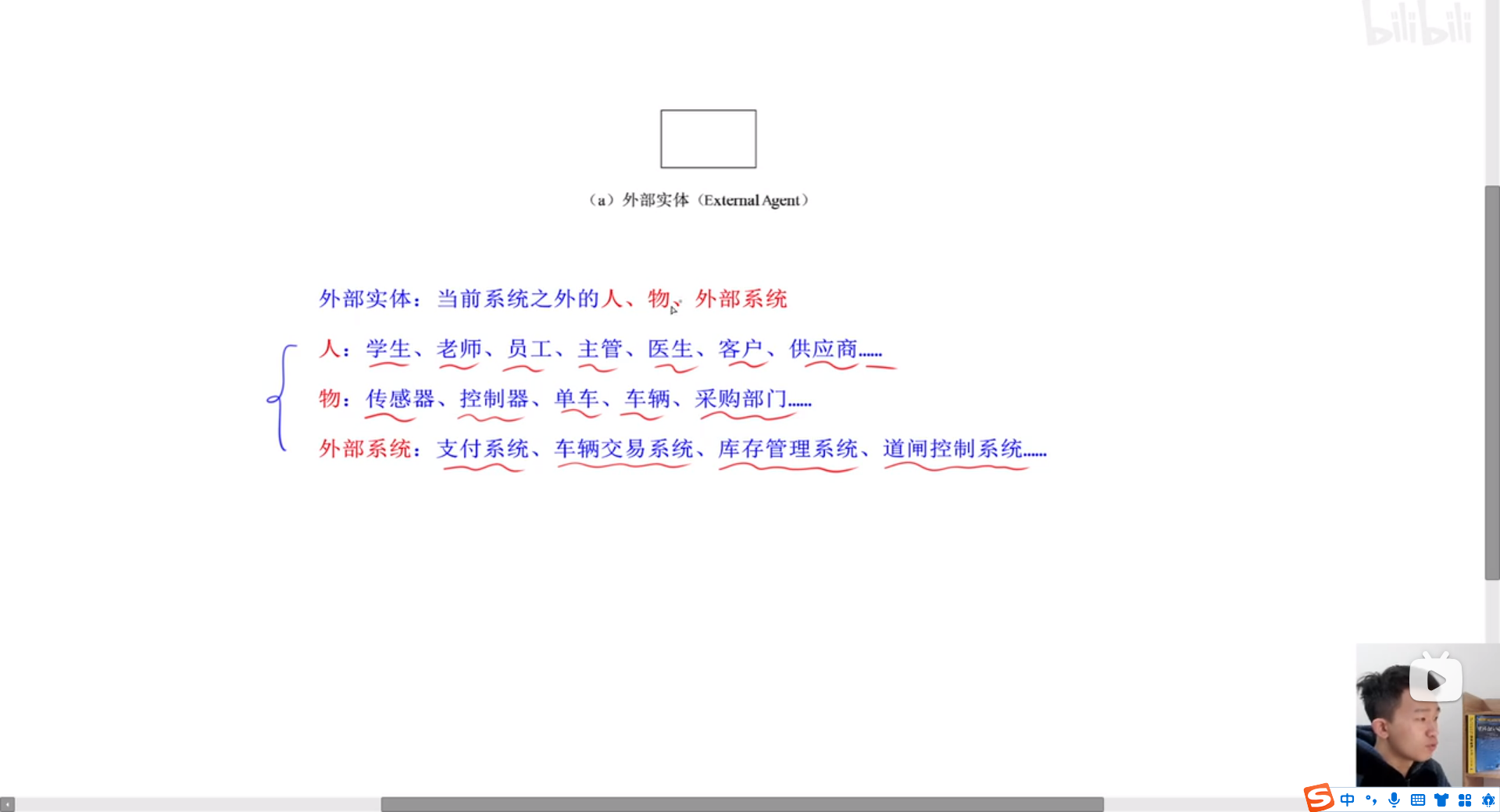
数据存储的基本定义
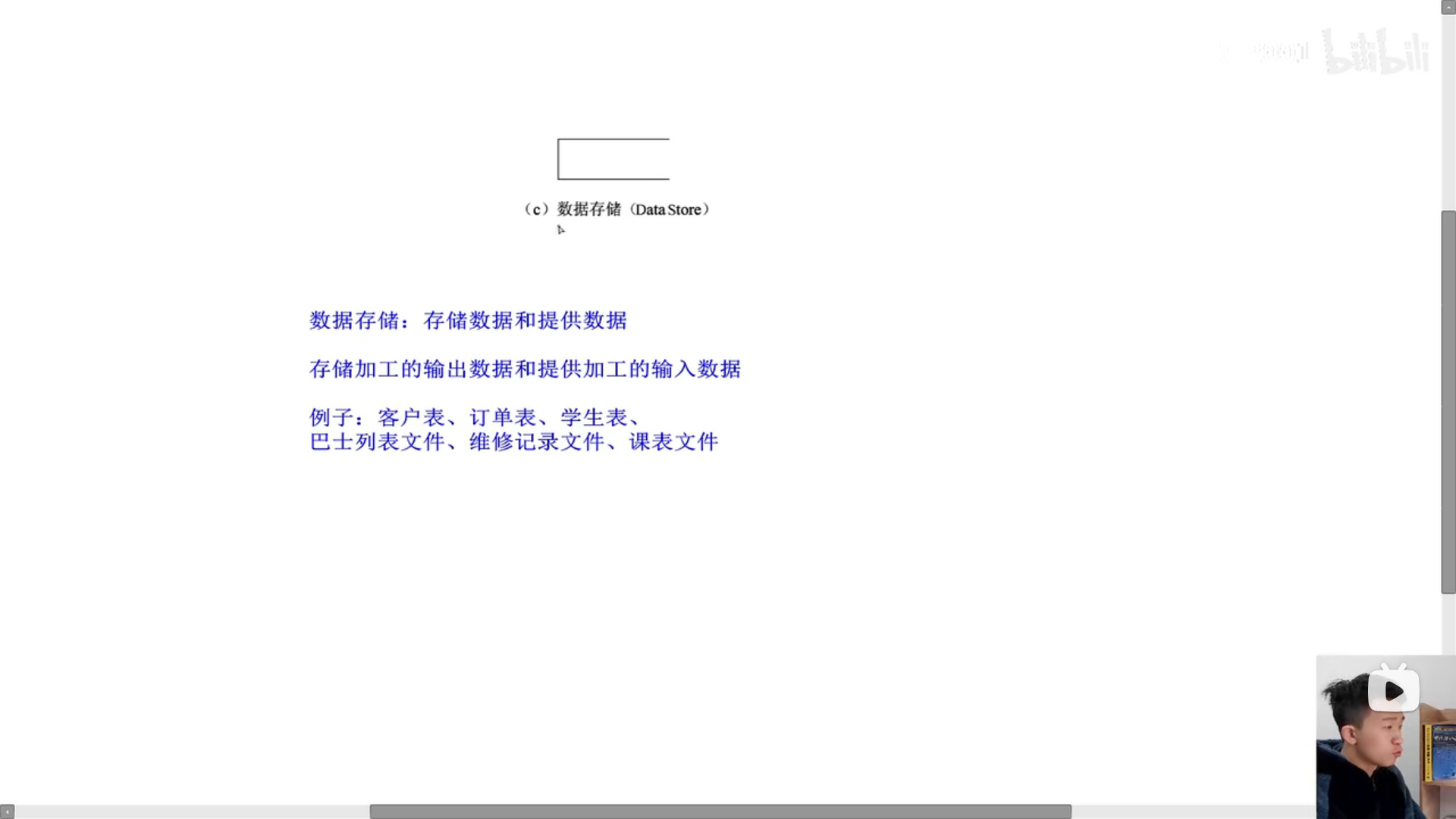
加工的基本定义
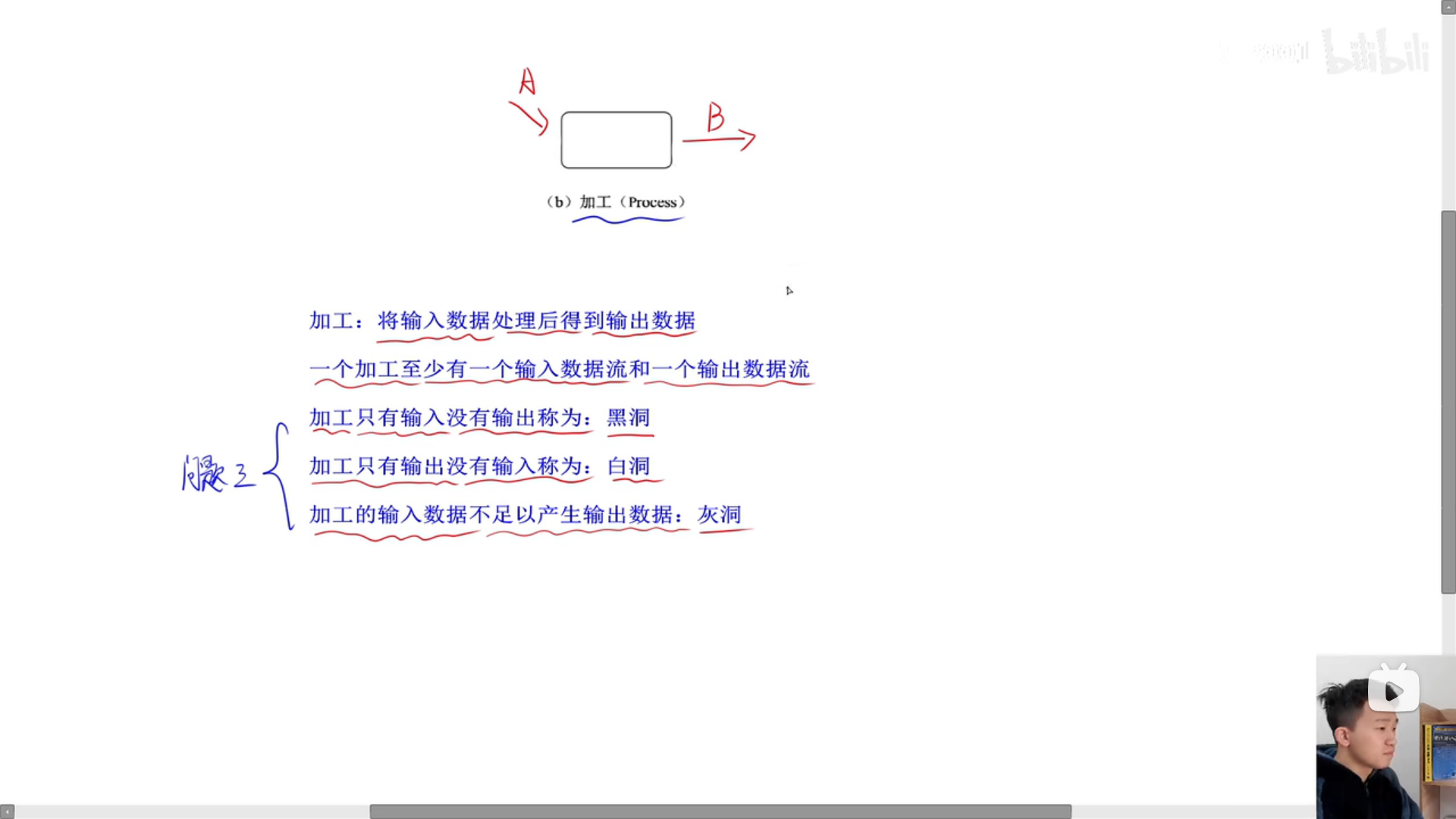
数据流的基本定义
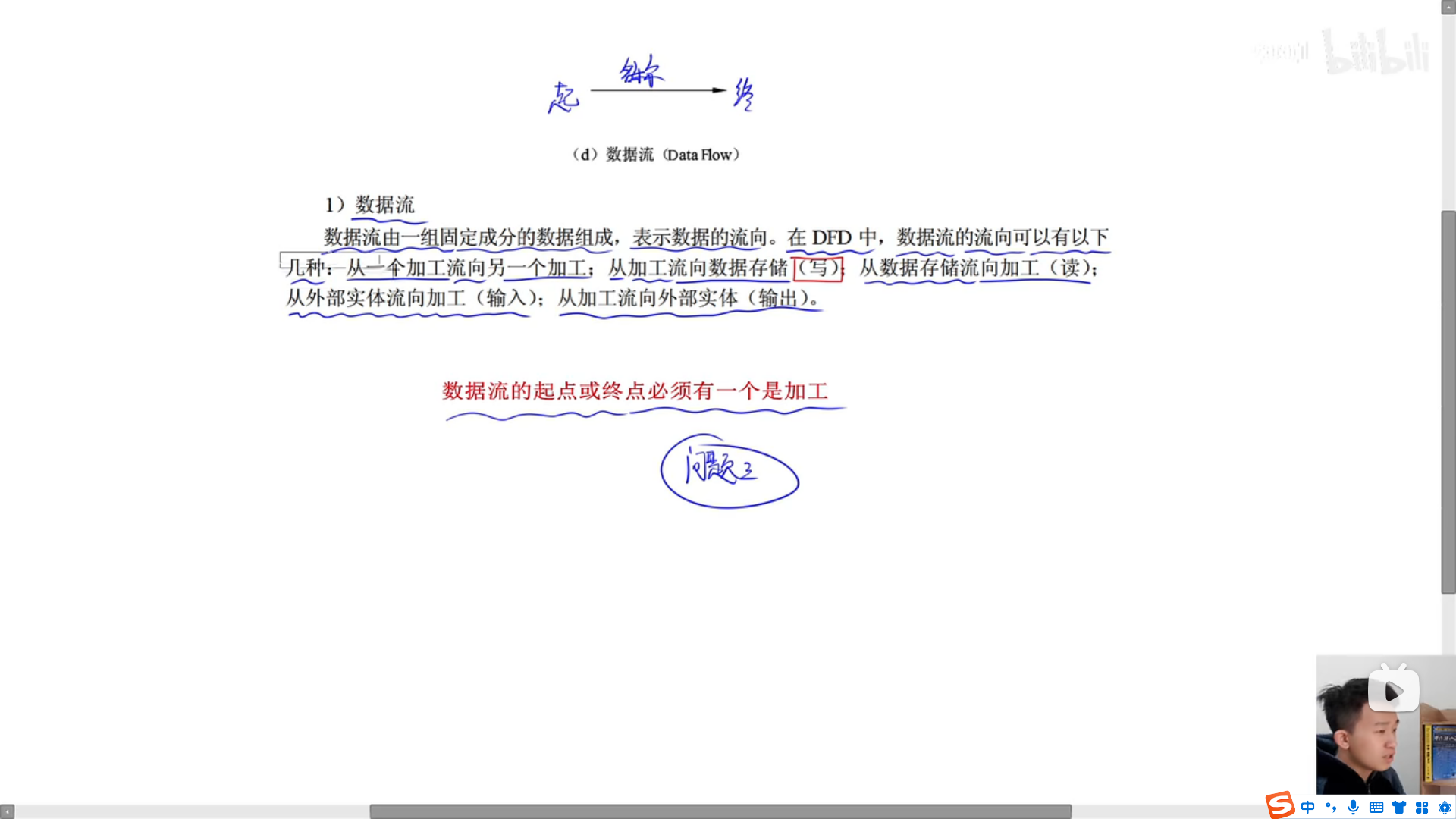
问题1(找出外部实体)
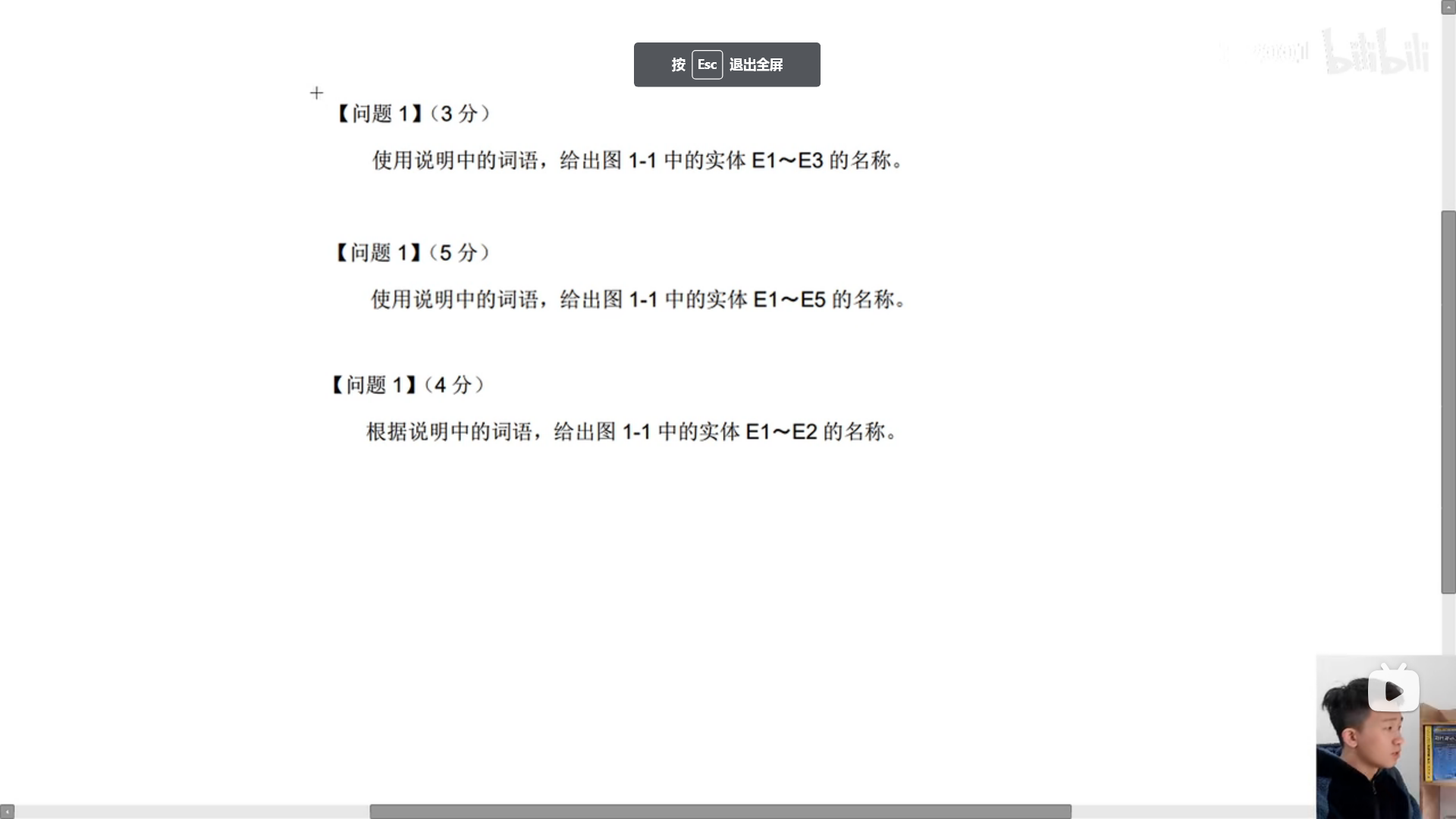
示例
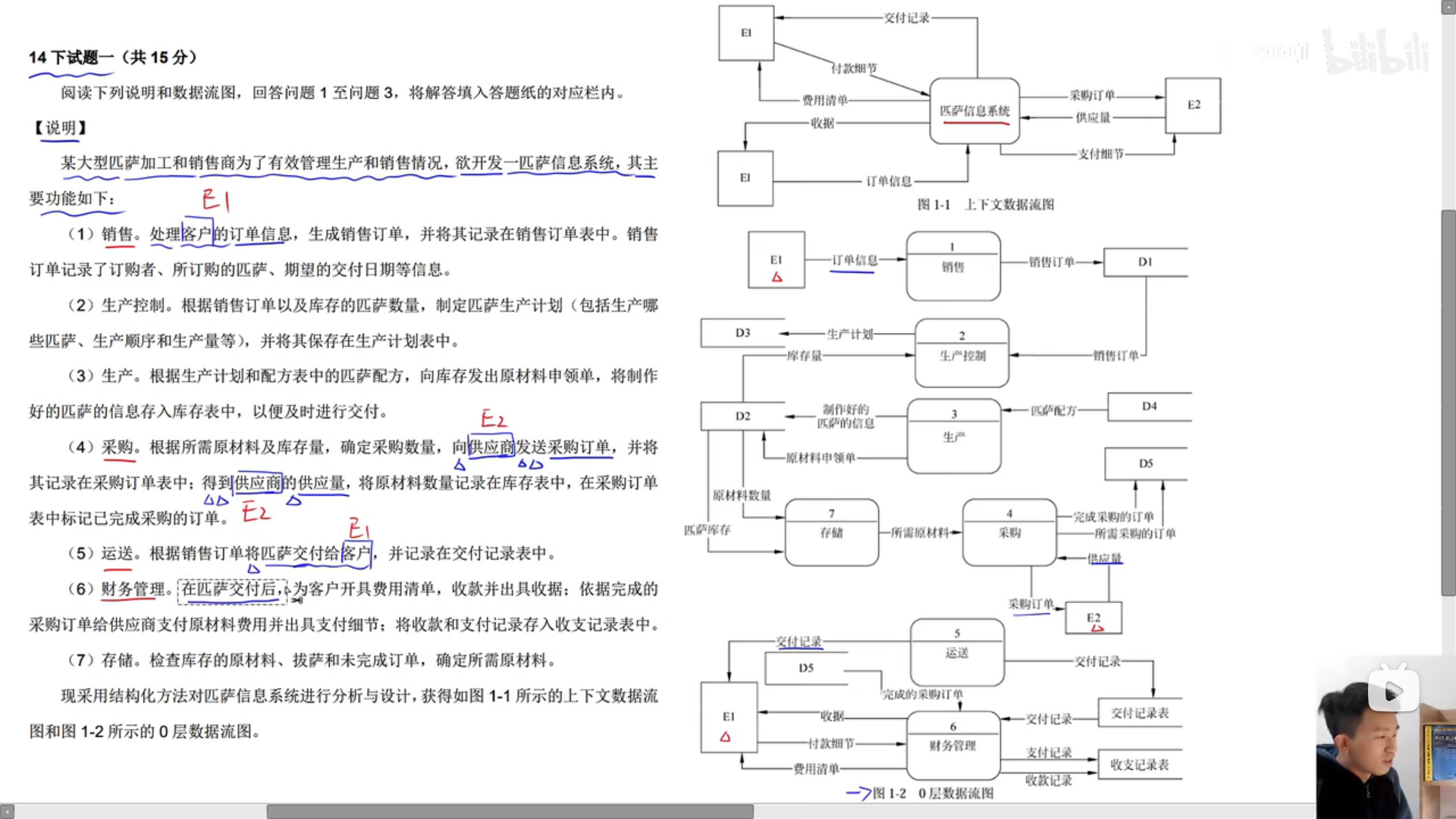
问题1答题格式
示例
E1 : 客户
问题2(找出数据存储)
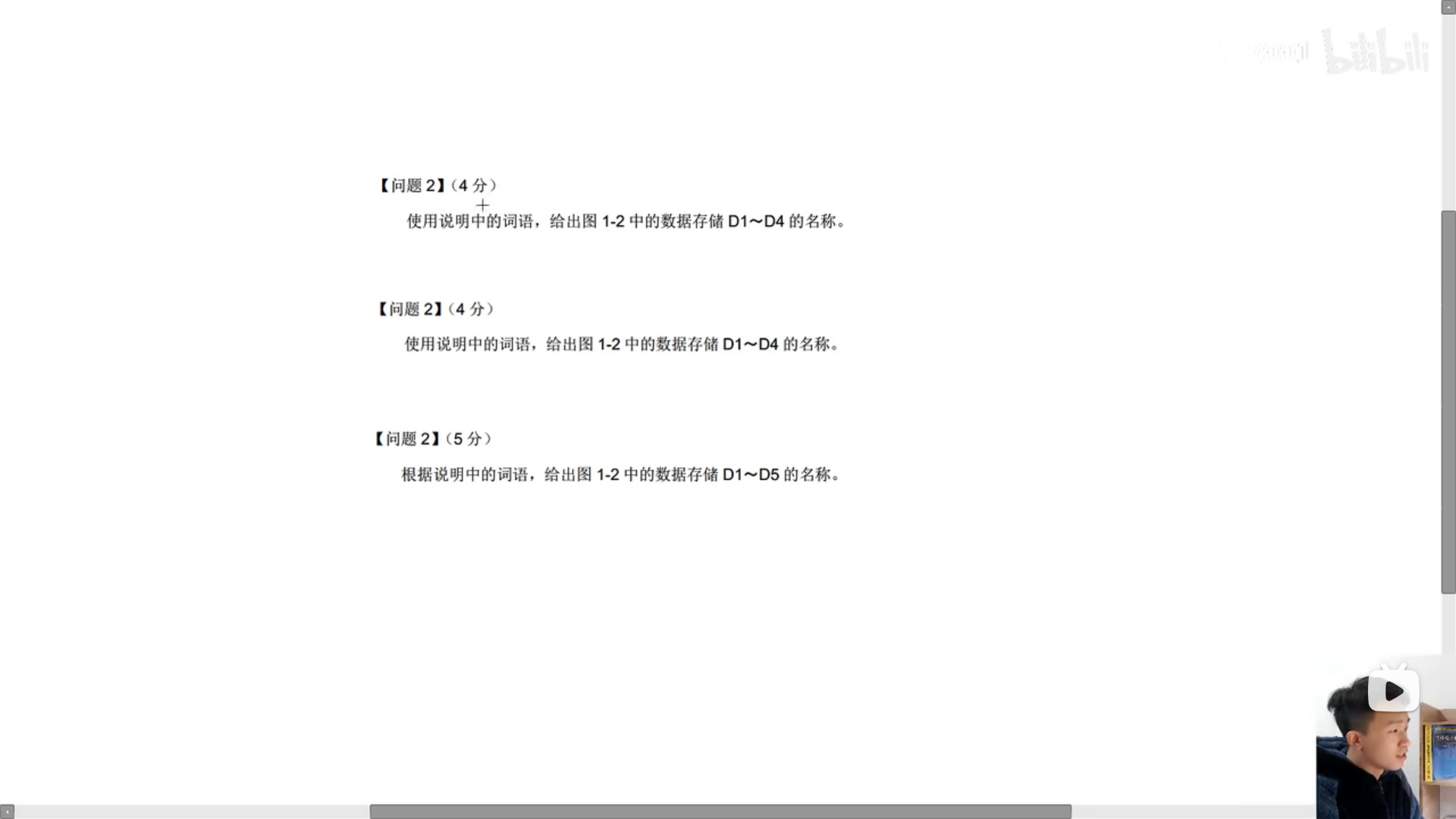
示例:
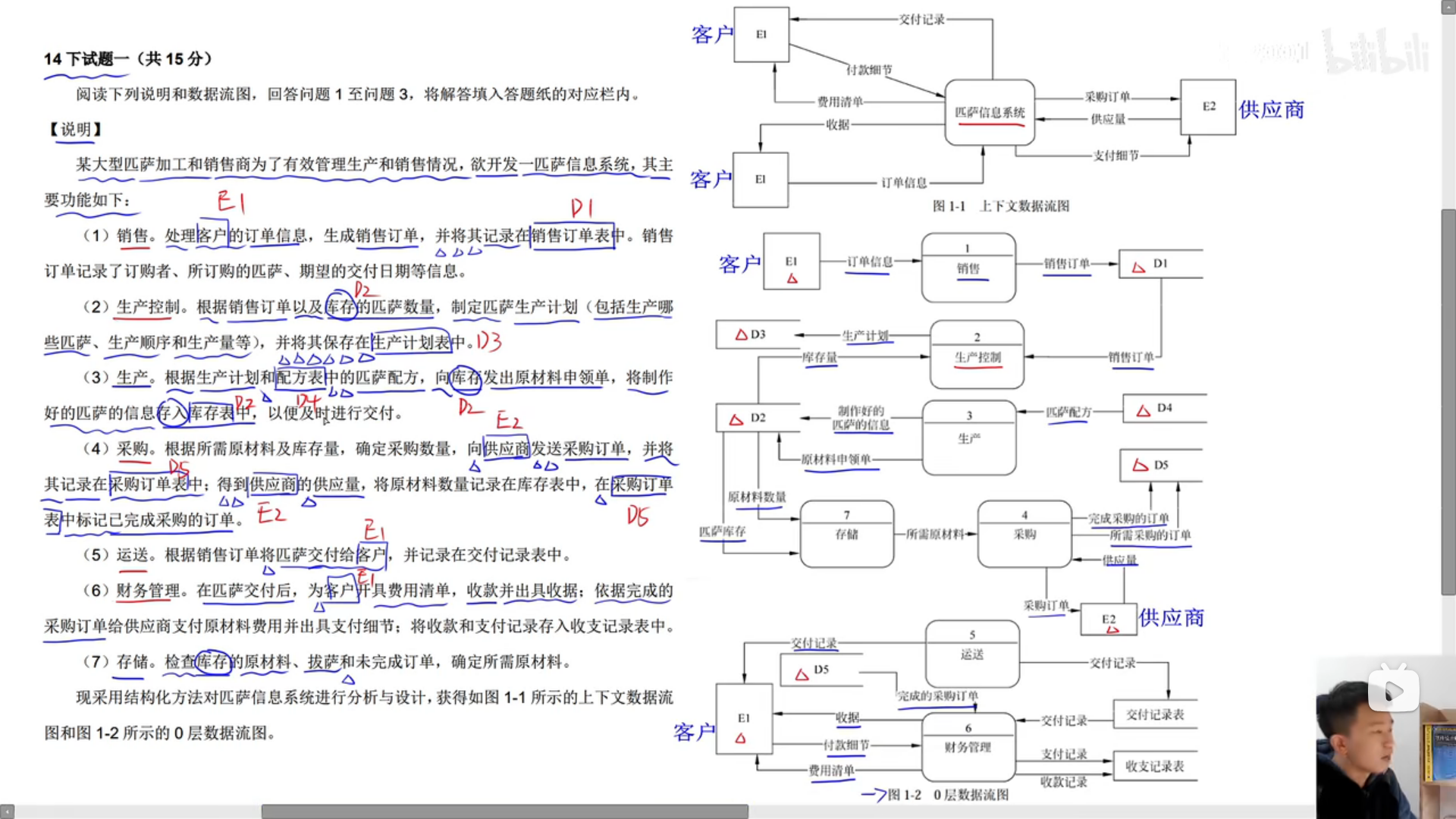
问题1答题格式
示例
D1:销售订单表
问题3(找出数据流中的起点和终点)
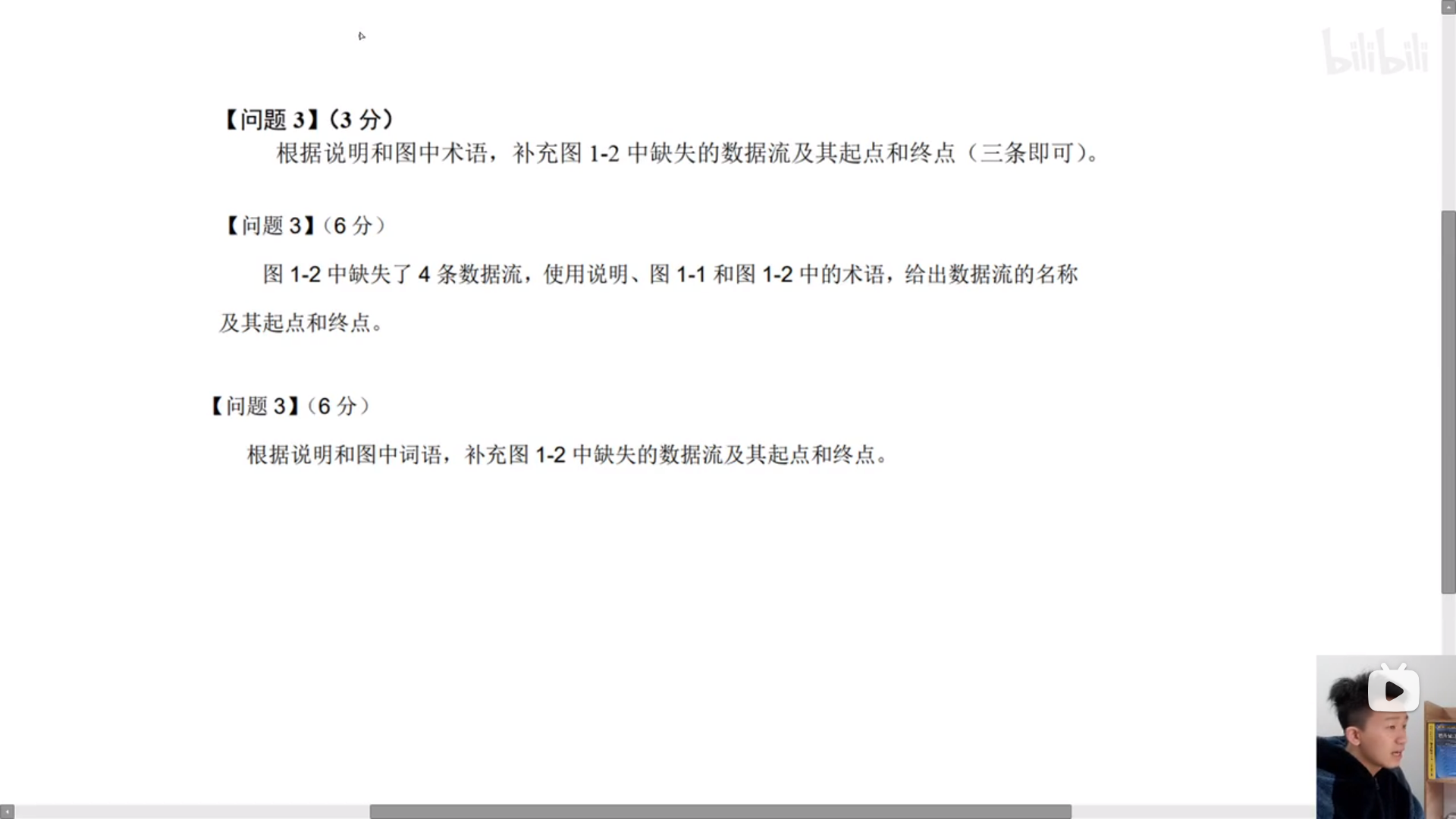
做题方法一(父图子图平衡)
父图和子图找不同的看同一数据流是否一样(一样就划去过滤),未一样看是否缺失数据流
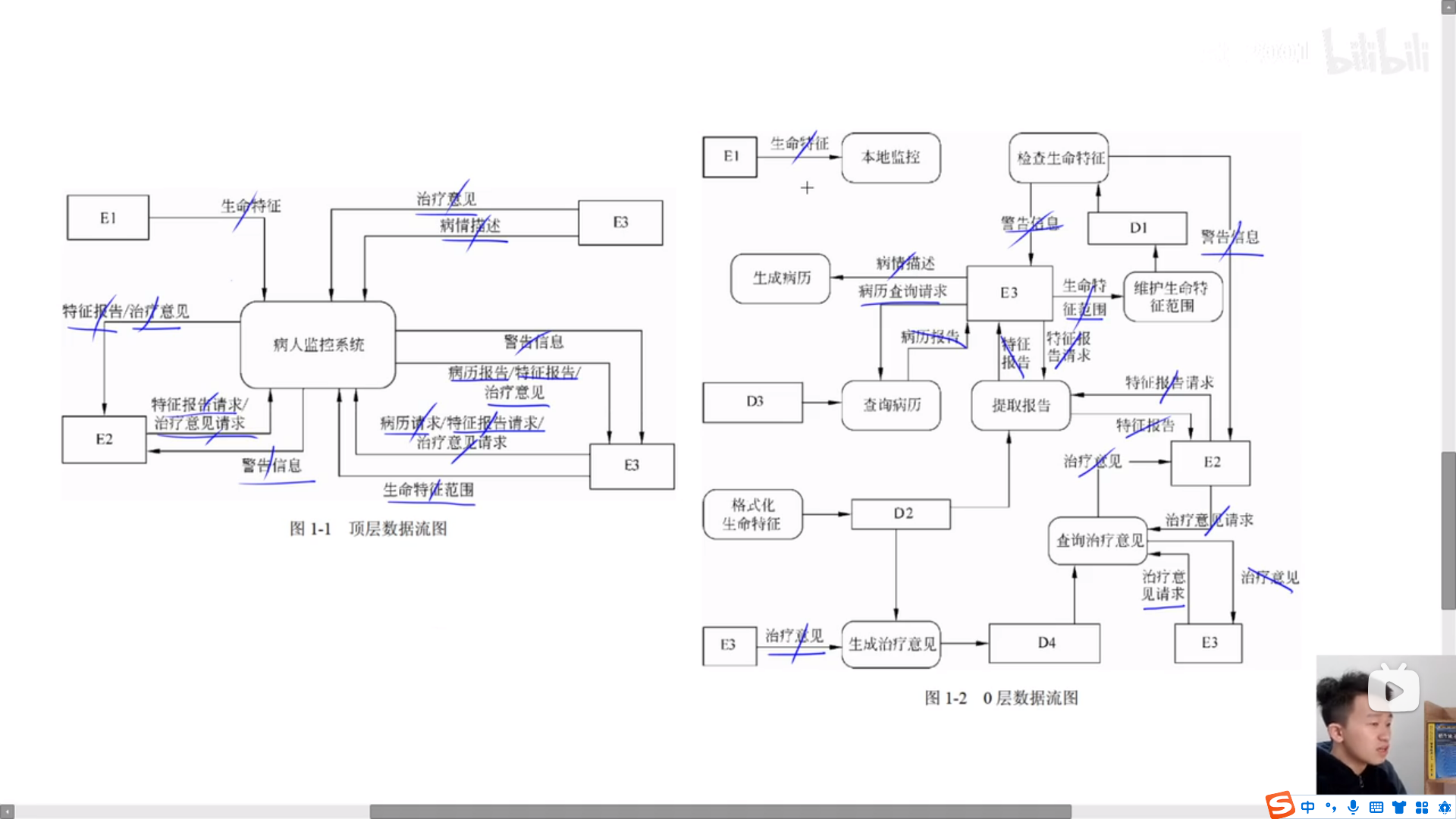
做题方法二(加工既有输入数据流也有输出数据流)
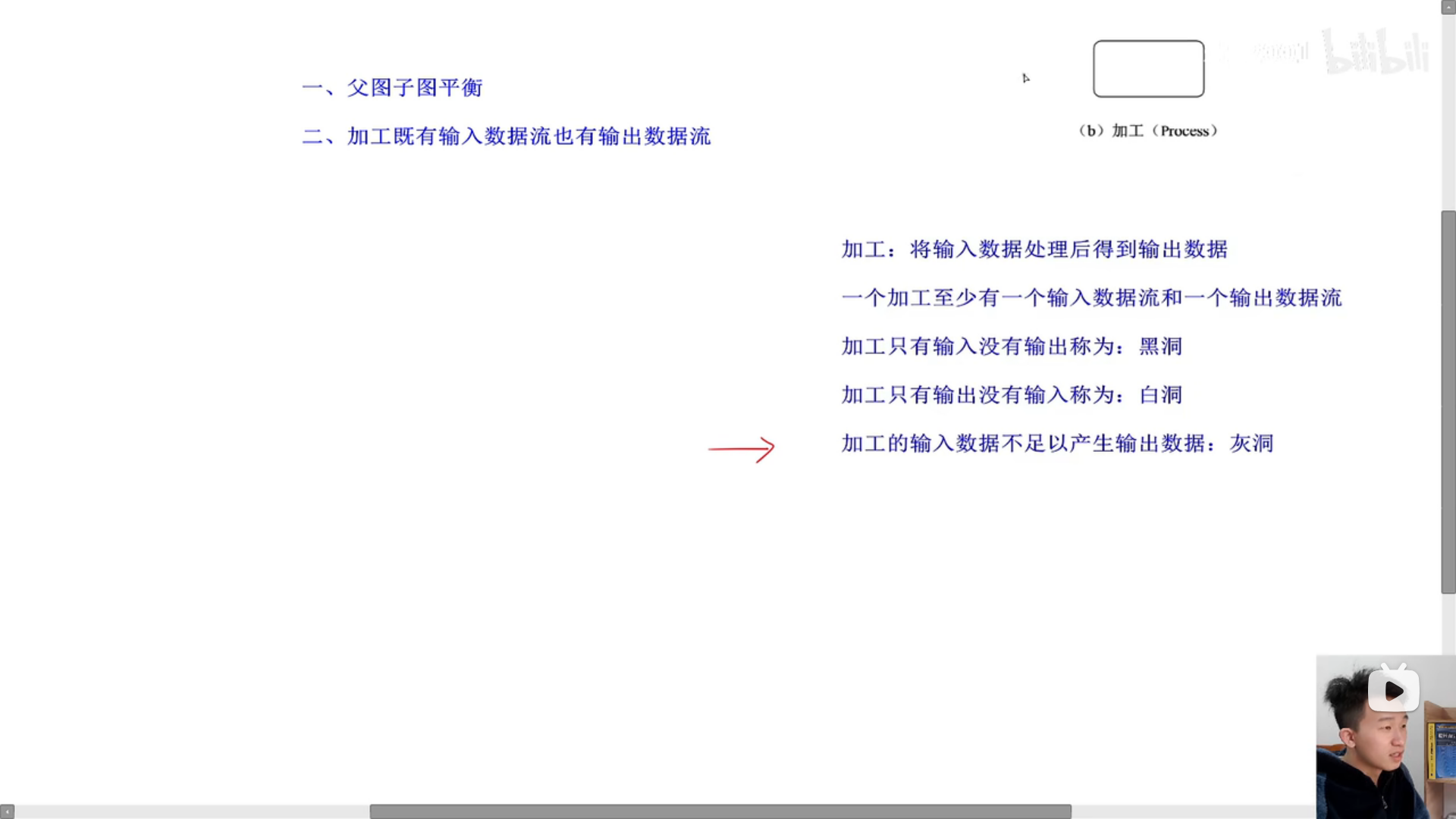
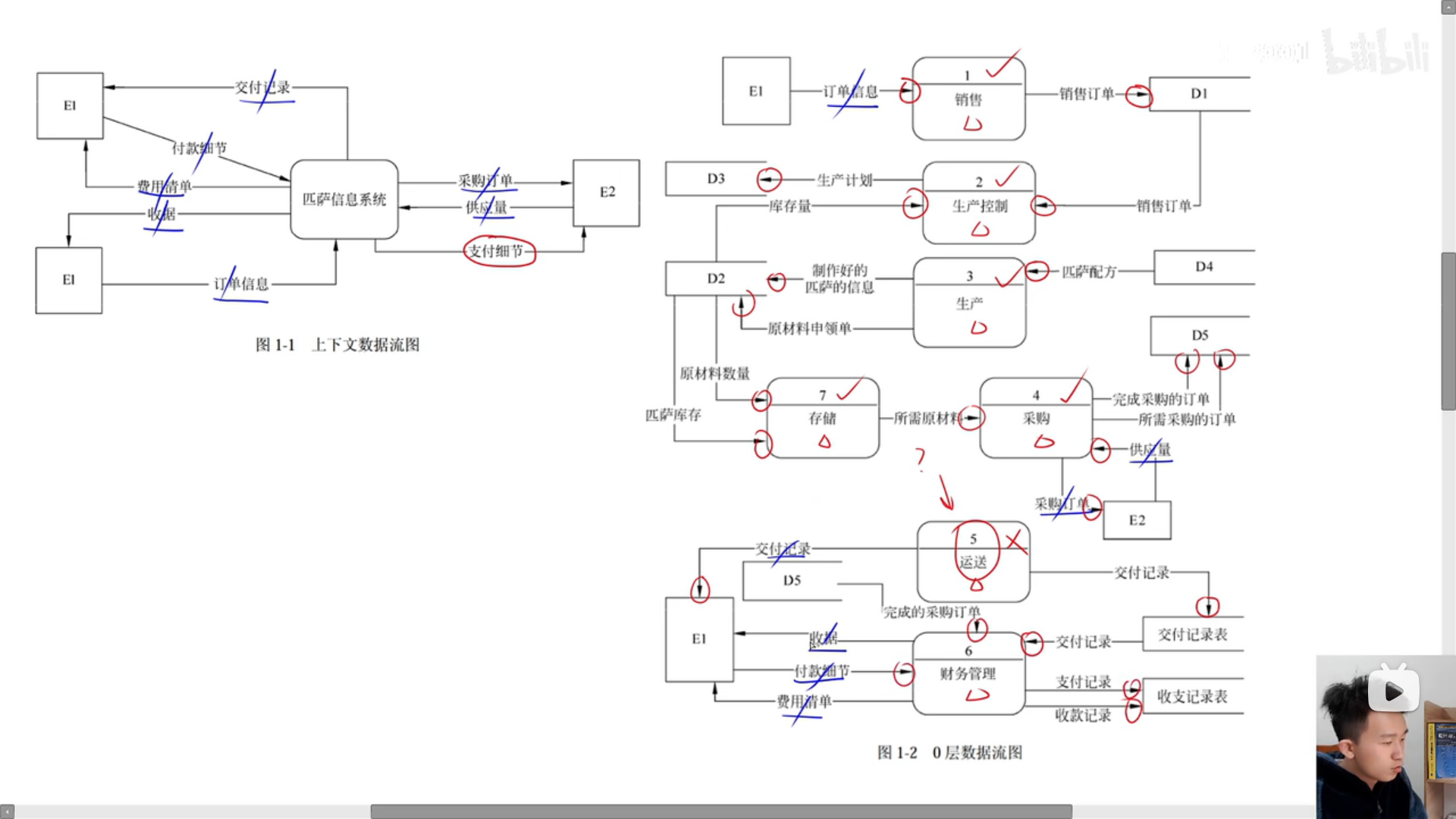
必须满足加工至少有一个输入数据流和至少有一个输出数据流,否则就缺数据流
做题方法三(数据守恒)
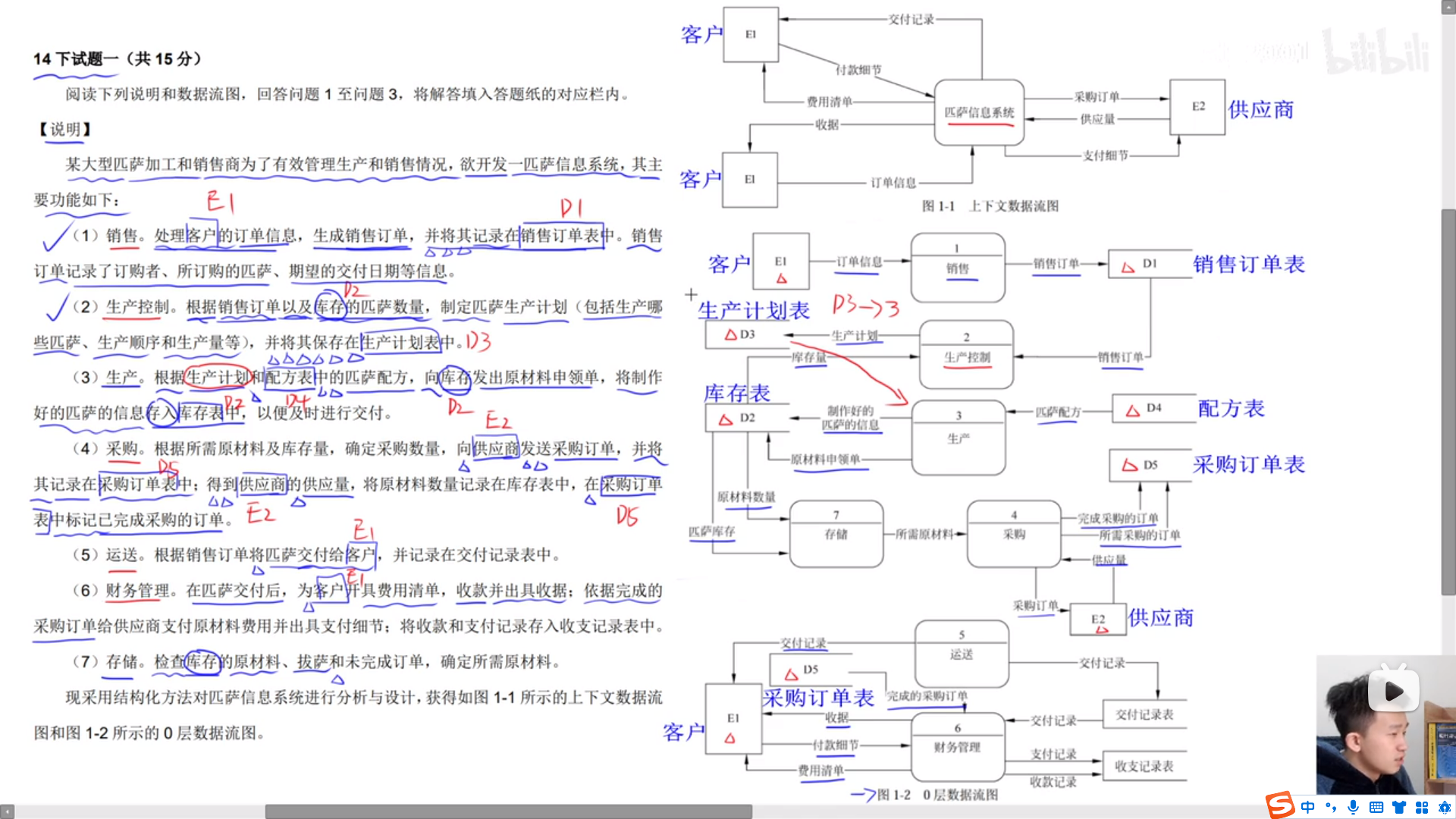
图文匹配,是否缺失数据流
答题格式
缺失数据流(起点或终点必须有一个是加工);否则错误
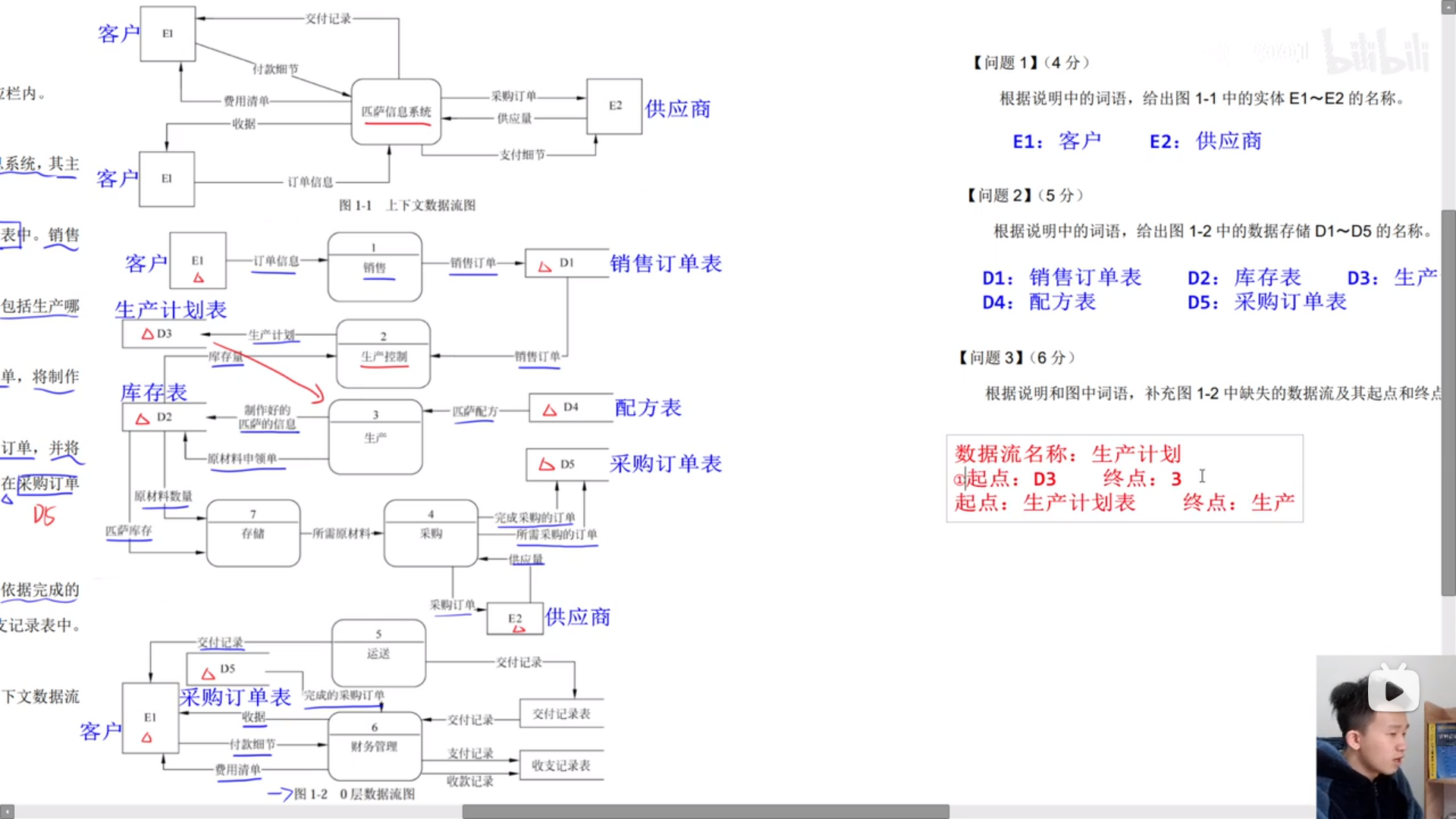
二大题知识点
E-R图基本图形元素
实体

弱实体
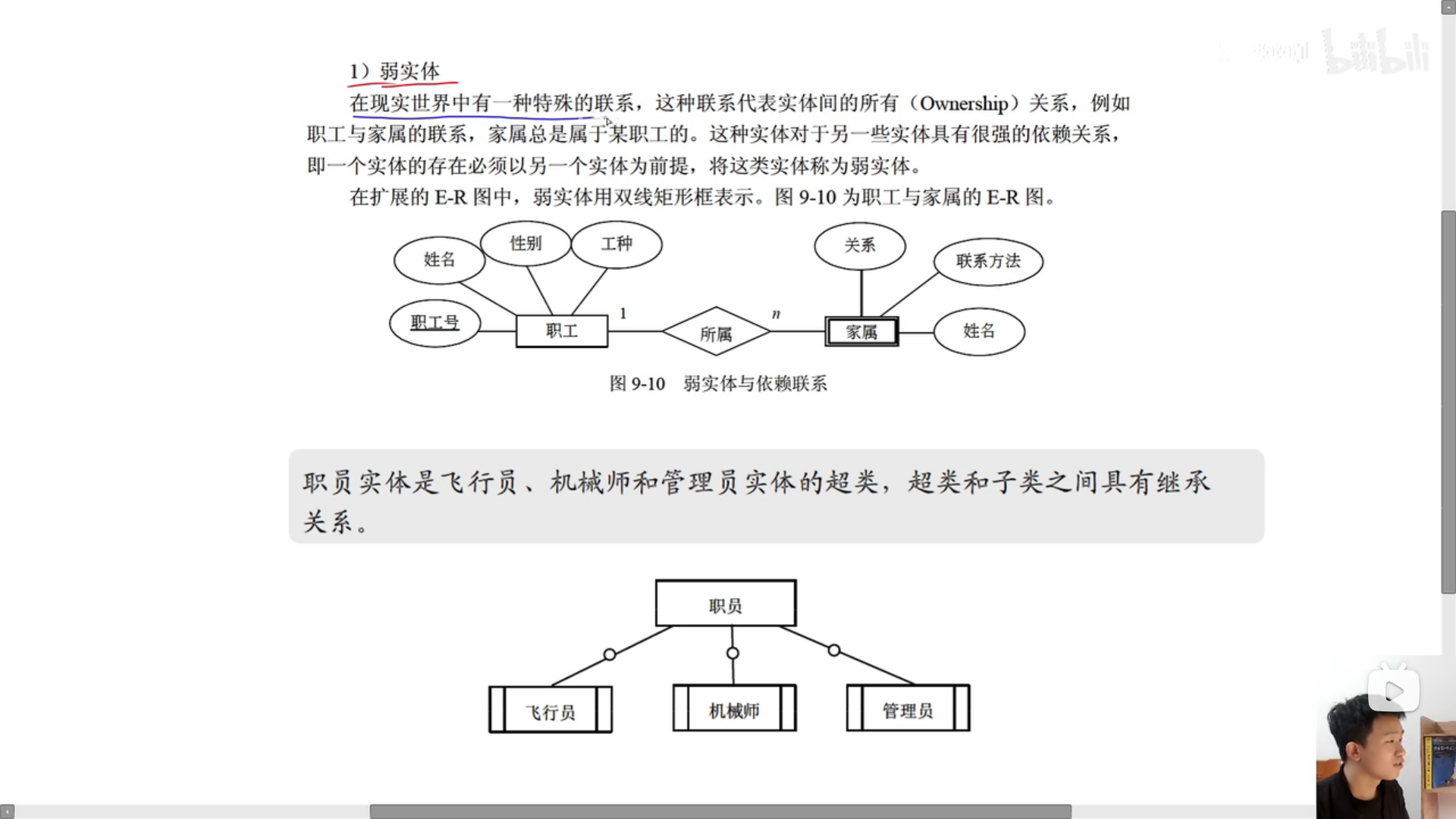
属性
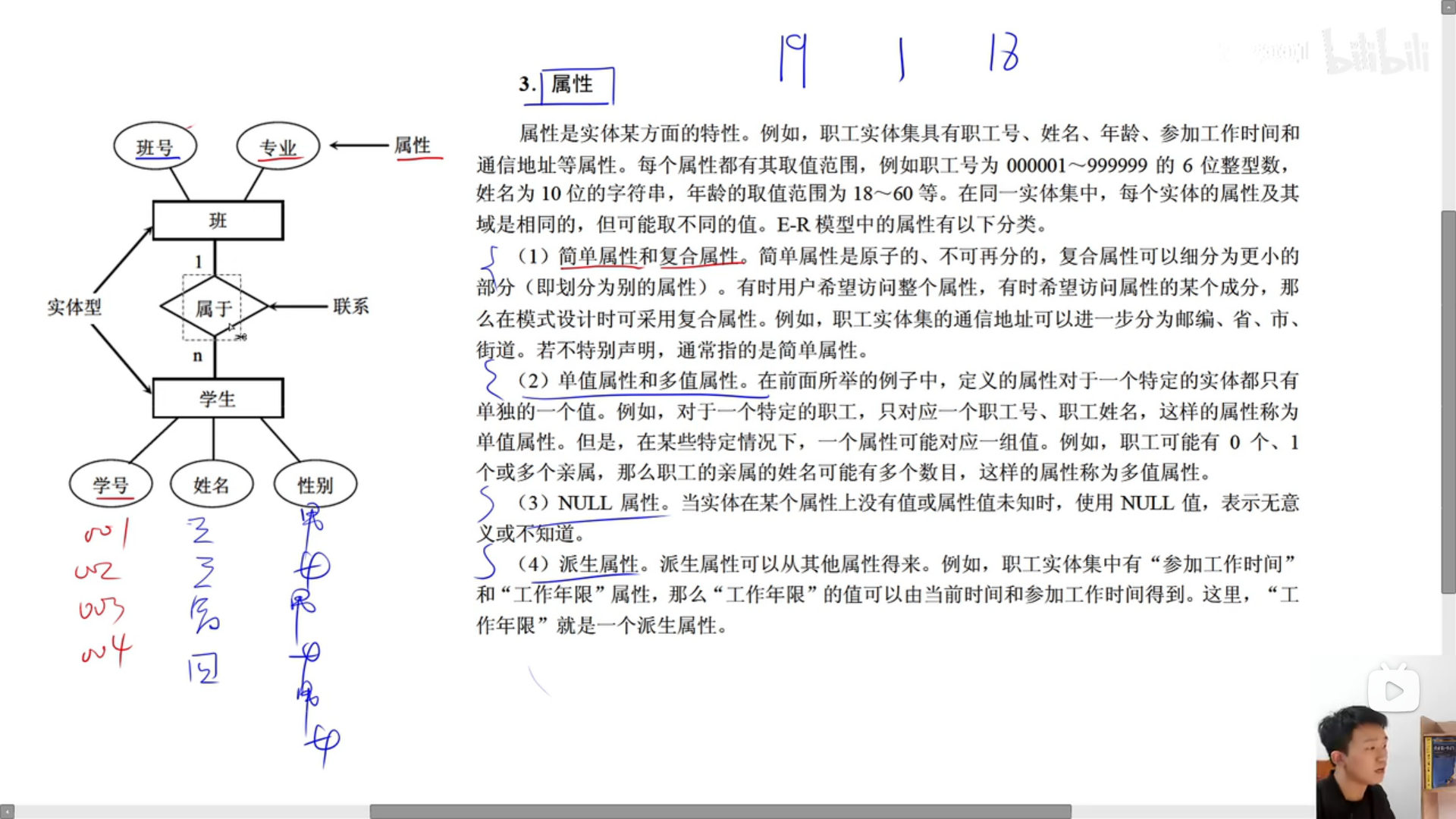
联系
两个实体之间的联系
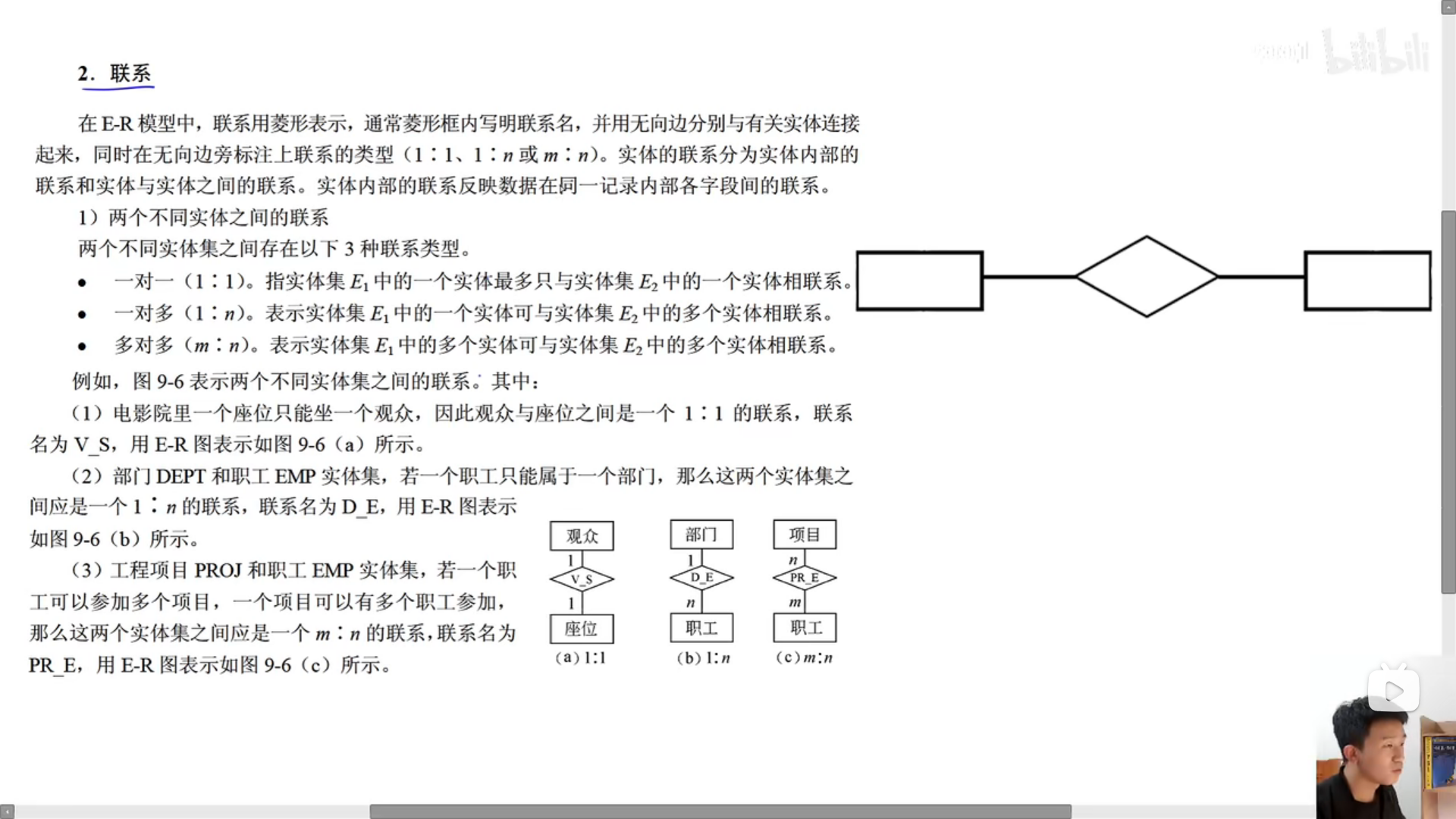
三个实体之间的联系
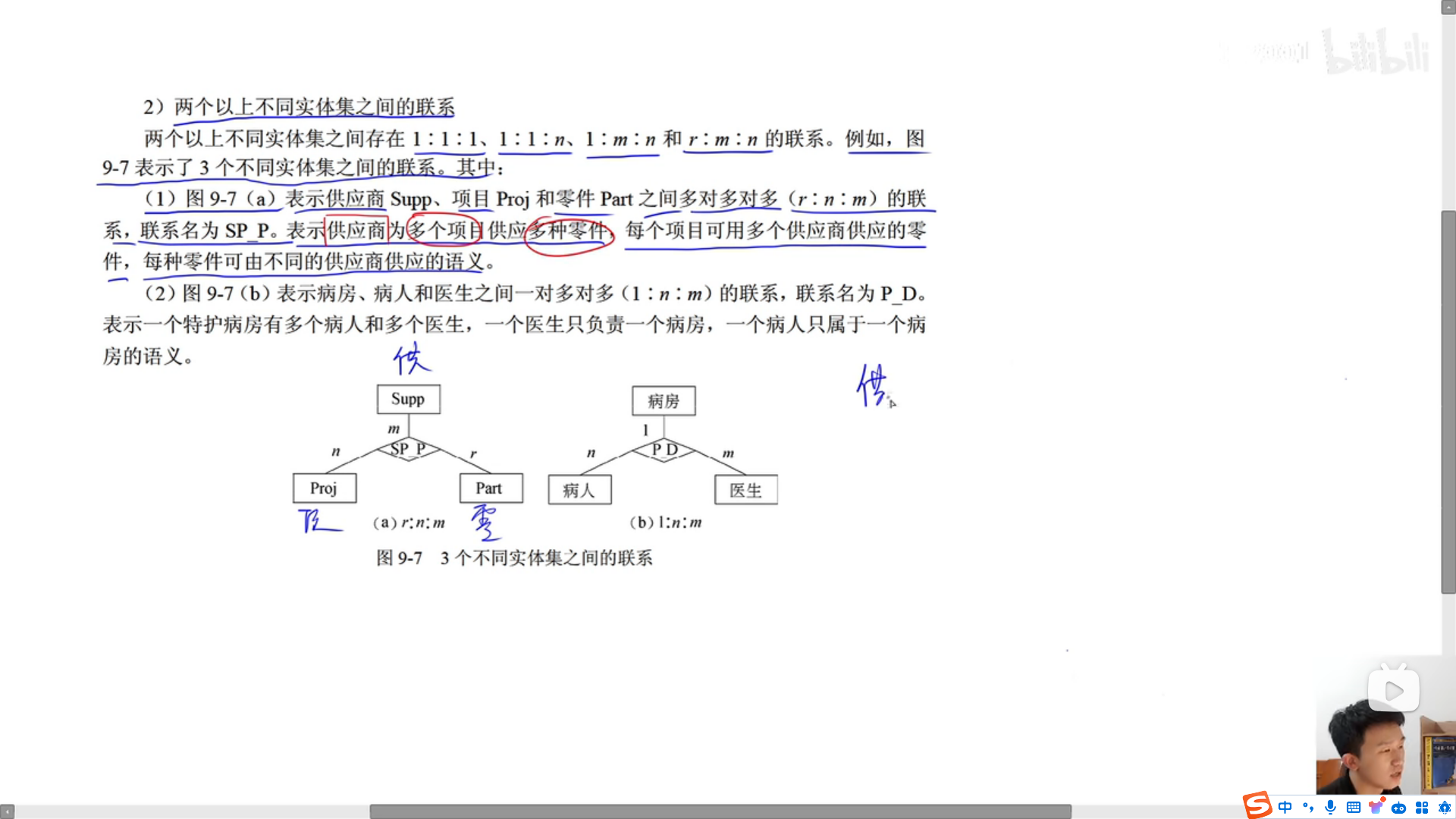
关系模式和主外键
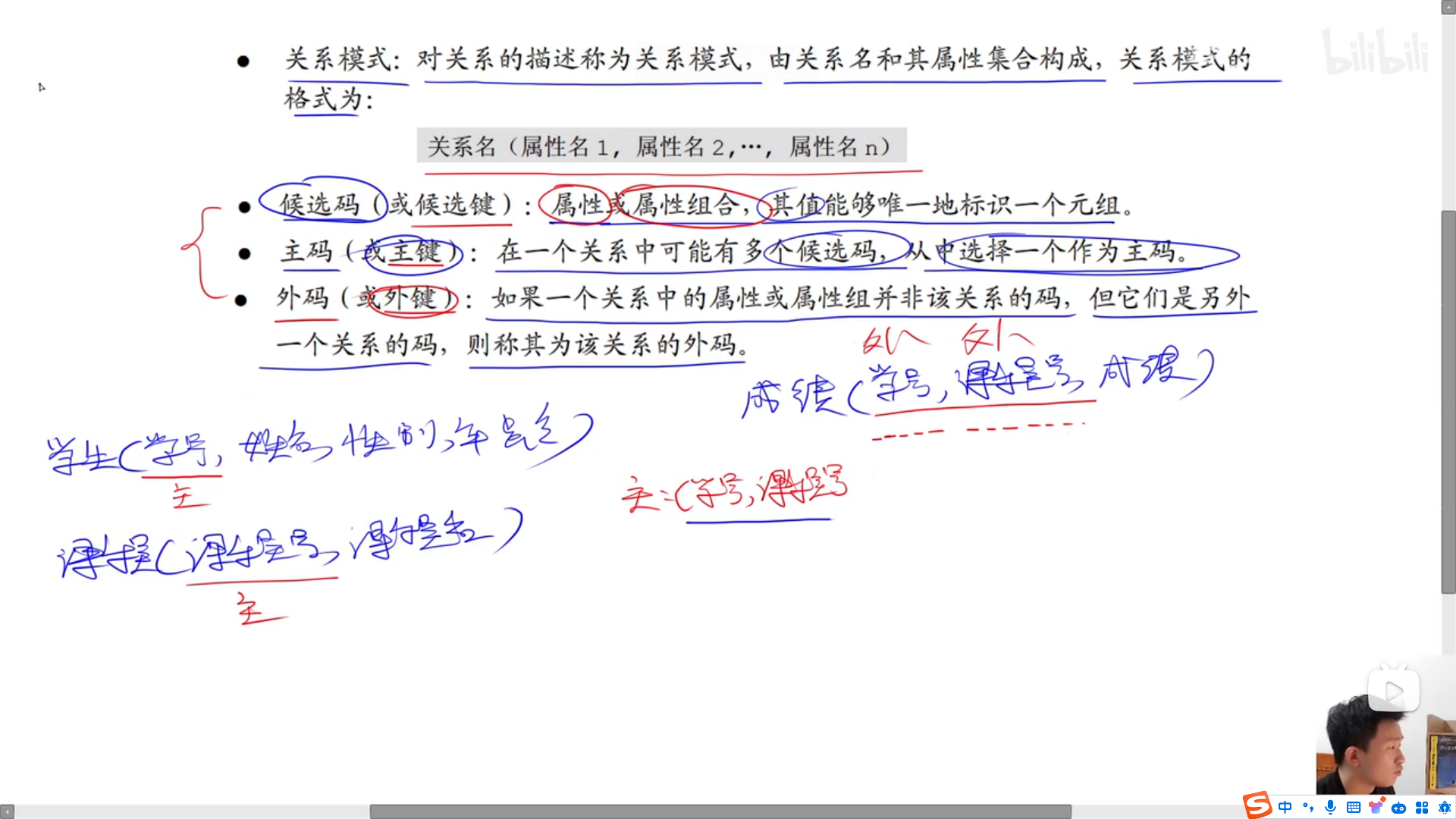
www.phind.com解惑?
外键一定是别的表的主键吗
外键 不一定 是 别的表的主键
ANSWER | PHIND V6 MODEL
外键并不一定是别的表的主键。虽然在大多数情况下,外键通常是指向另一个表的主键,但这并不是强制的。实际上,外键可以是另一个表中的任何唯一键,不一定是主键zhuanlan.zhihu.com。
例如,假设我们有两个表,一个是 dc_standard,一个是 dc_soil。在 dc_standard 表中有一个 id 字段,但这个字段不是主键。在 dc_soil 表中有一个 dc_standard_id 字段,我们想把 dc_standard_id 设置为外键,关联 dc_standard 表的 id。这种情况下,我们需要先把 dc_standard 表的 id 设置为唯一键,然后再设置外键zhuanlan.zhihu.com。
外键的主要目的是控制可以存储在外键表中的数据,并控制对主键表中数据的更改。例如,如果在 Sales.SalesPerson 表中删除一个销售人员行,而这个销售人员的 ID 由 Sales.SalesOrderHeader 表中的销售订单使用,则这两个表之间关联的完整性将被破坏。外键约束防止这种情况发生。如果主键表中数据的更改使之与外键表中数据的链接失效,则这种更改将无法实现,从而确保了引用完整性cnblogs.com。
总的来说,虽然外键通常指向另一个表的主键,但这并不是必须的。外键可以是另一个表中的任何唯一键,只要这个键的值在另一个表中是唯一的,就可以作为外键。
关系模式联系转换
一对一转换
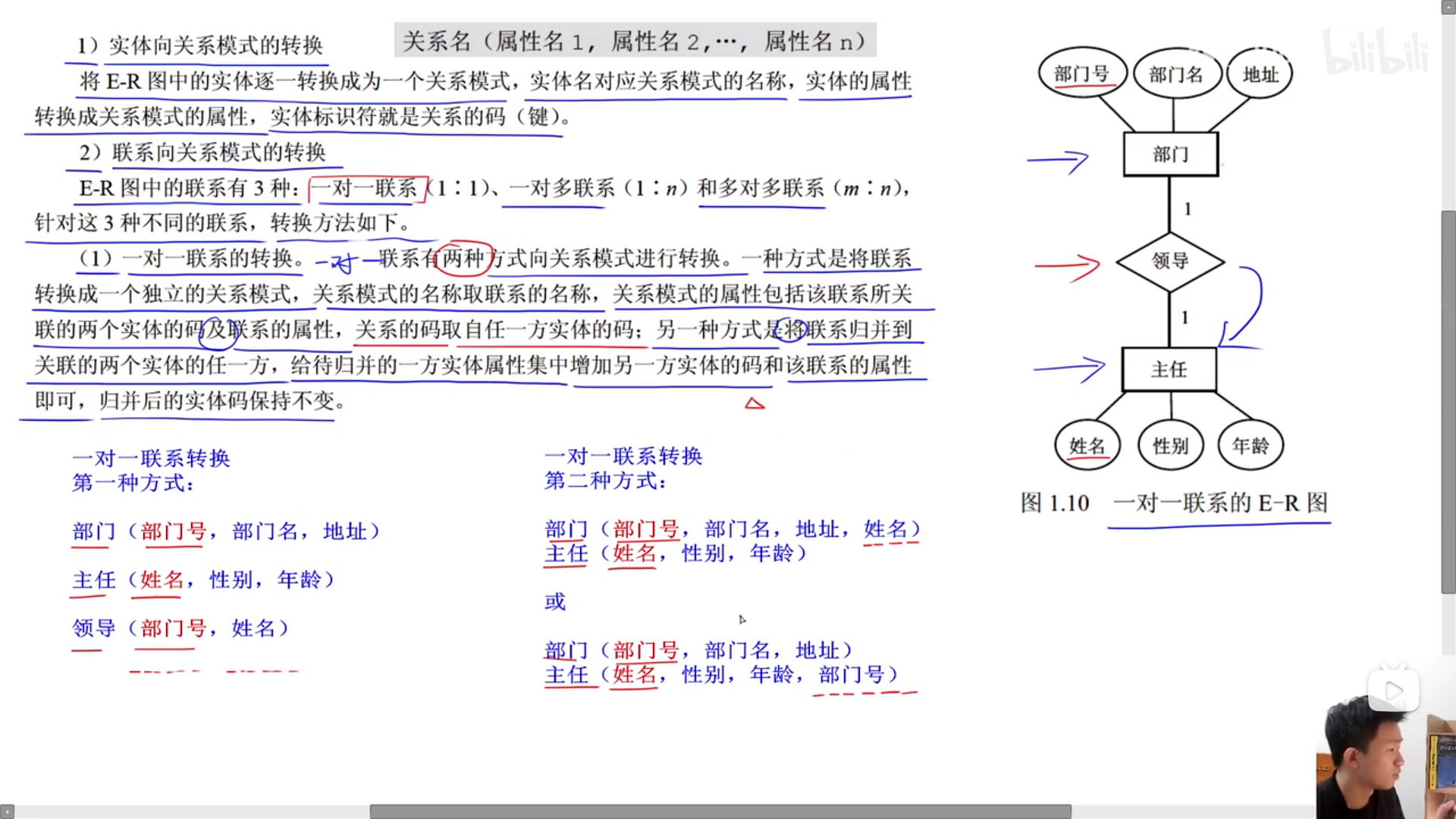
一对多转换
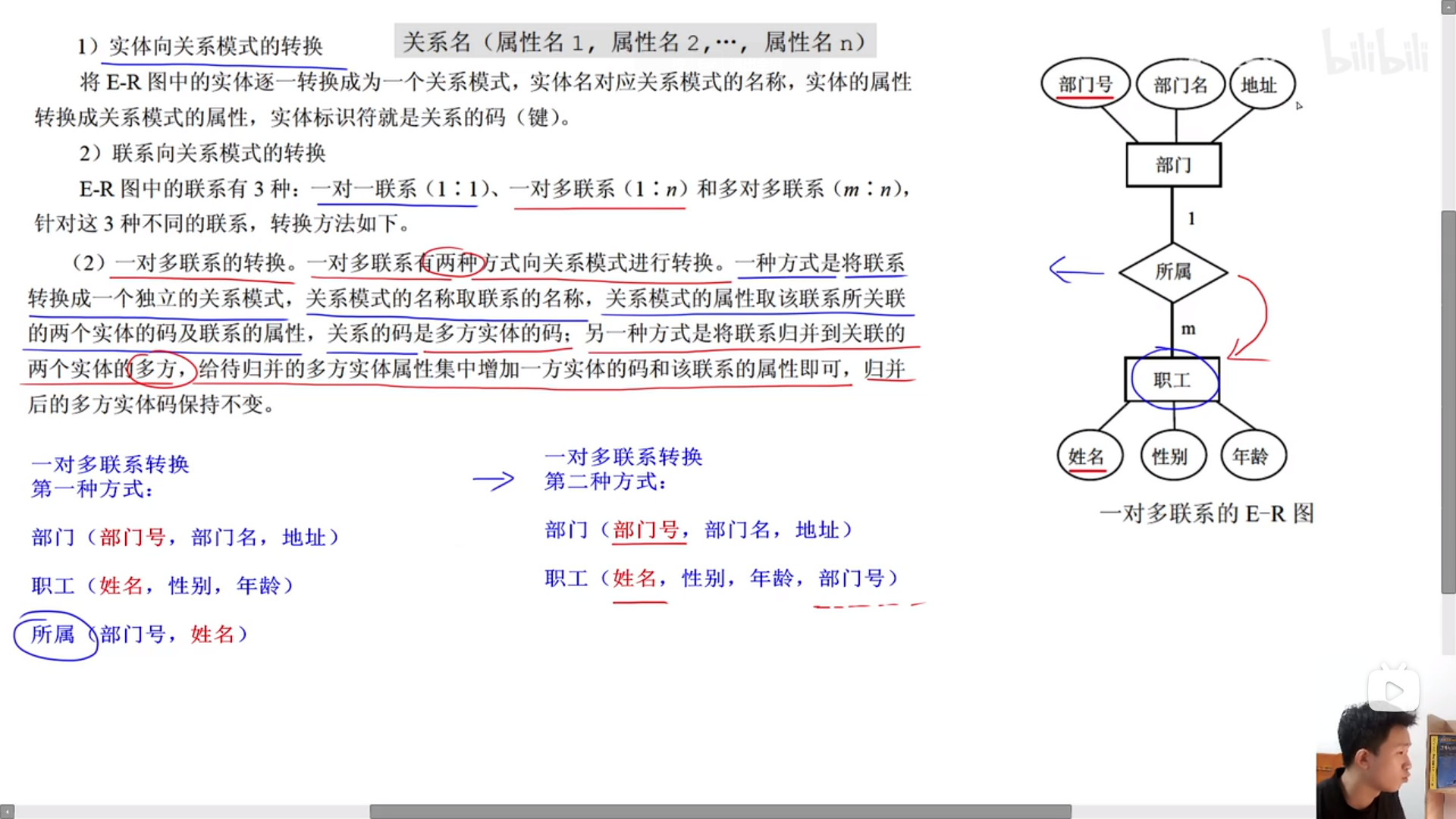
多对多转换
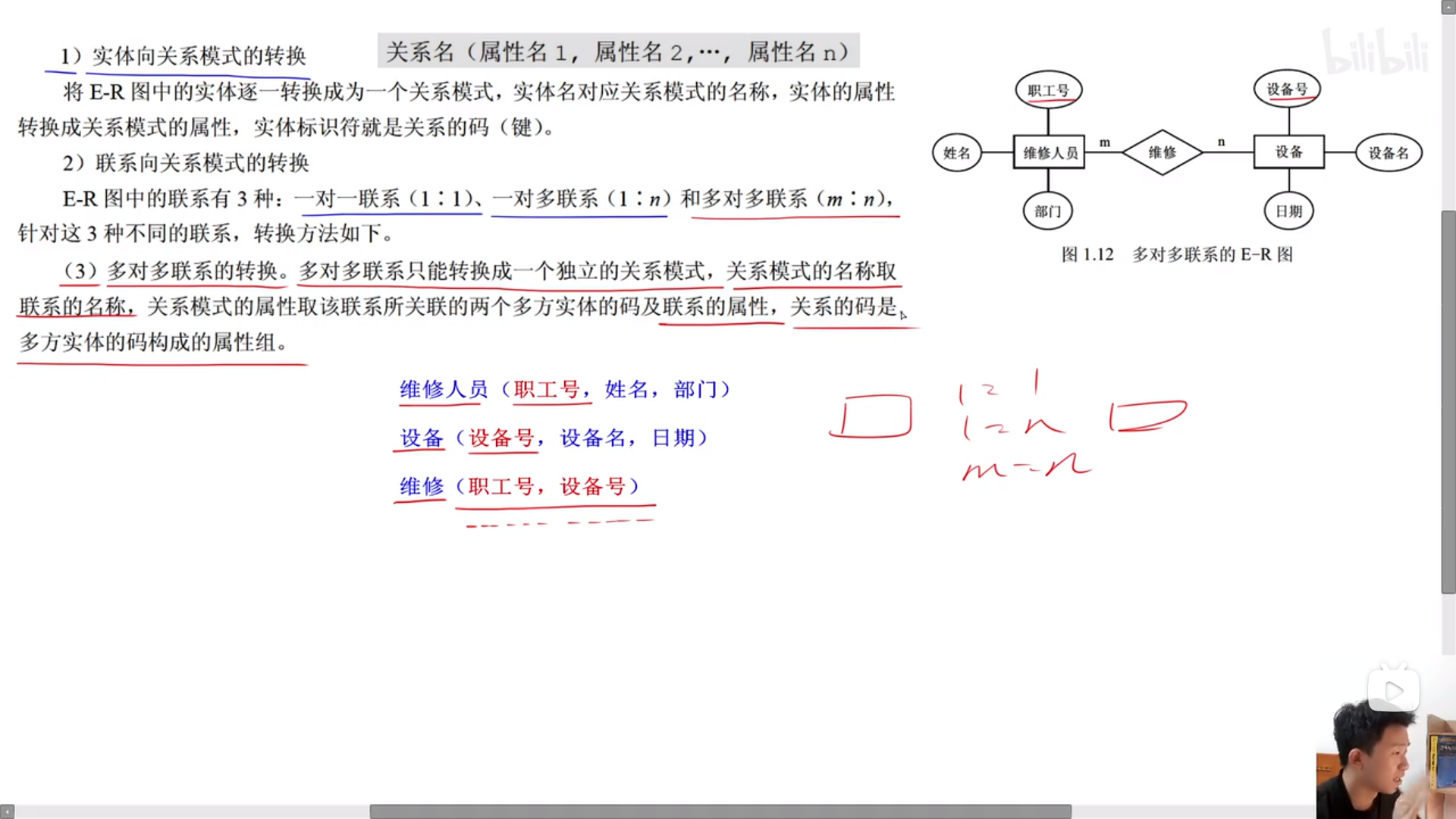
三个实体之间的联系转换

超类子类转换
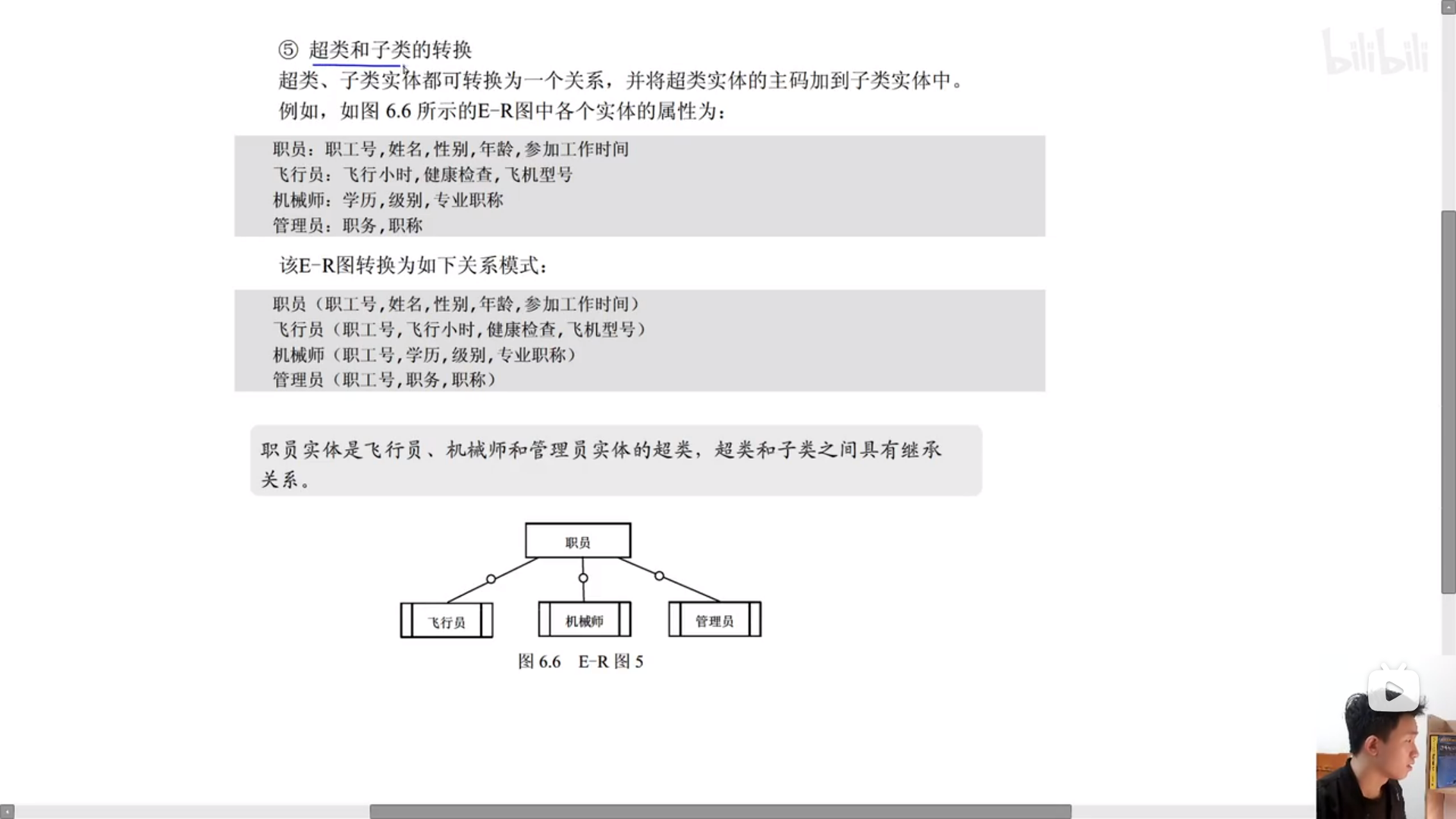
当出现联系之间的联系时(聚合实体)
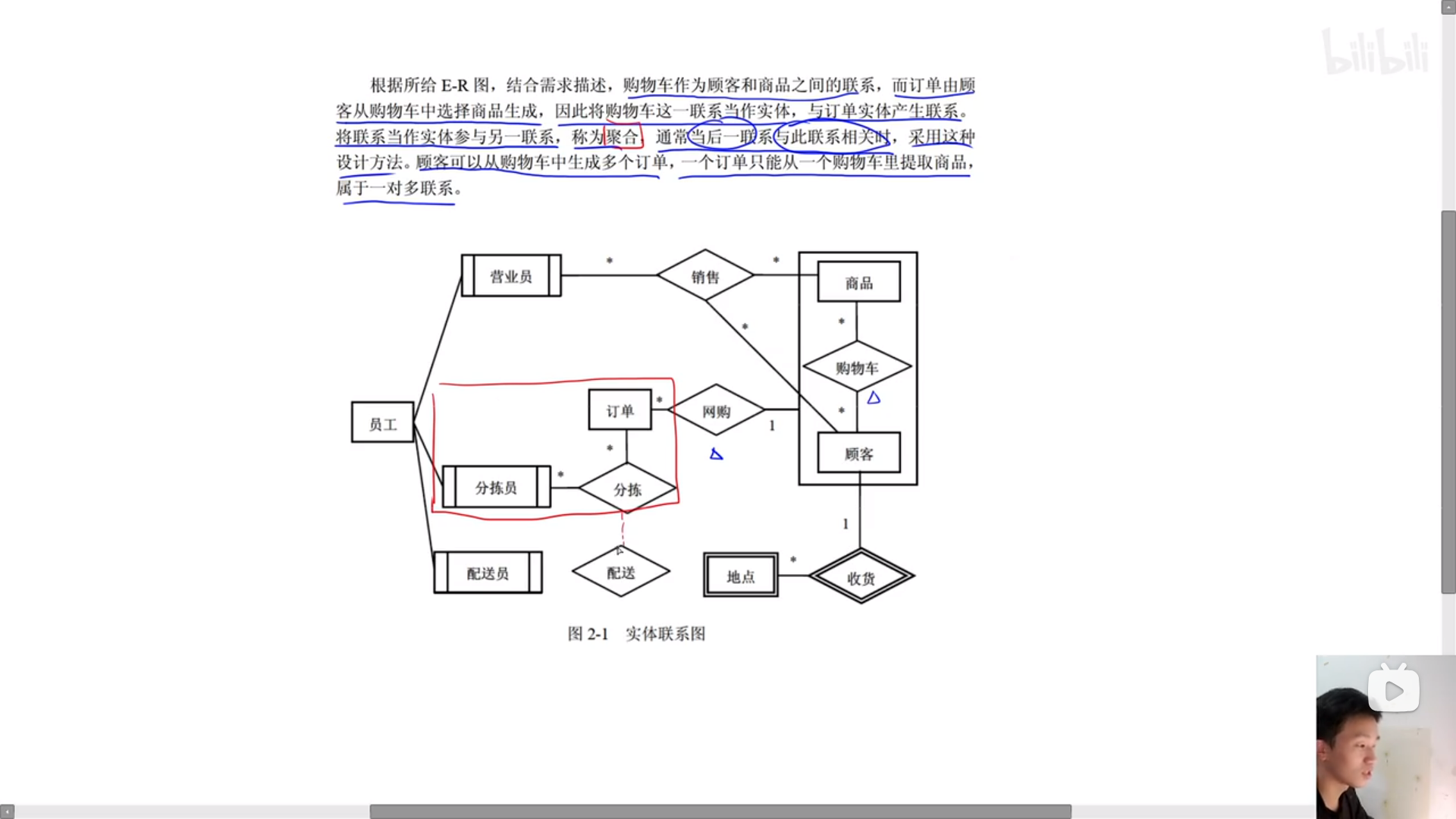
三大题知识点
UML类图
UML
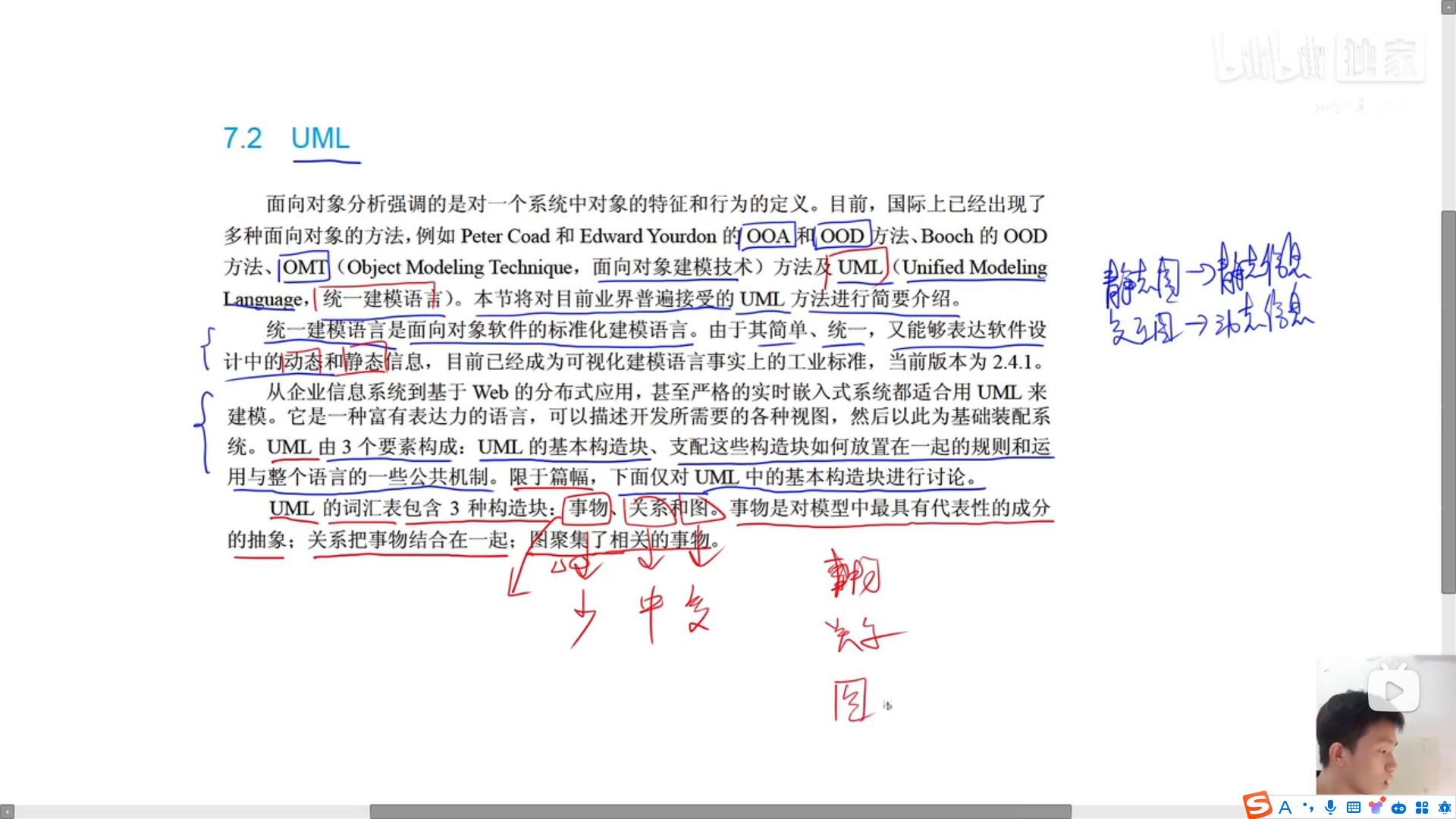
事务
对模型中具有代表性的成分的抽象;
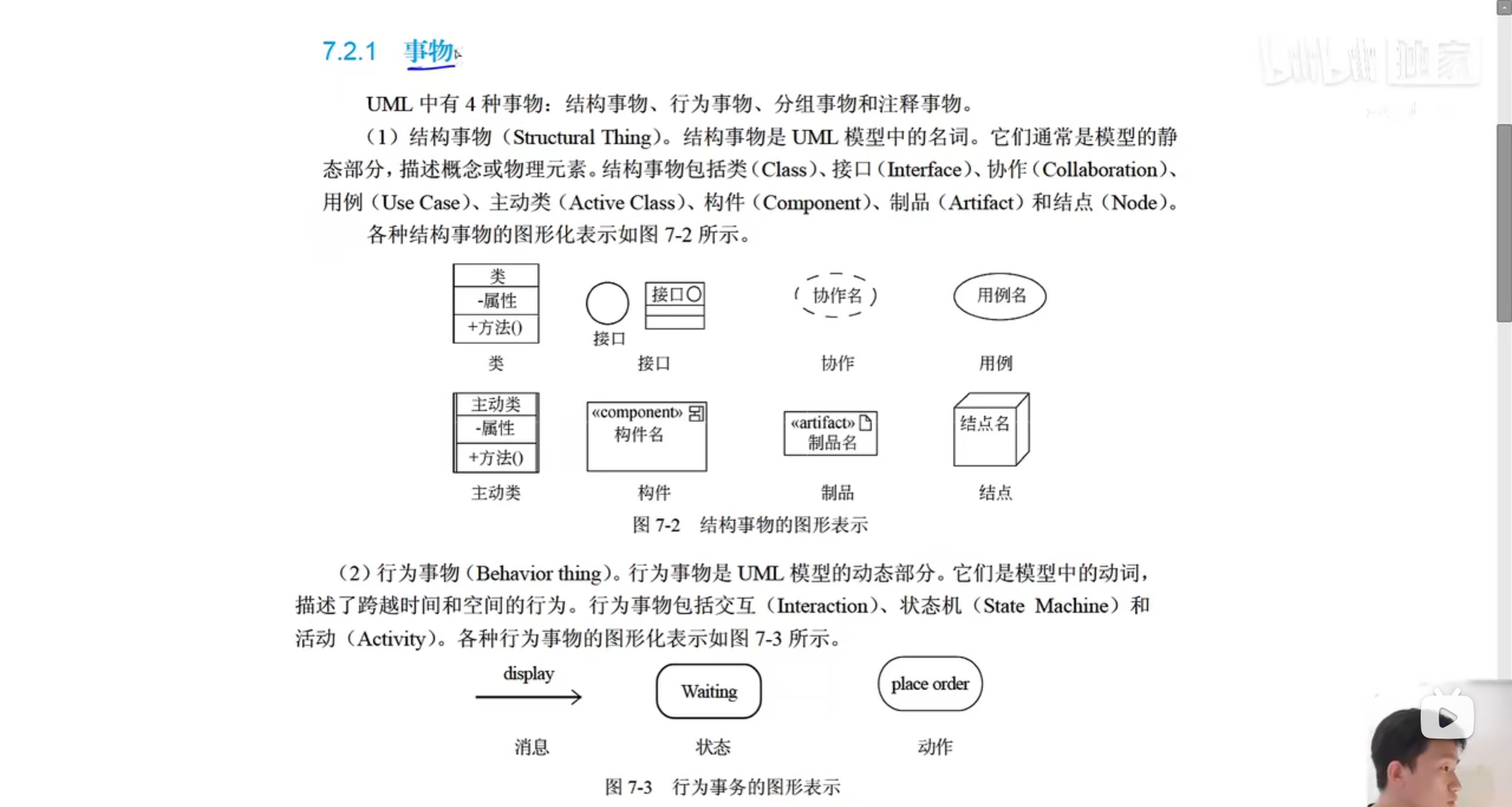

关系
依赖
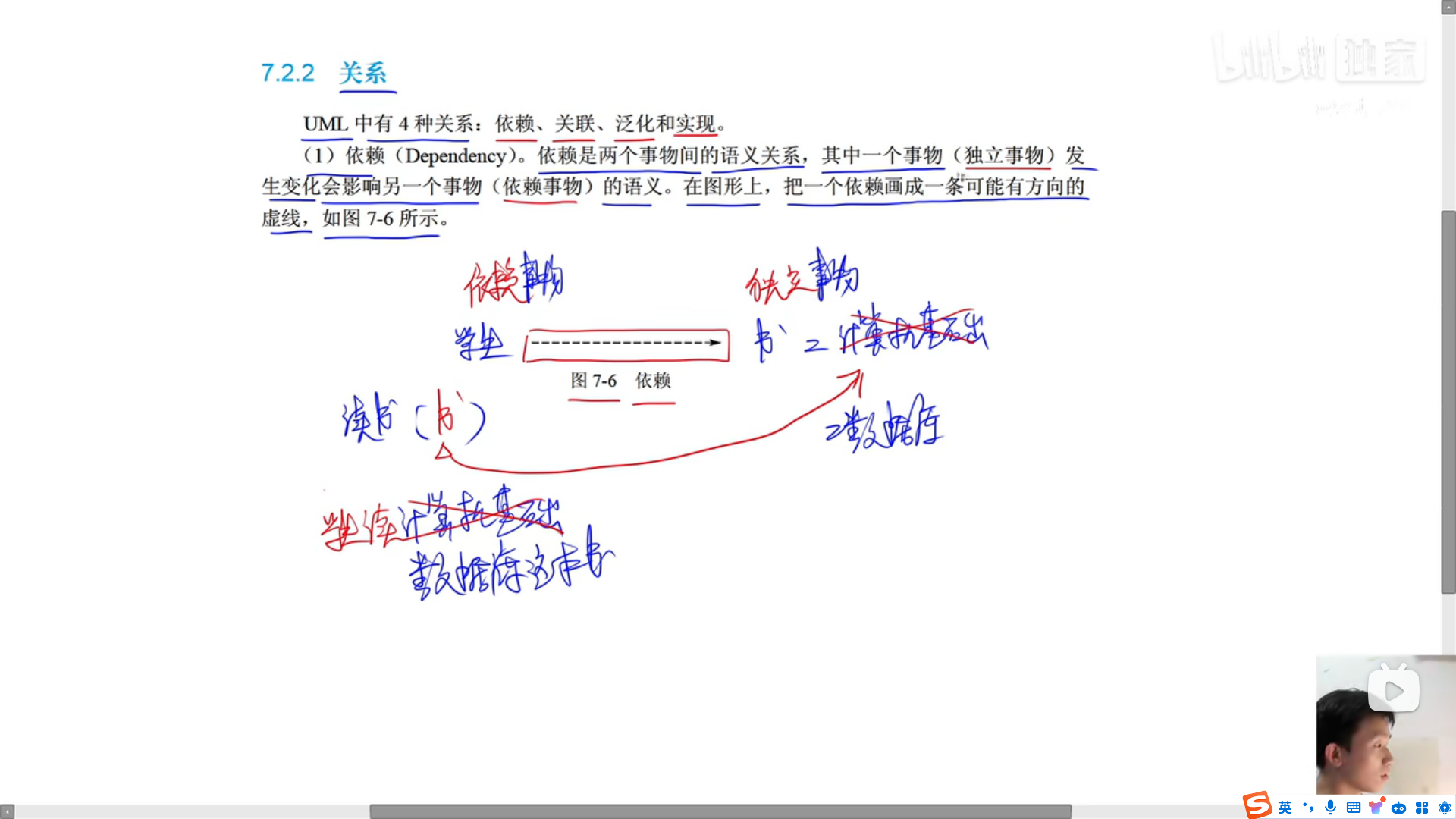
关联
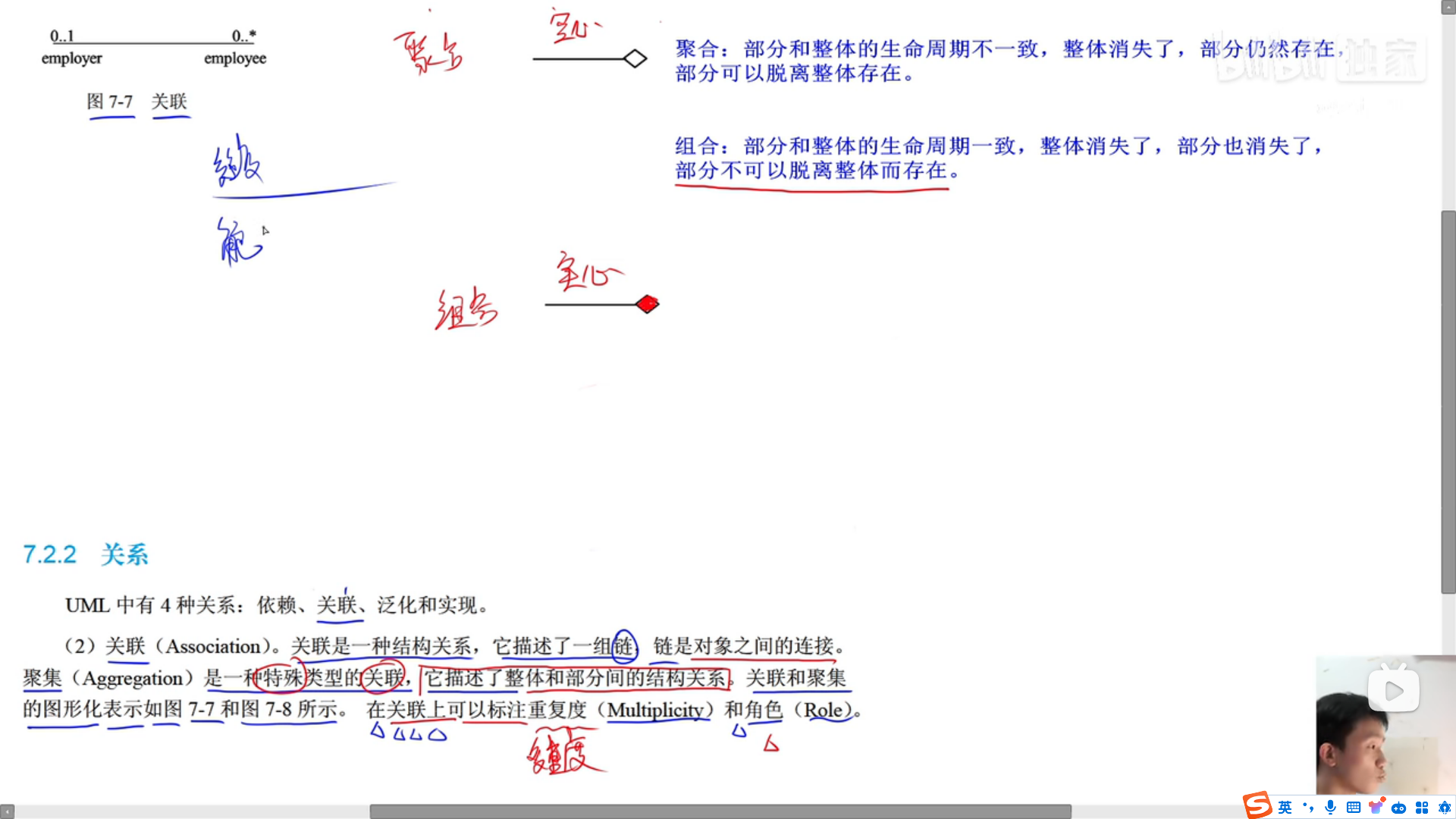
泛化
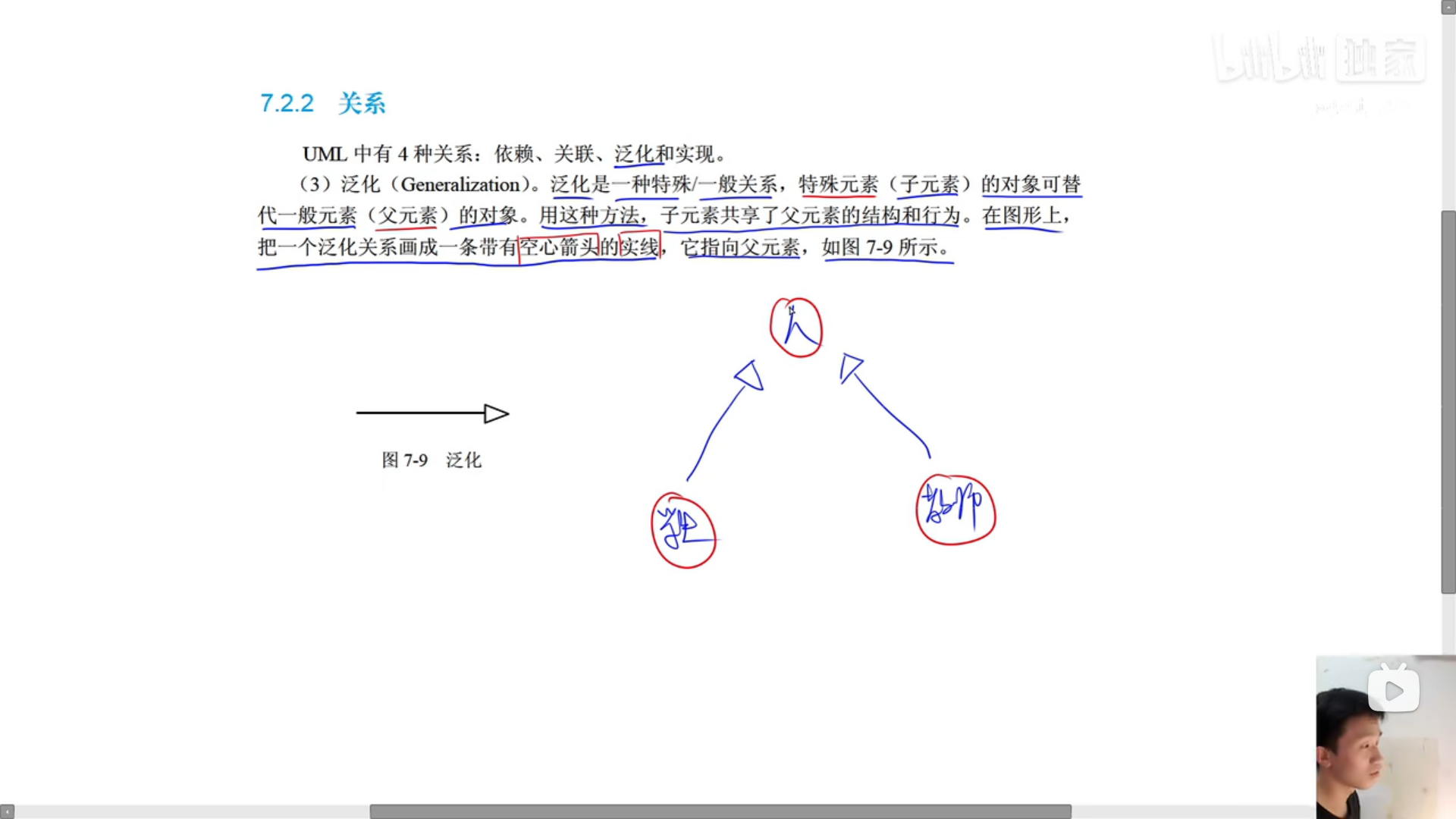
实现
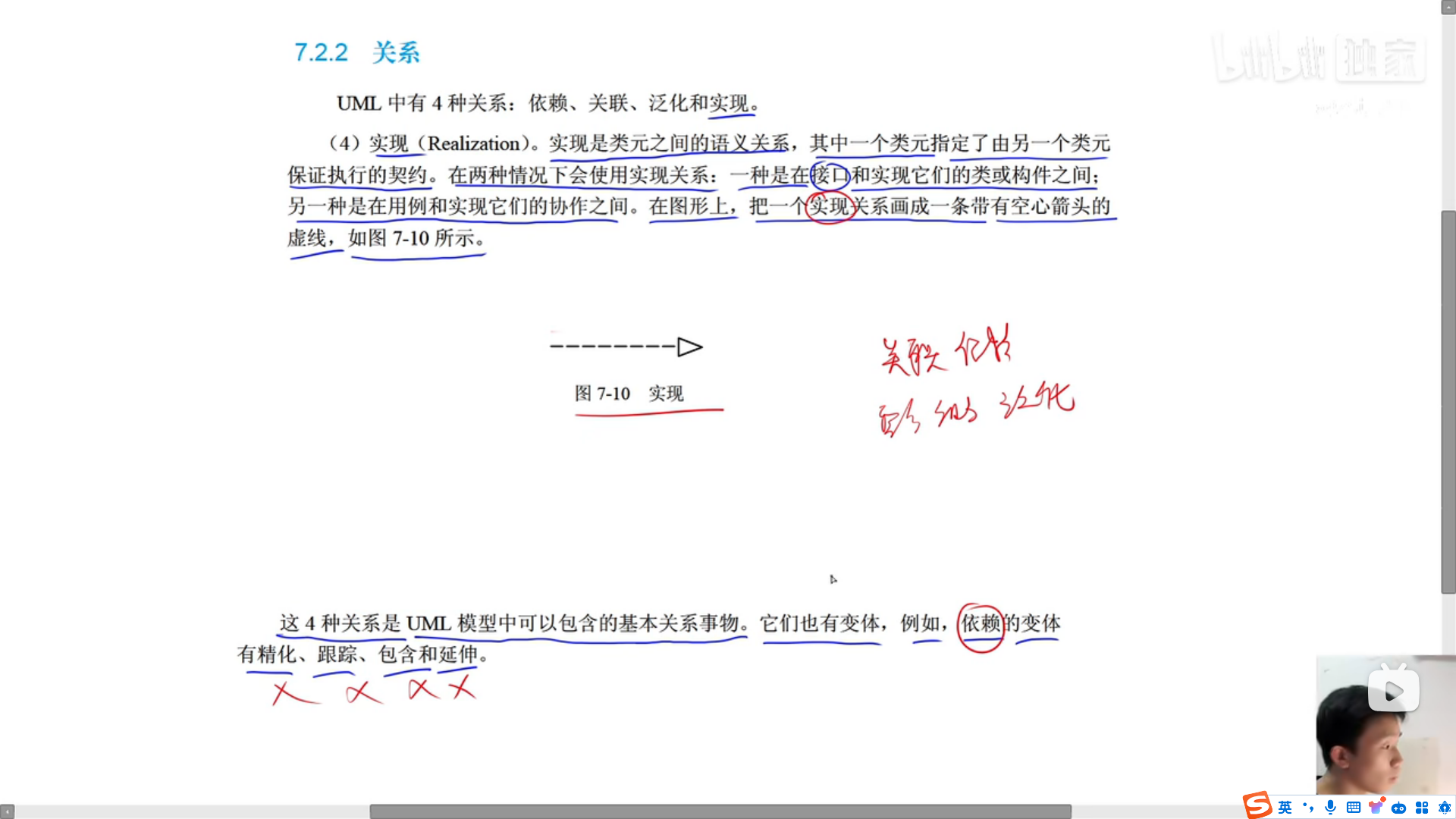
关联多重度
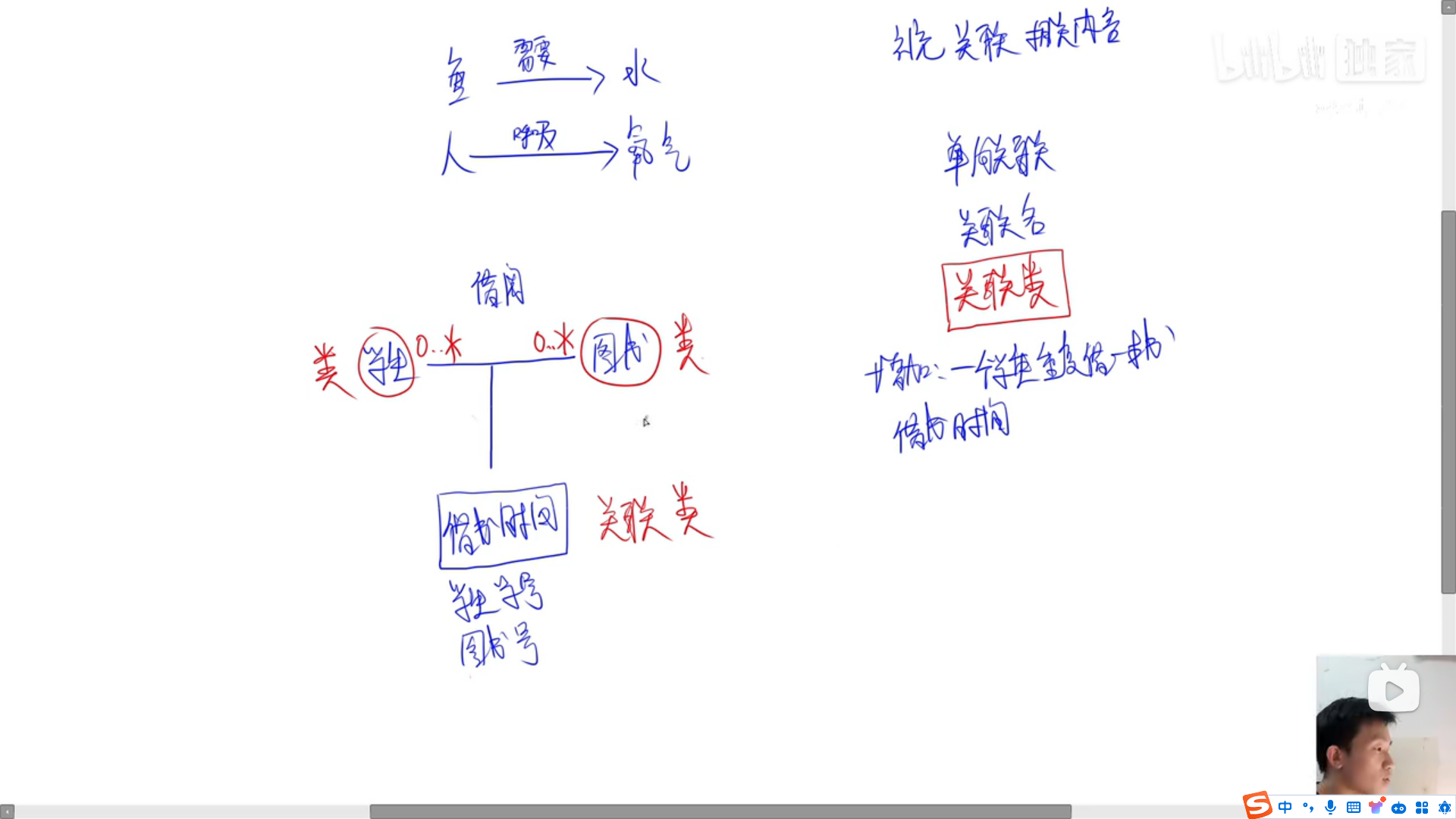

UML中的图
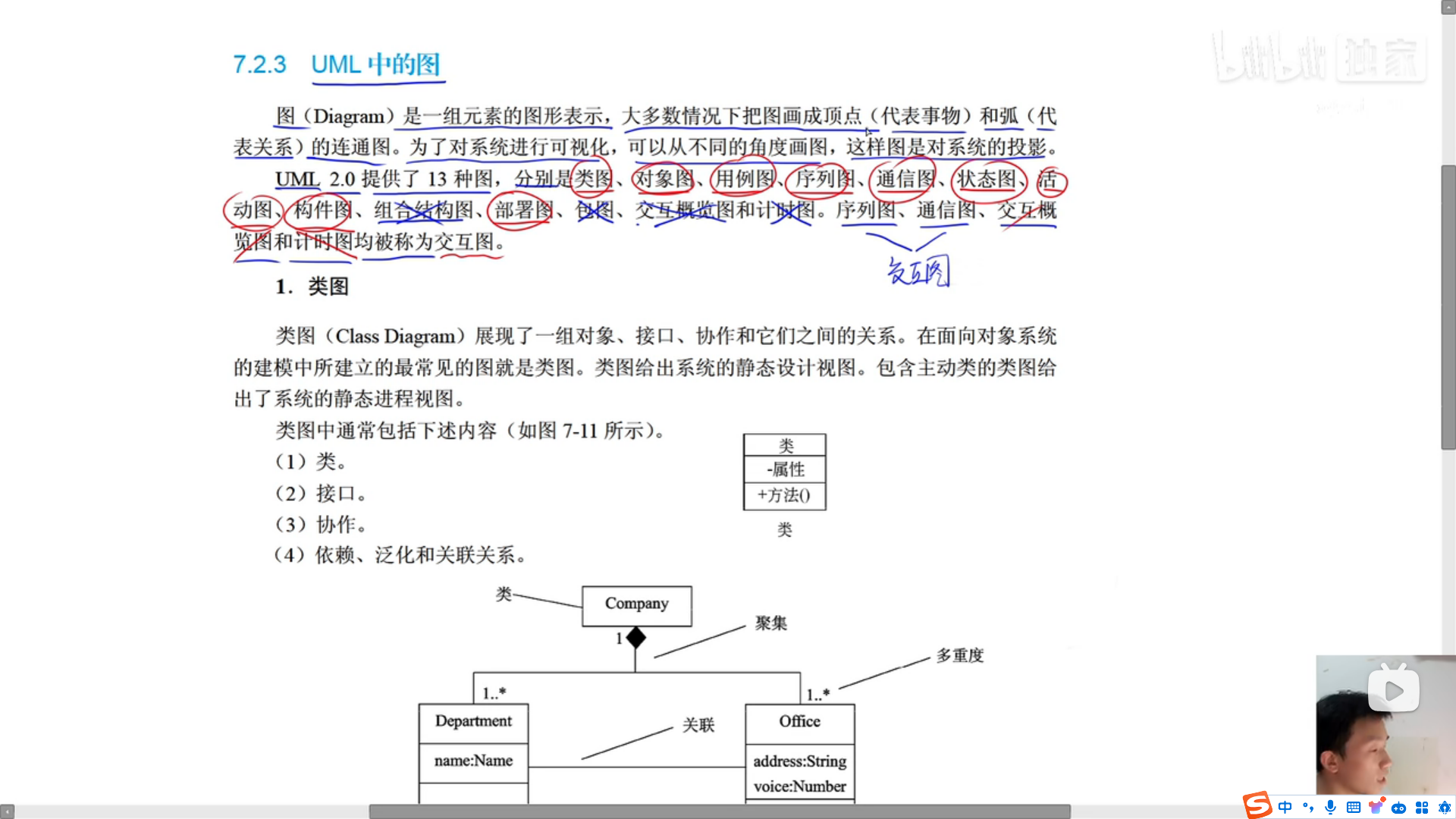
类图
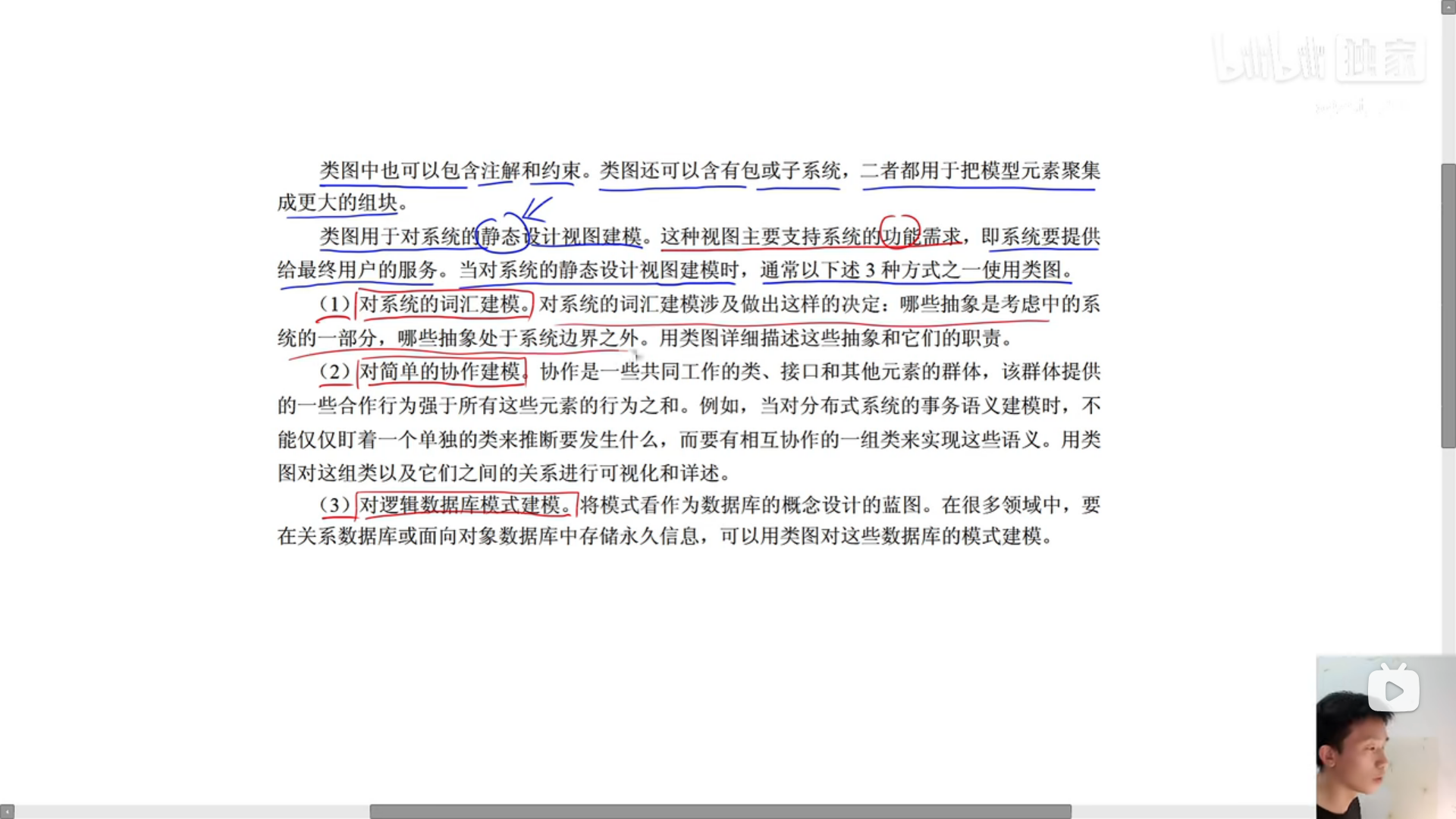
示例
重写(覆盖)

对象图
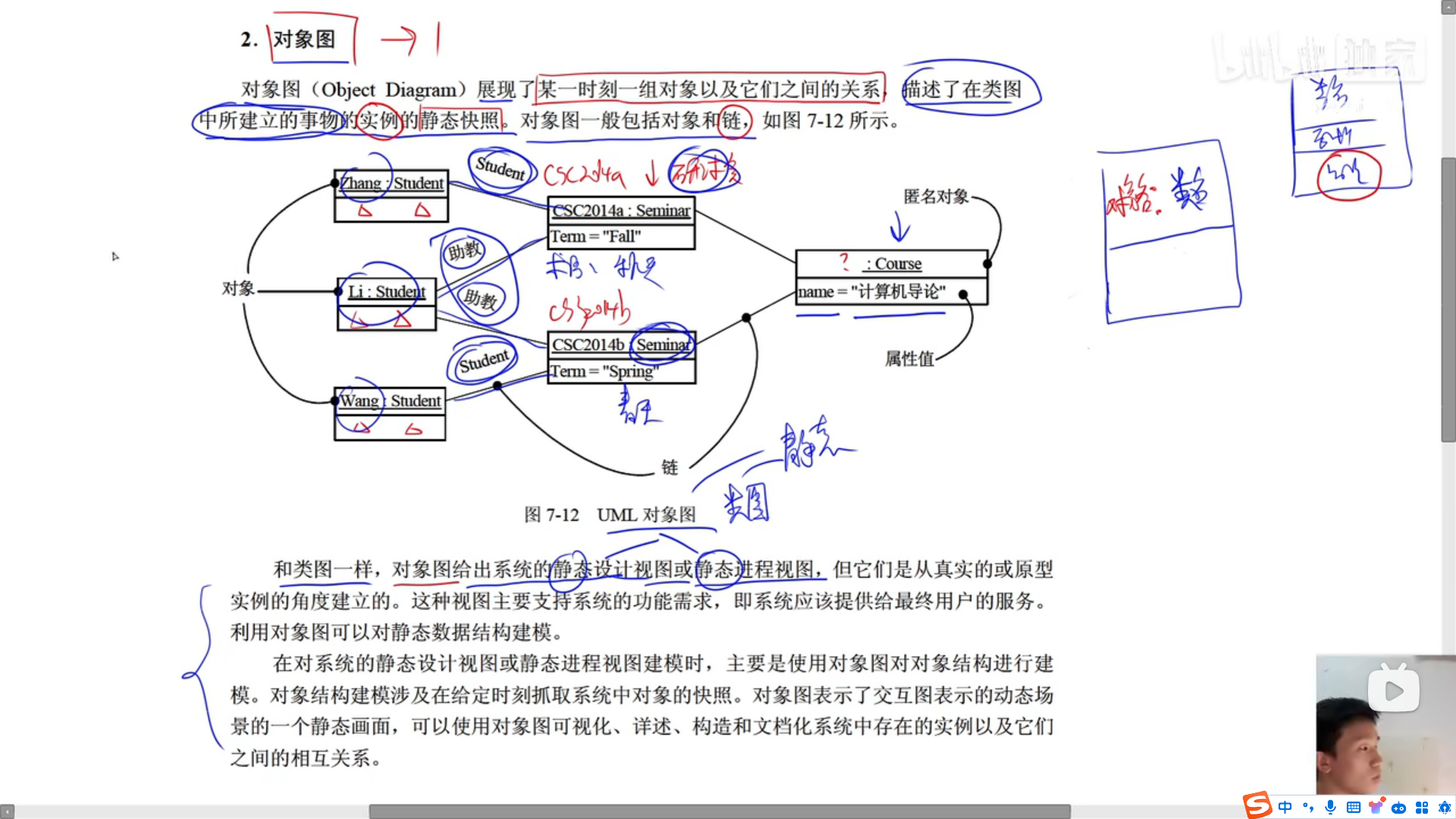
用例图
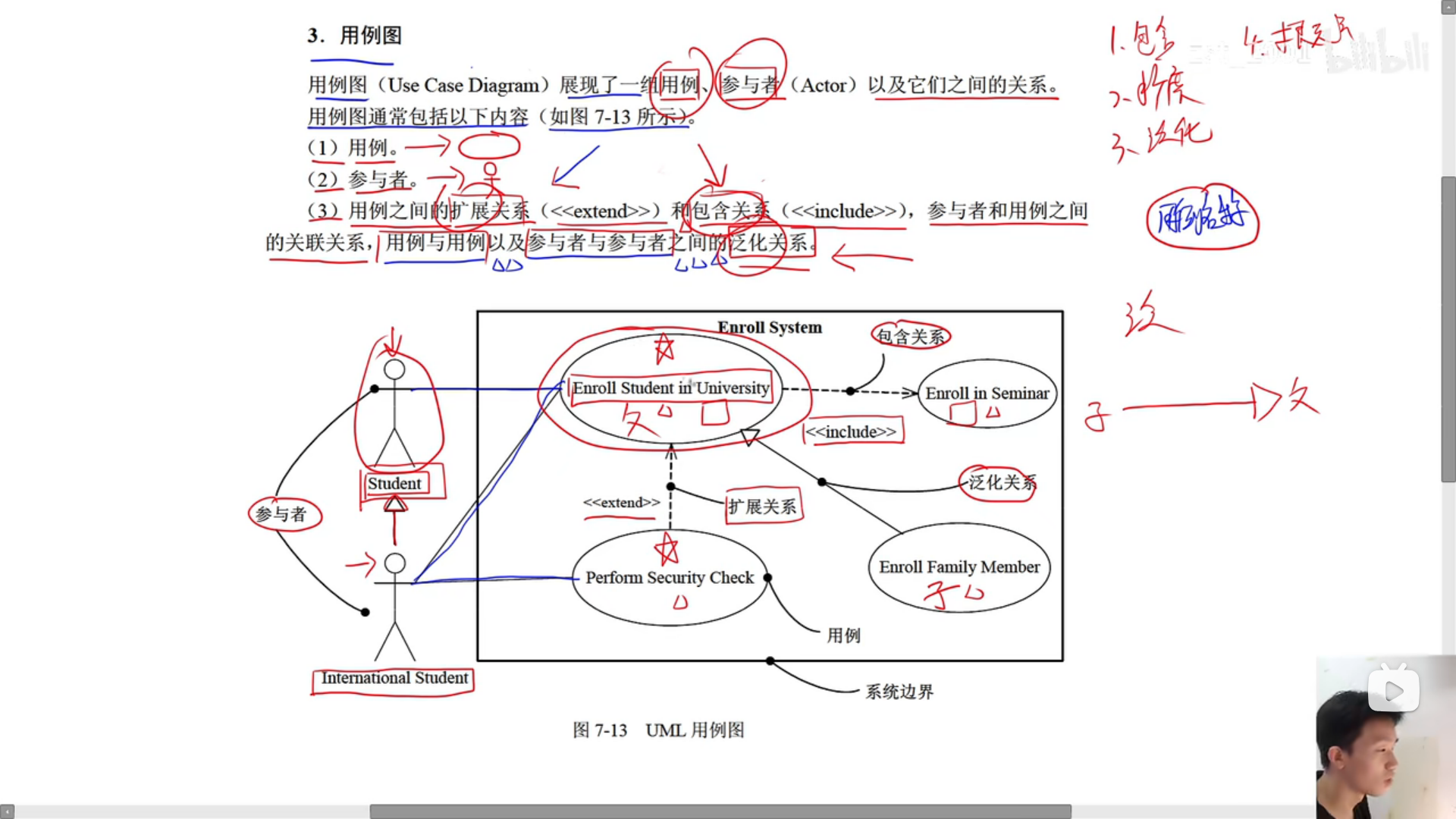
包含关系
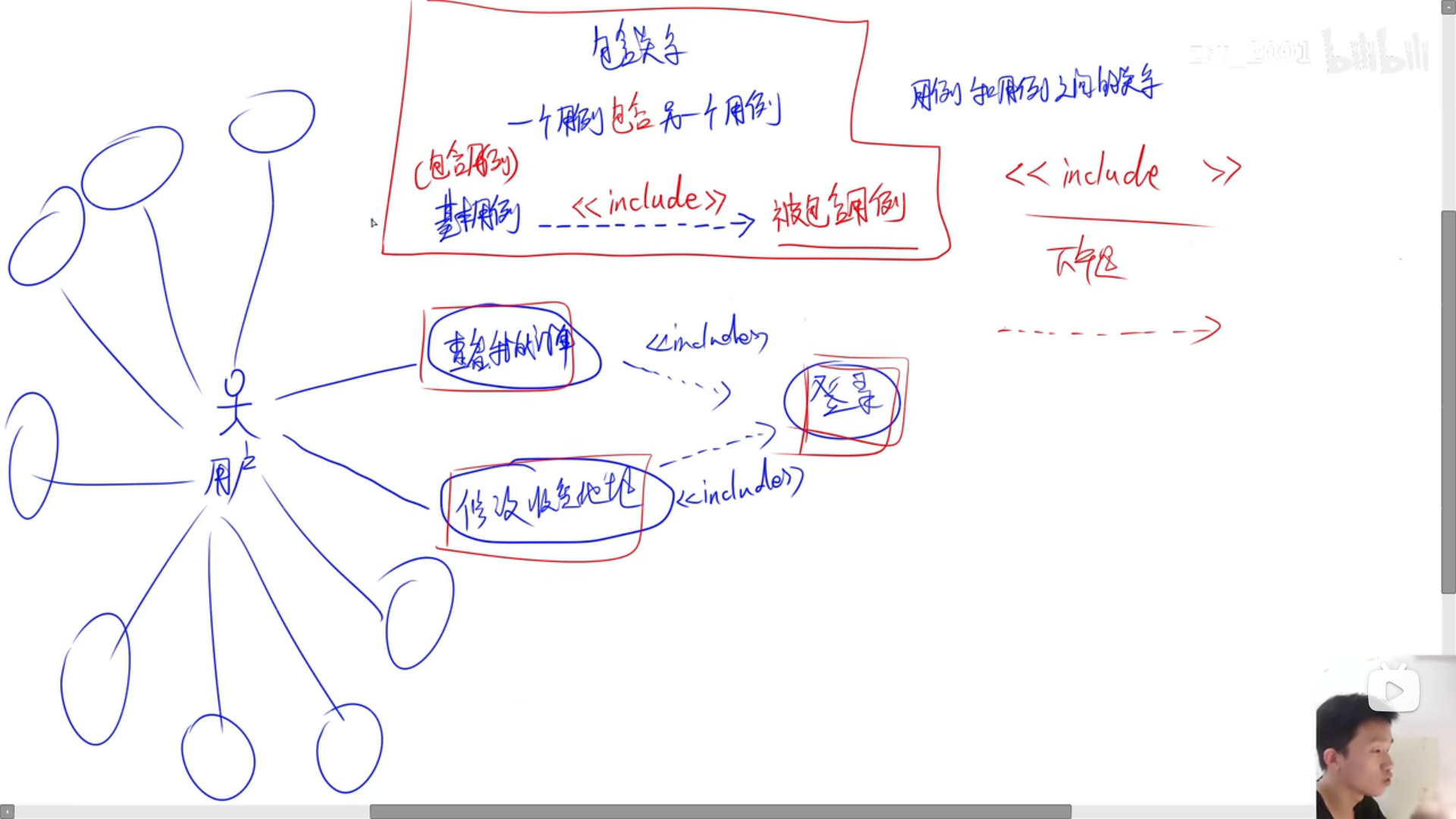
扩展关系
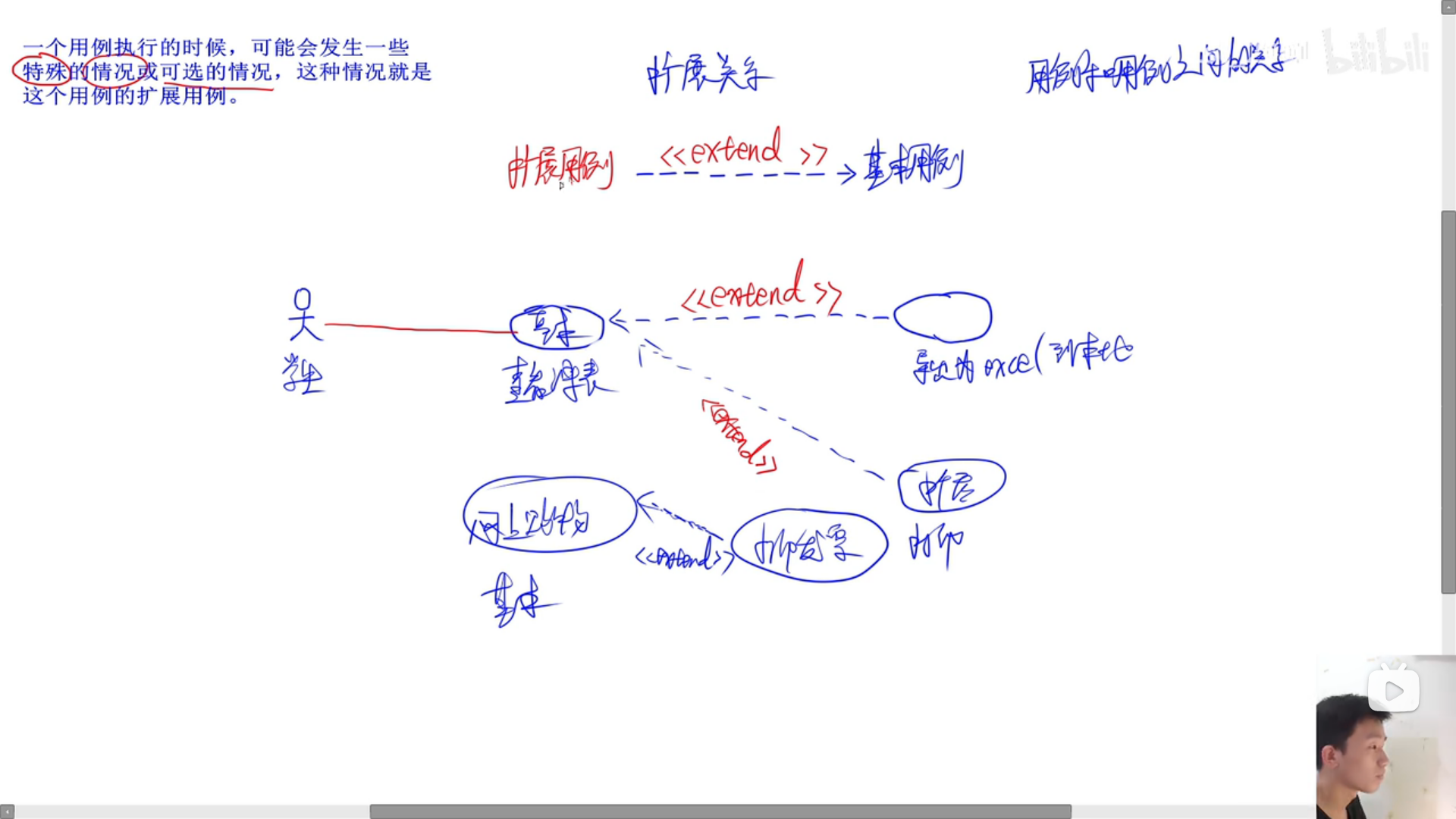
泛化关系
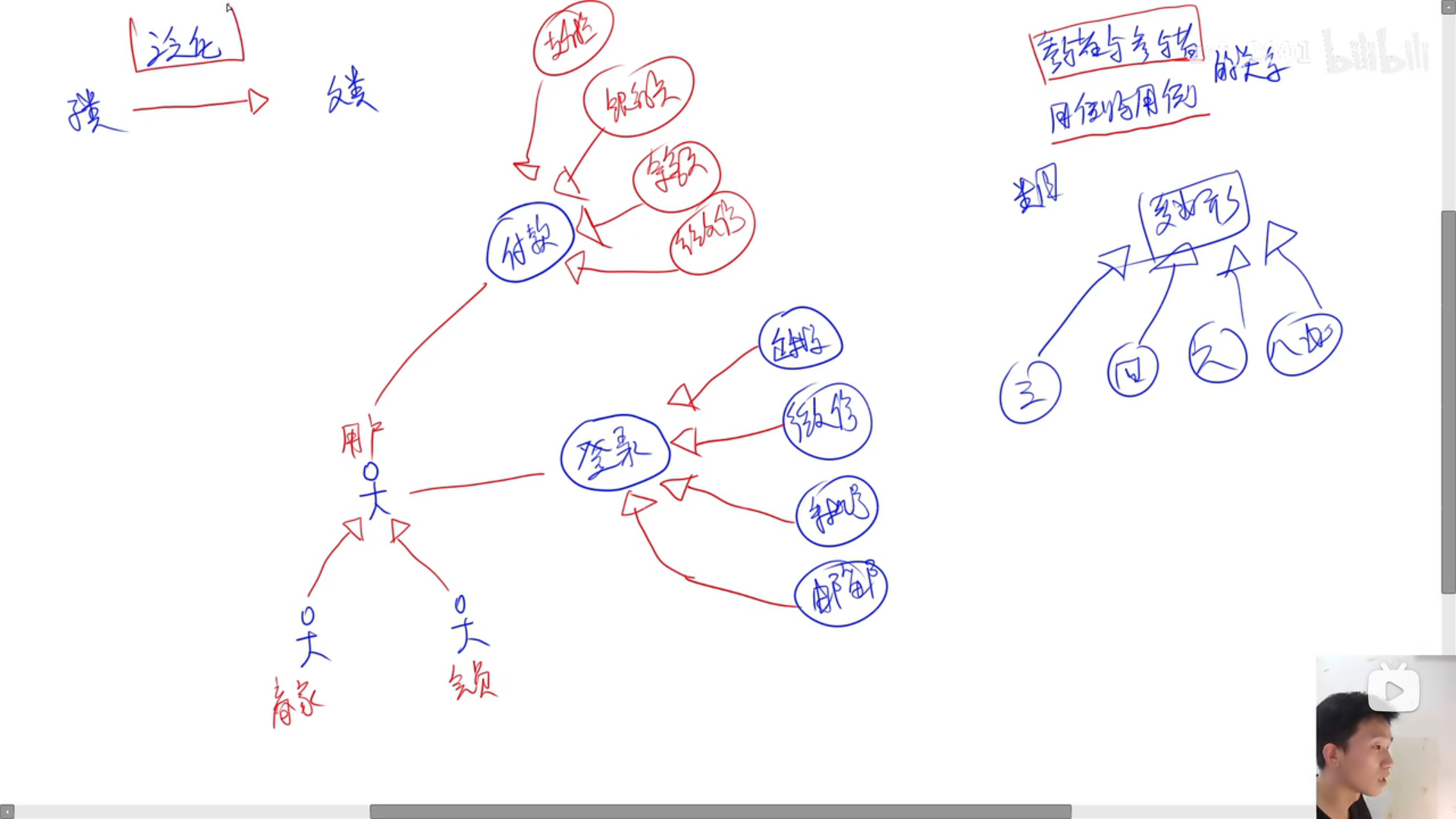
用例图的概念
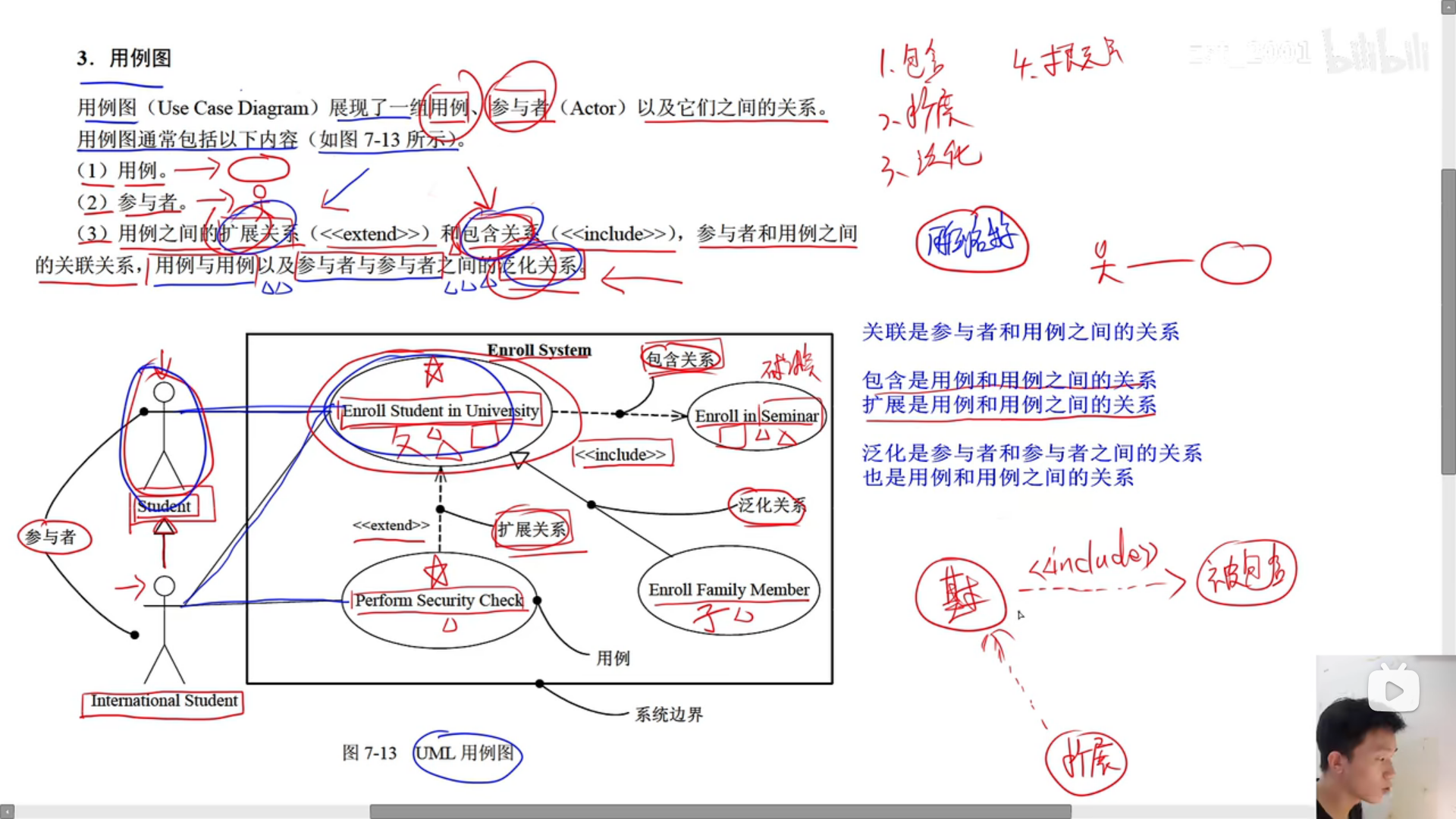
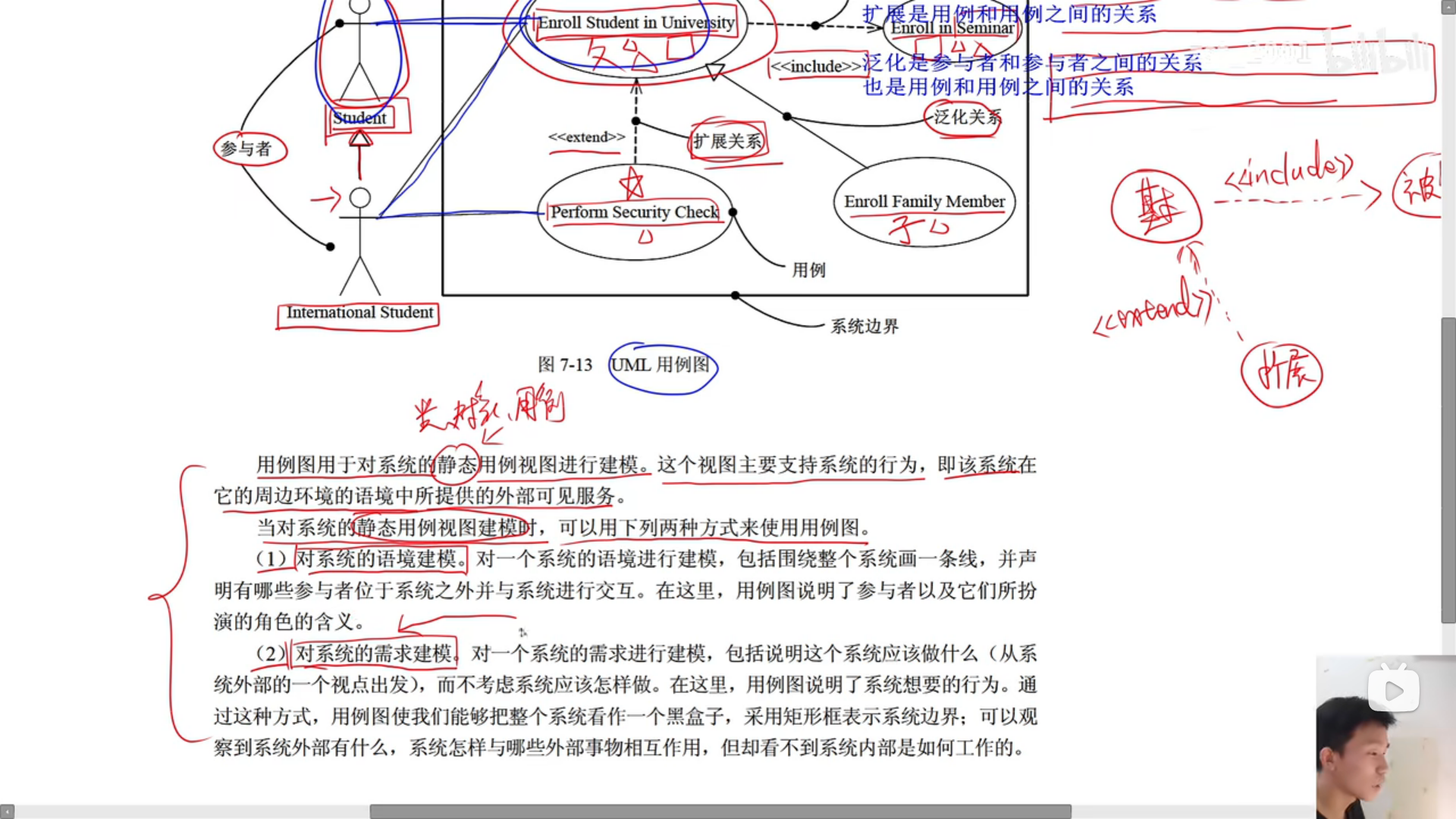
交互图(序列图-顺序图)
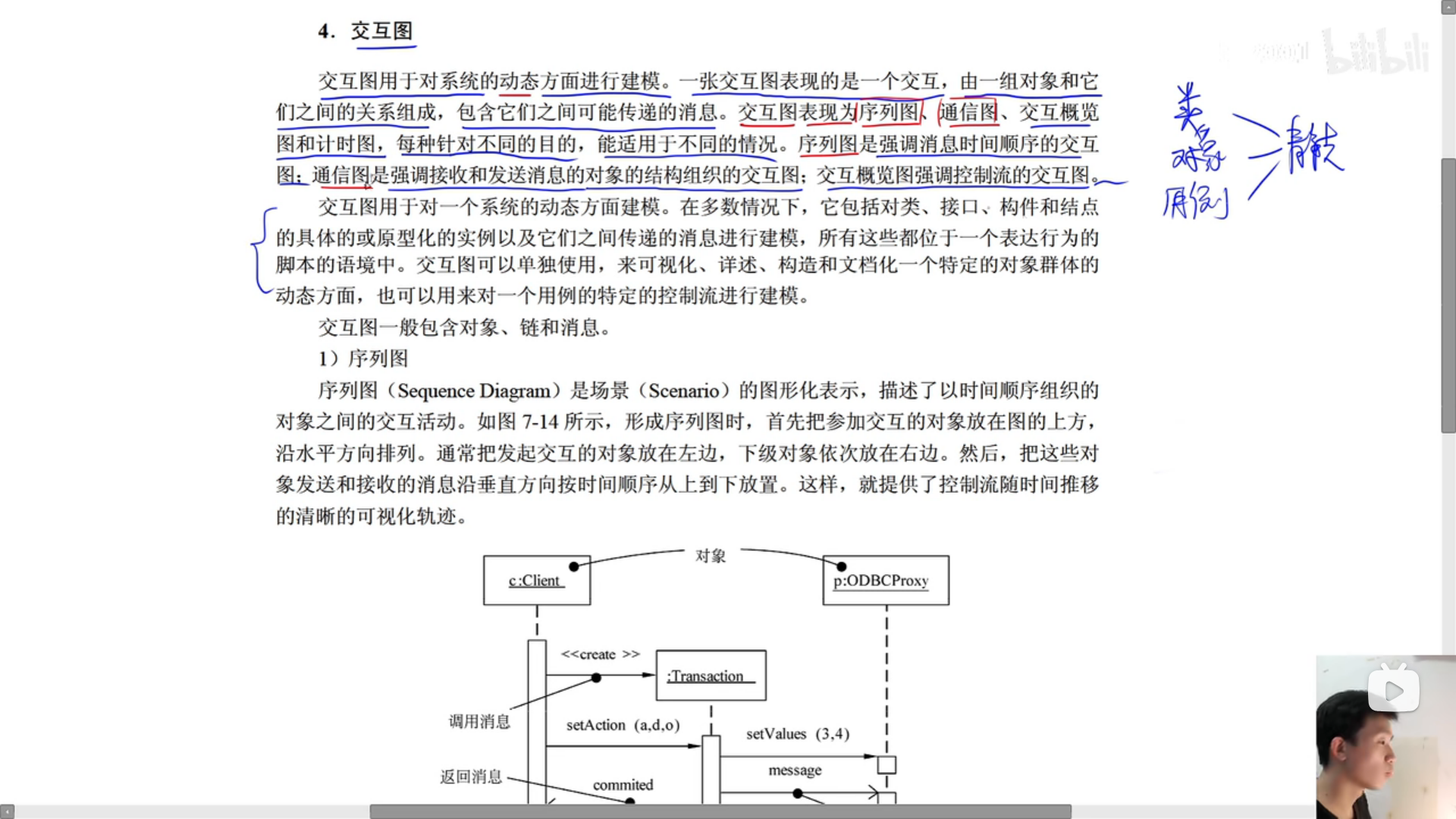
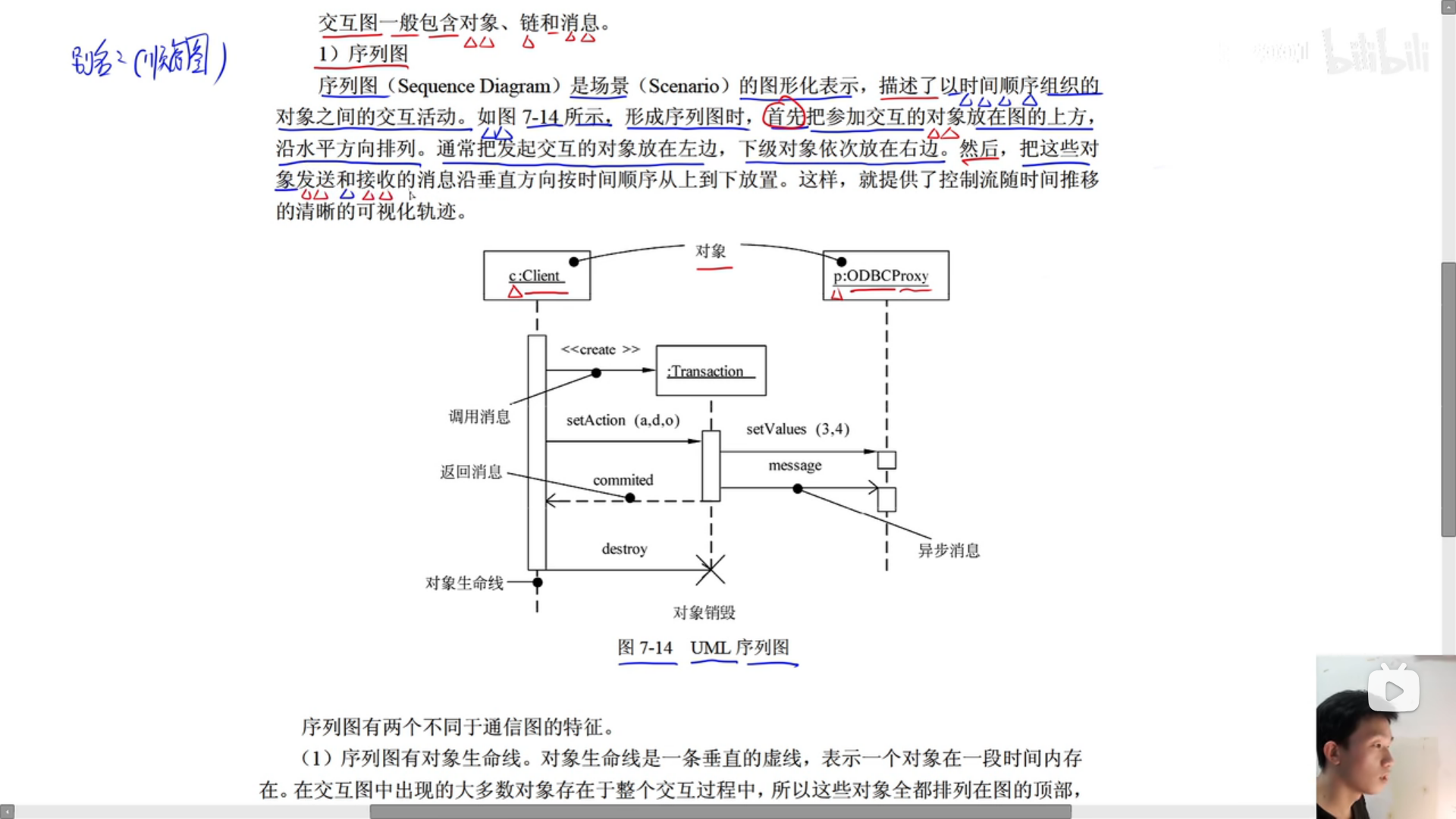

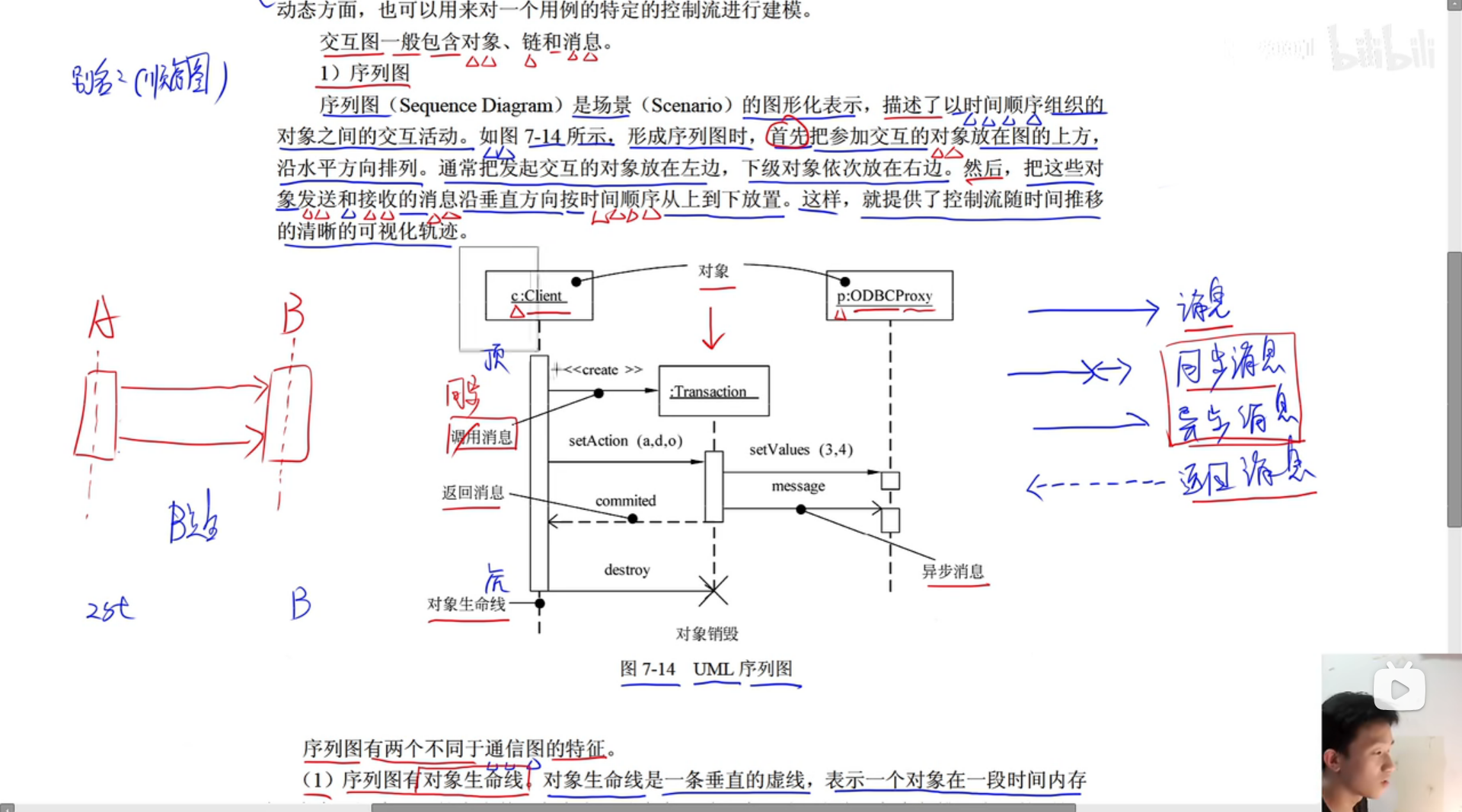
通信图
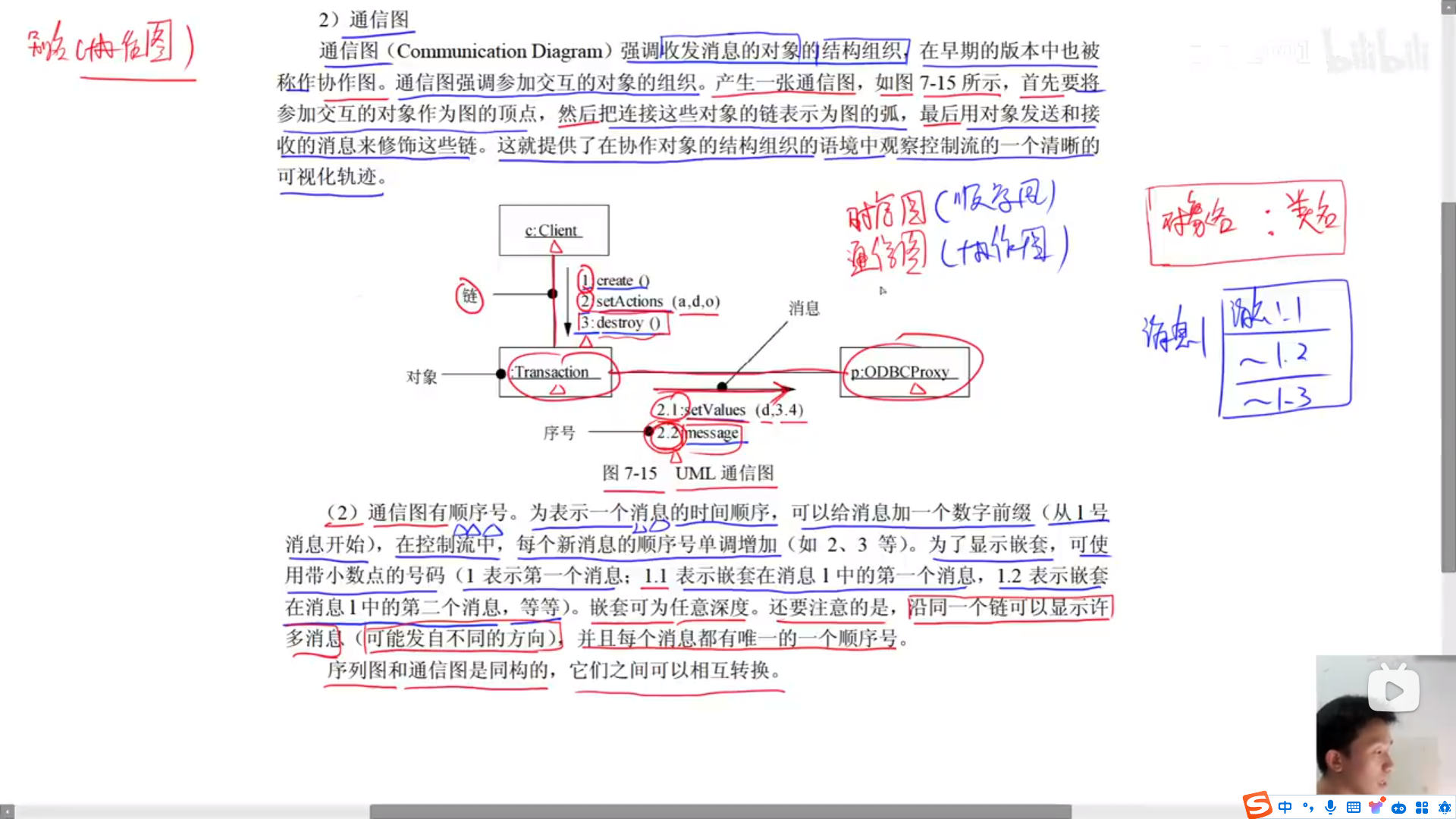
状态图

状态和活动
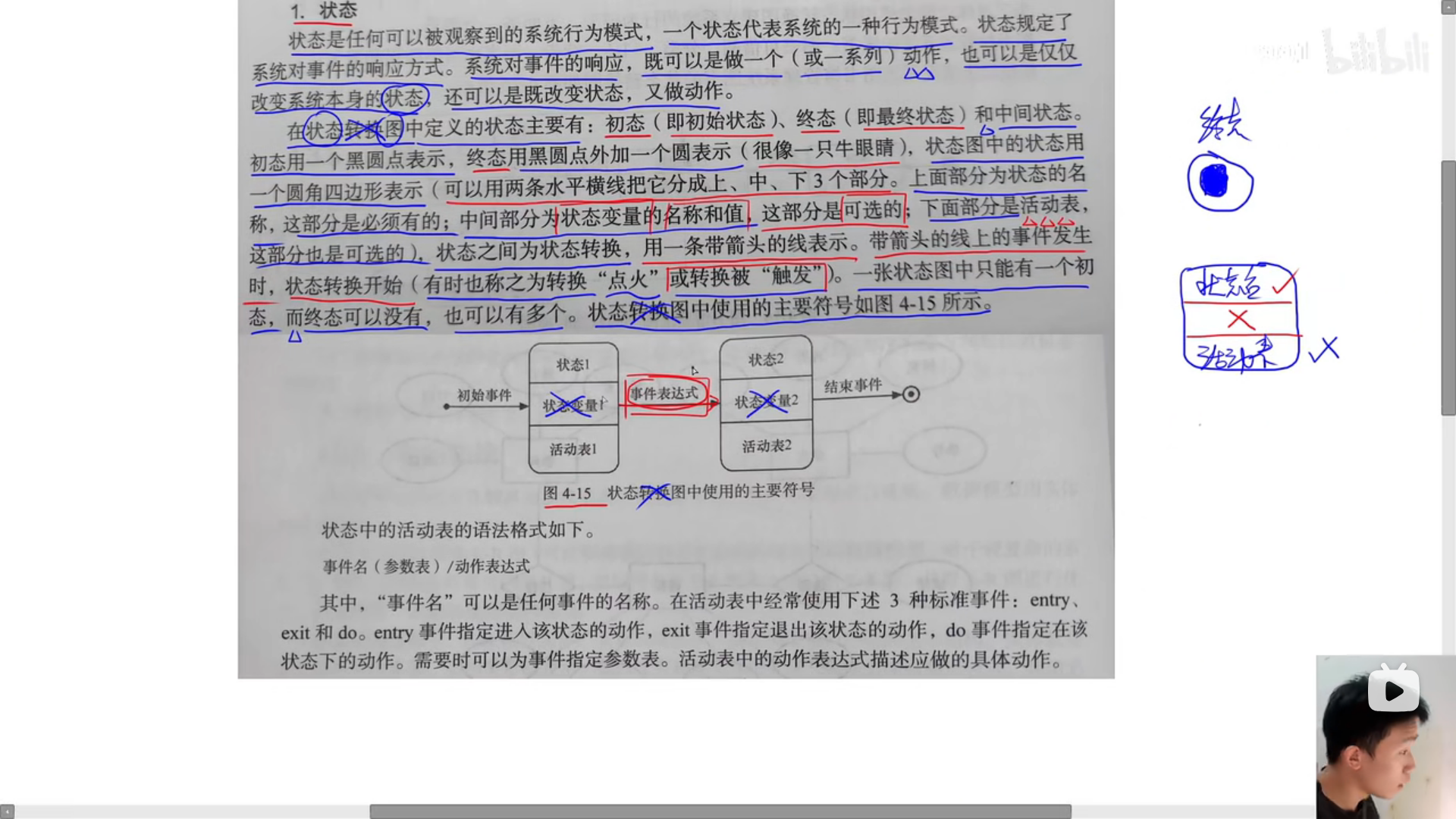
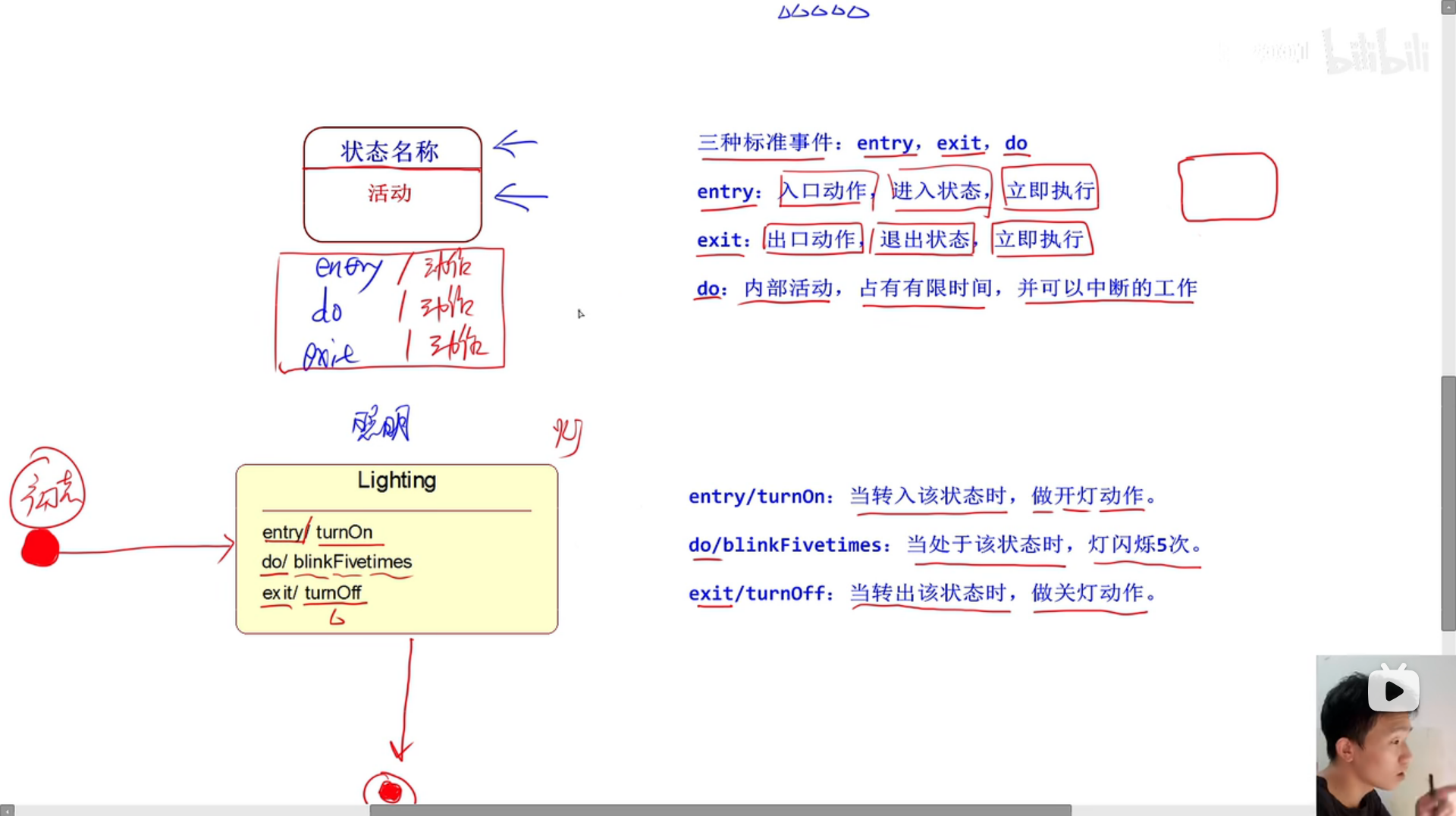
转换和事件
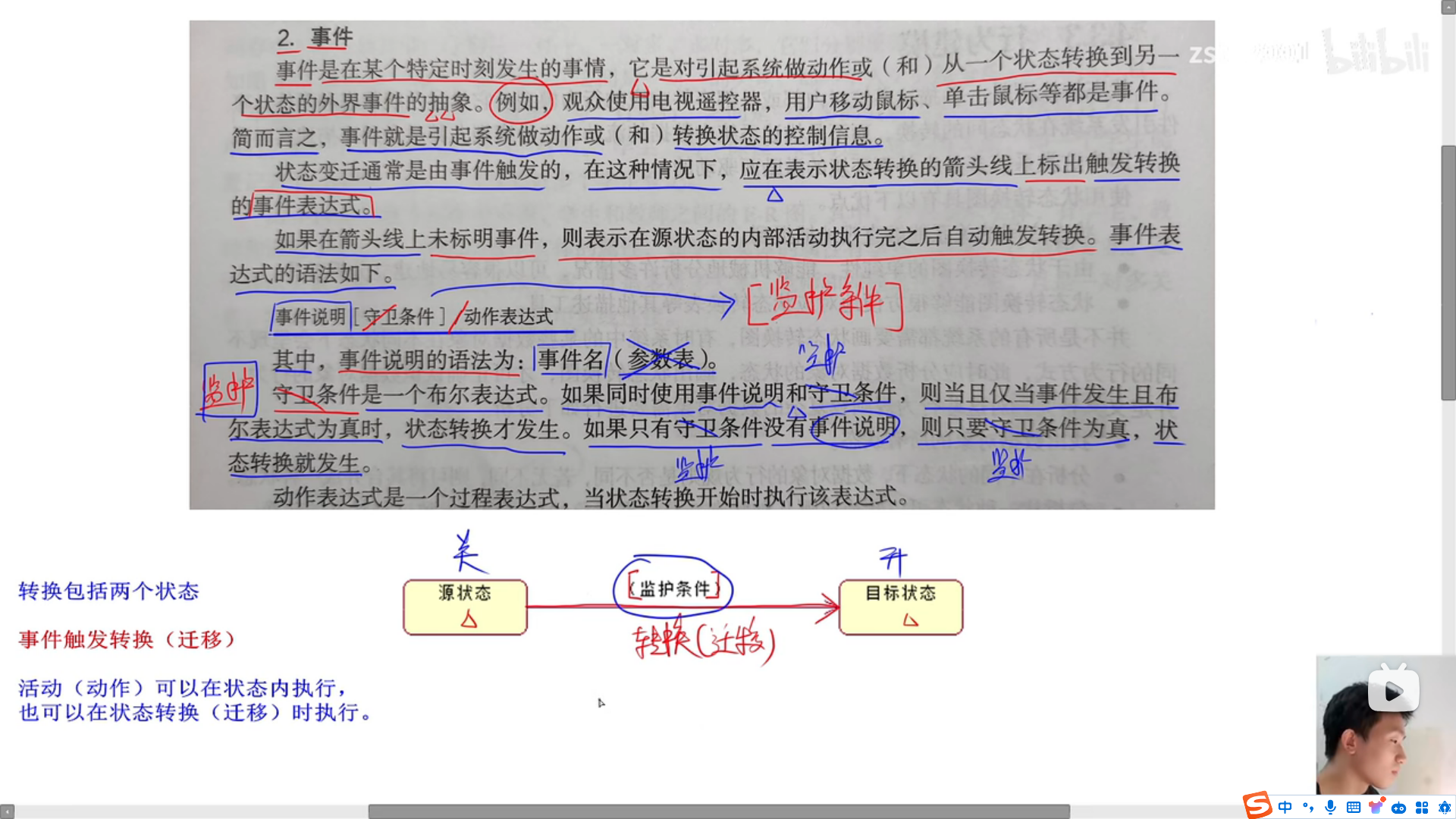
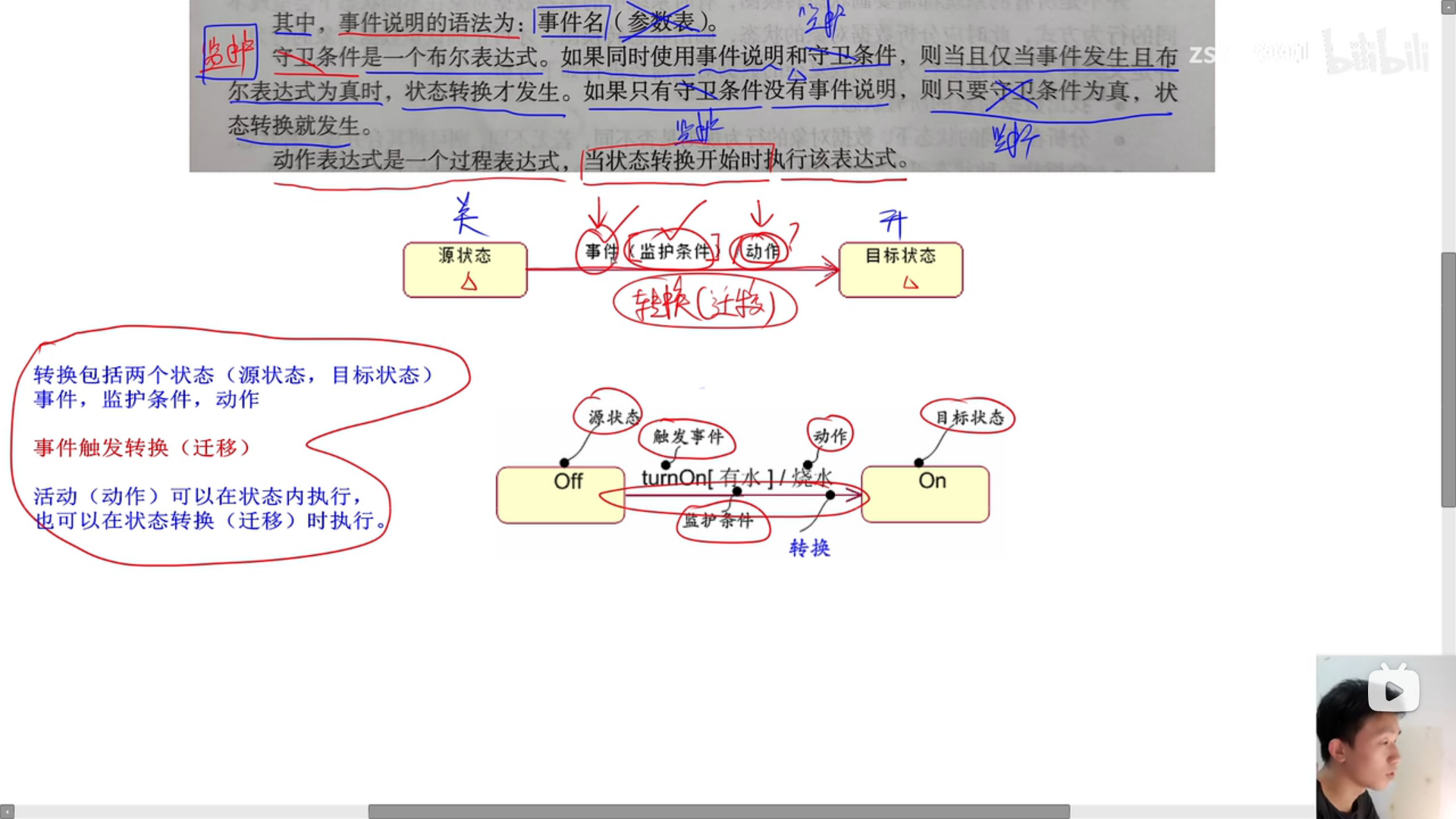
状态图的概念
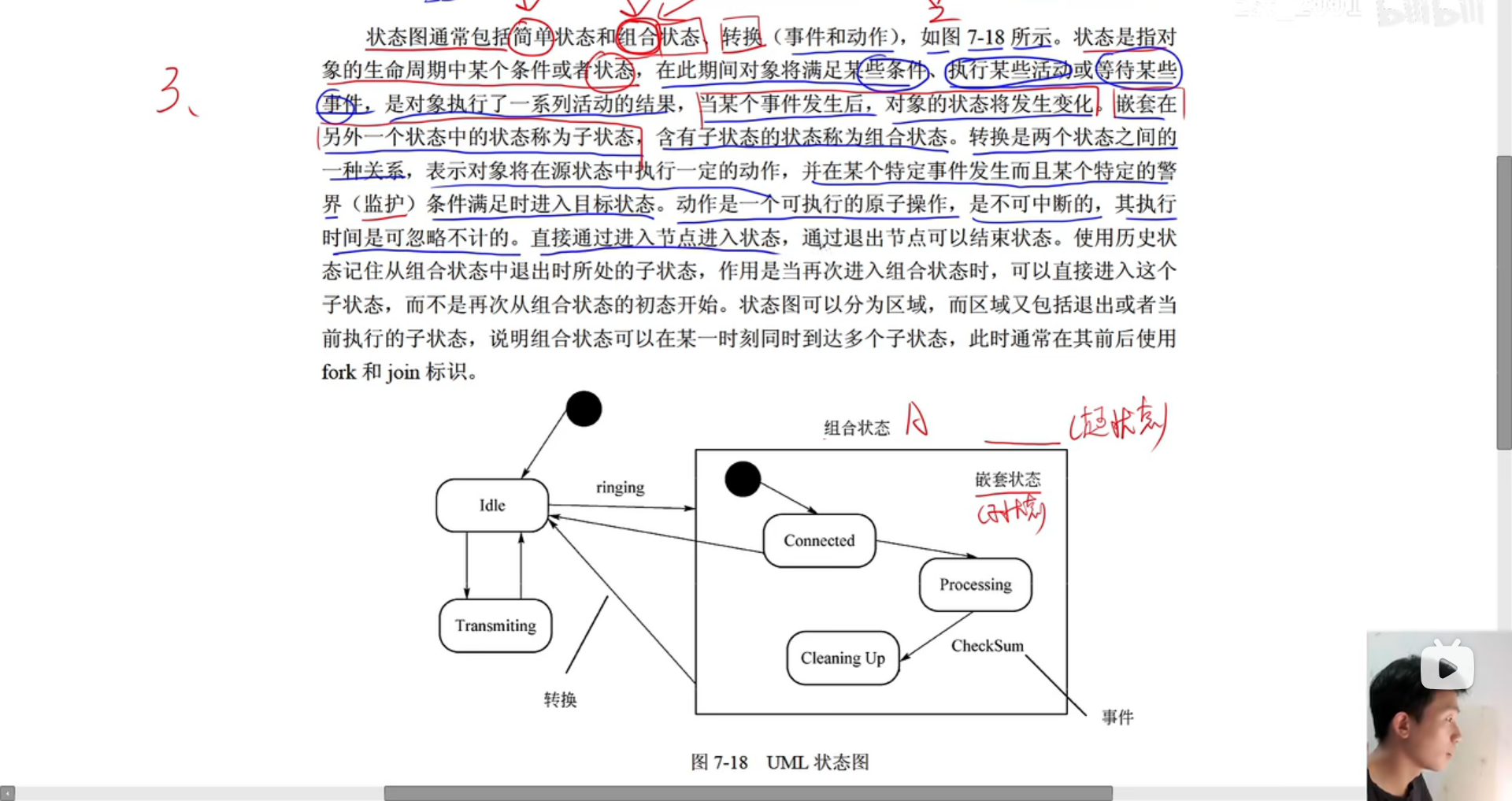
示例
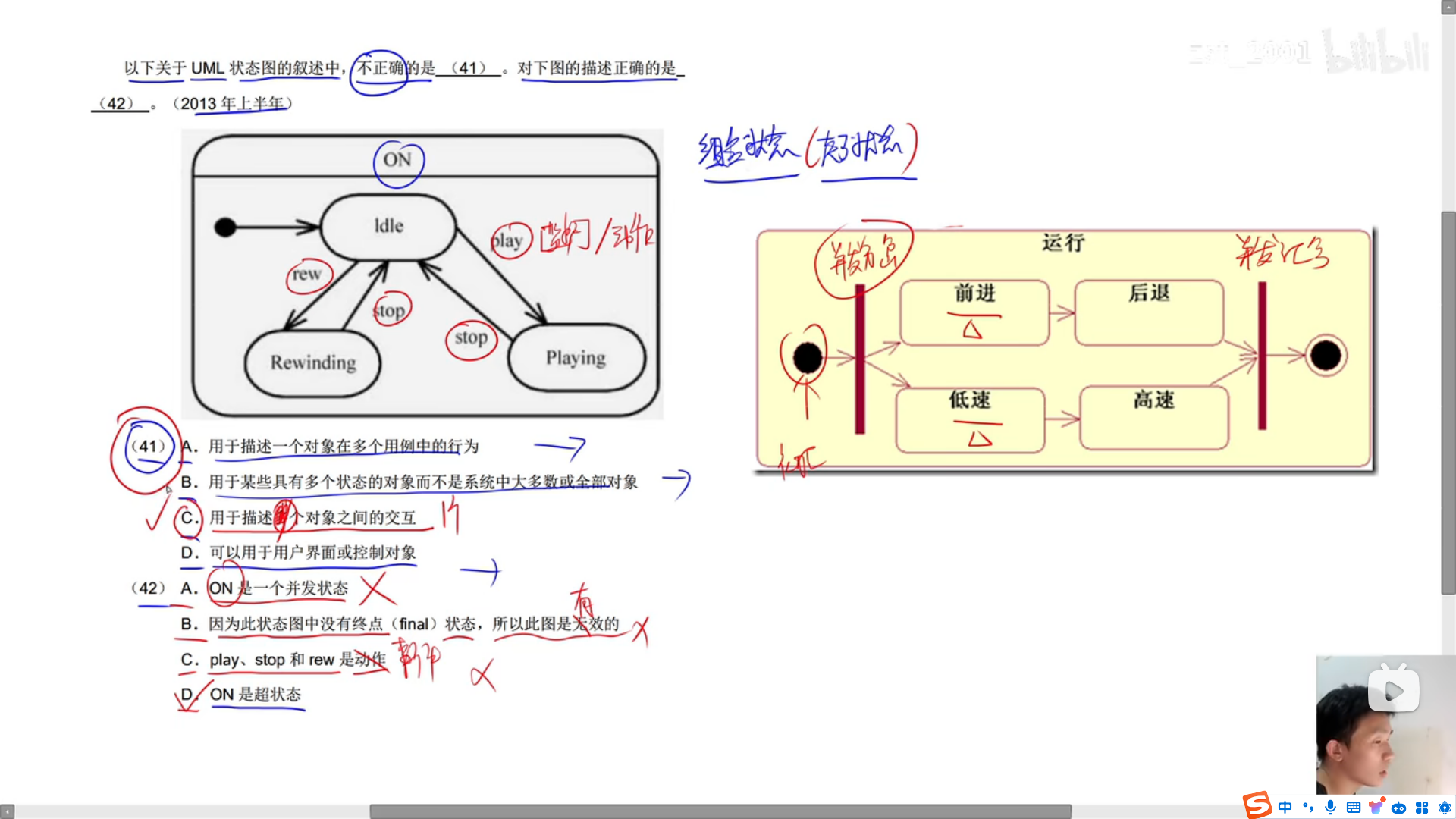
活动图
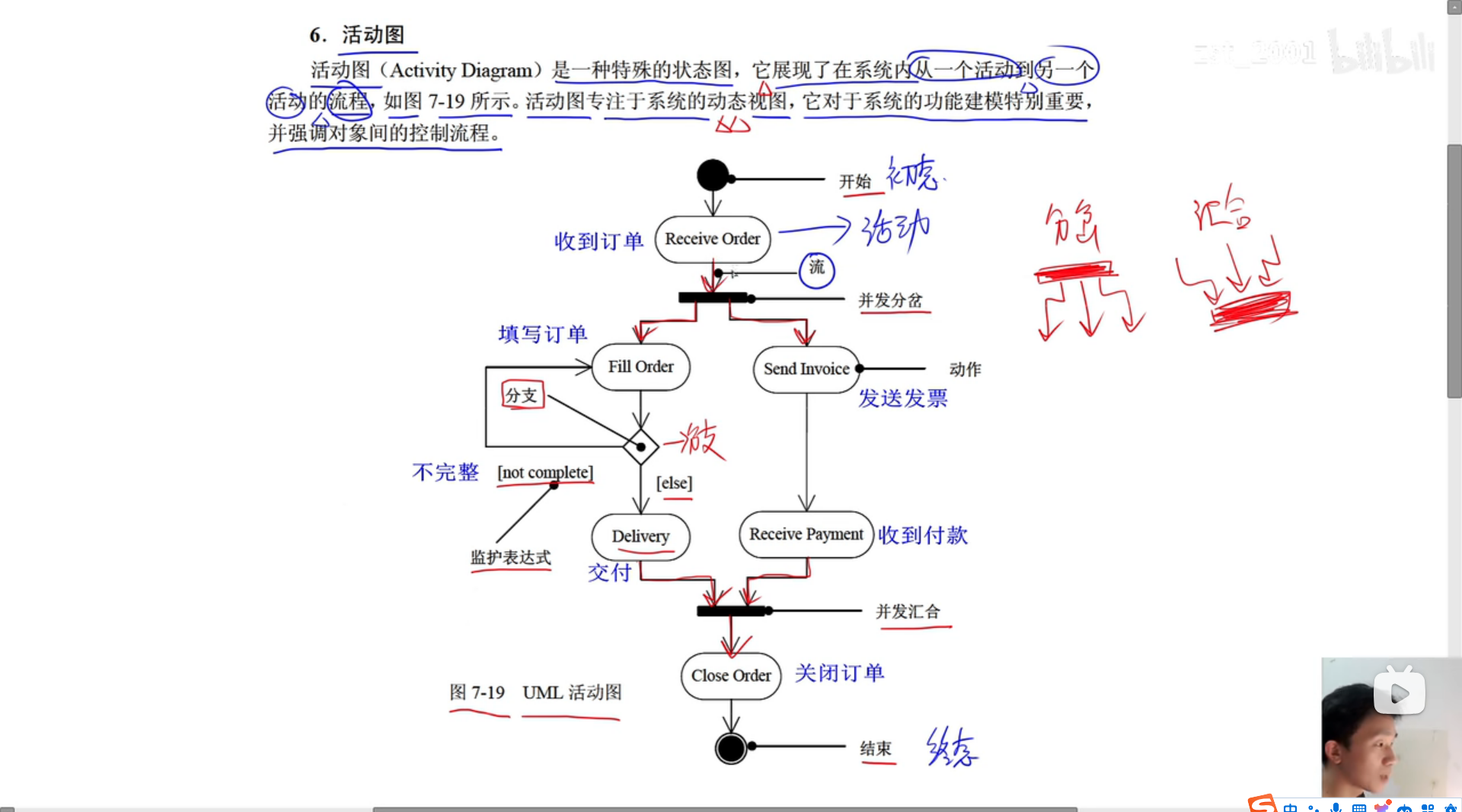

构件图
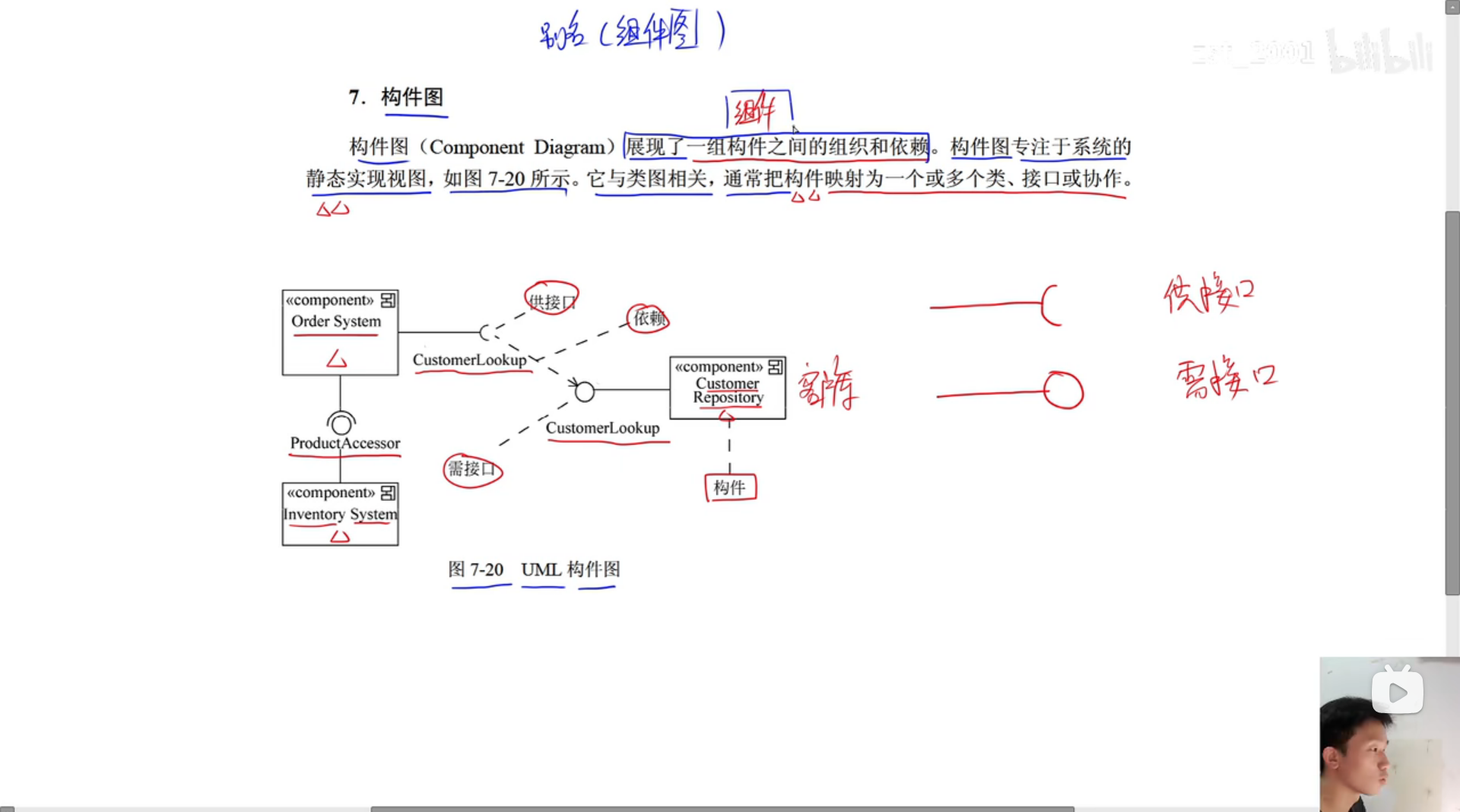
部署图

四大题知识点
回溯法
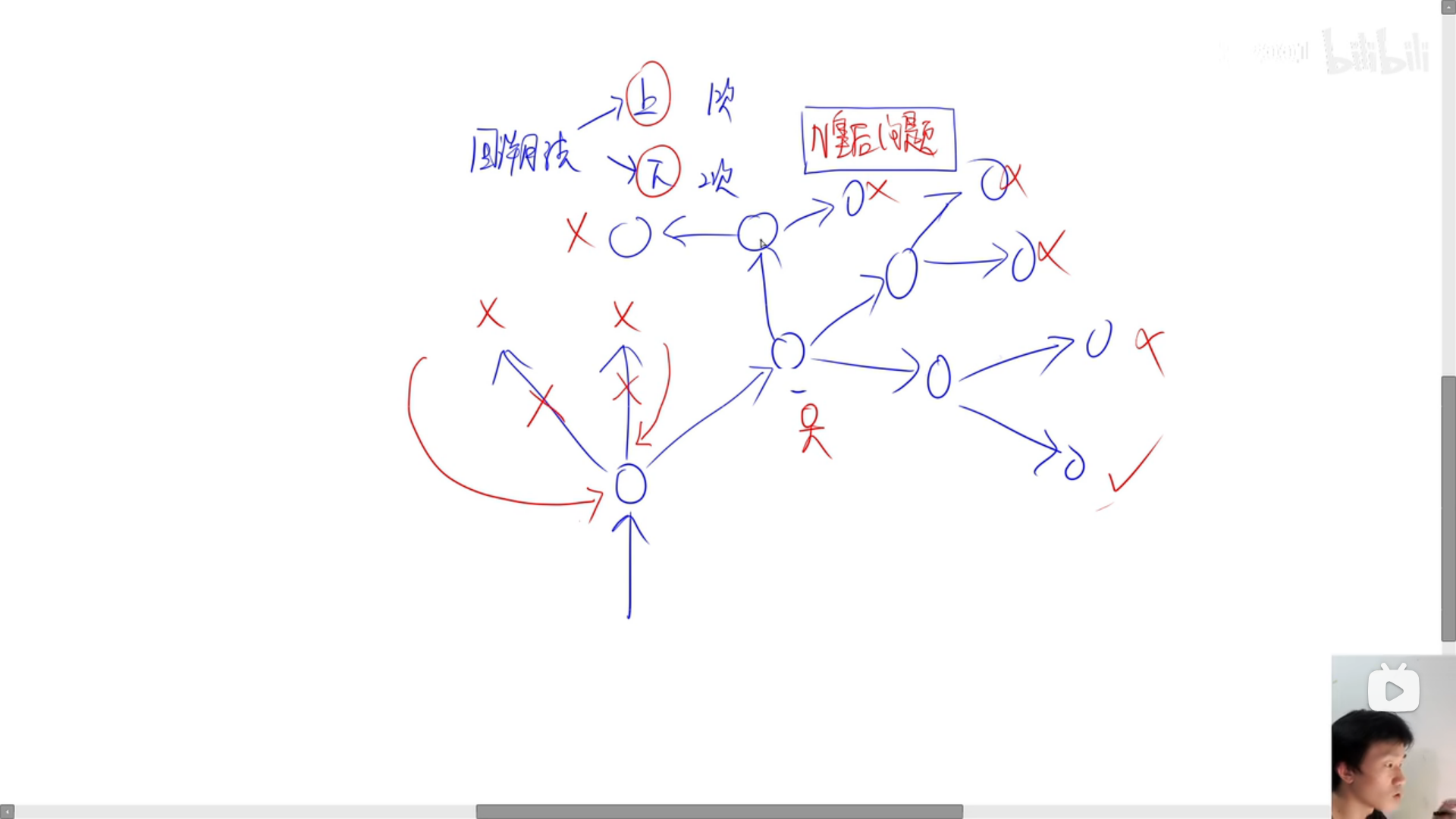
N皇后问题
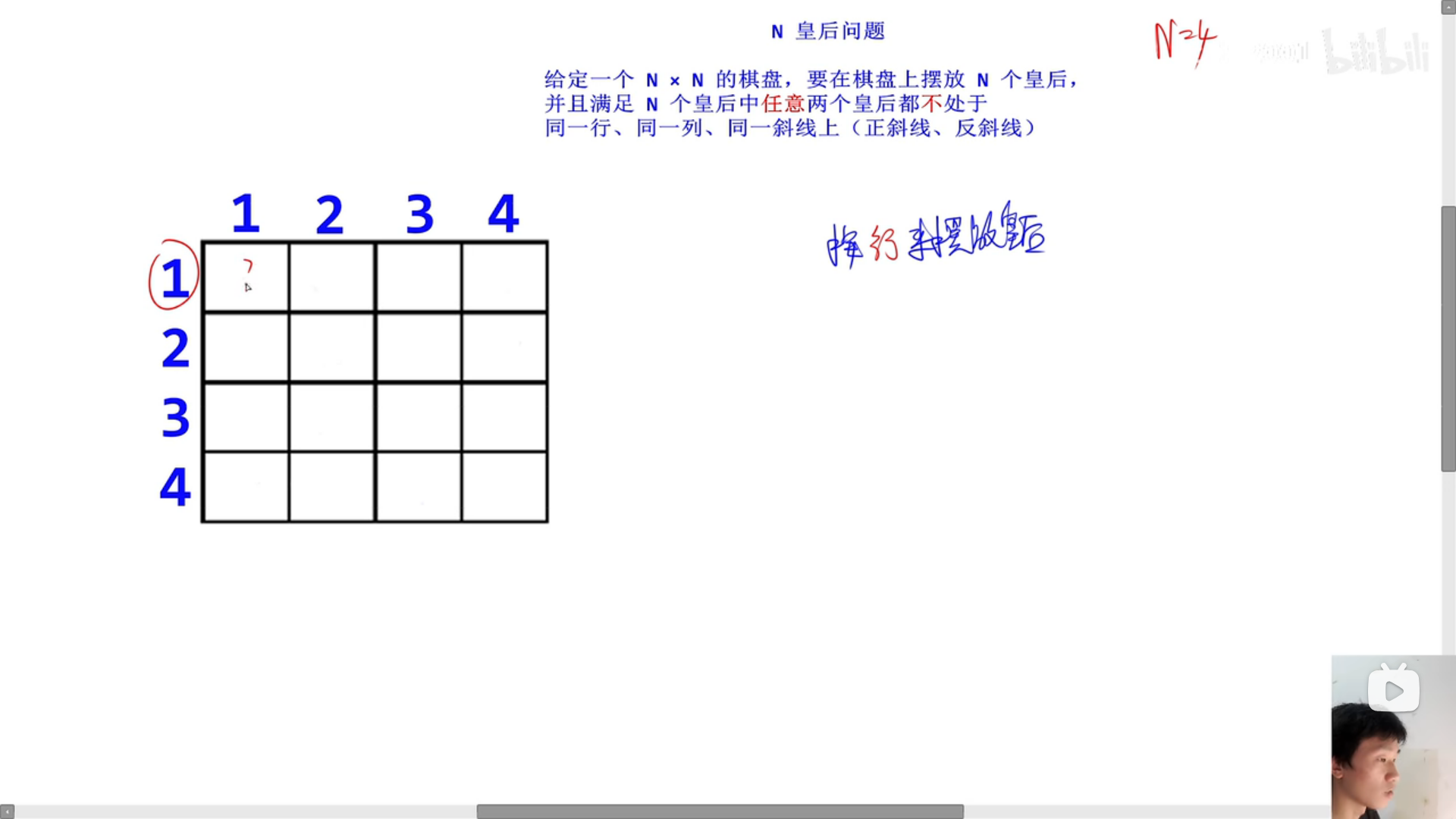
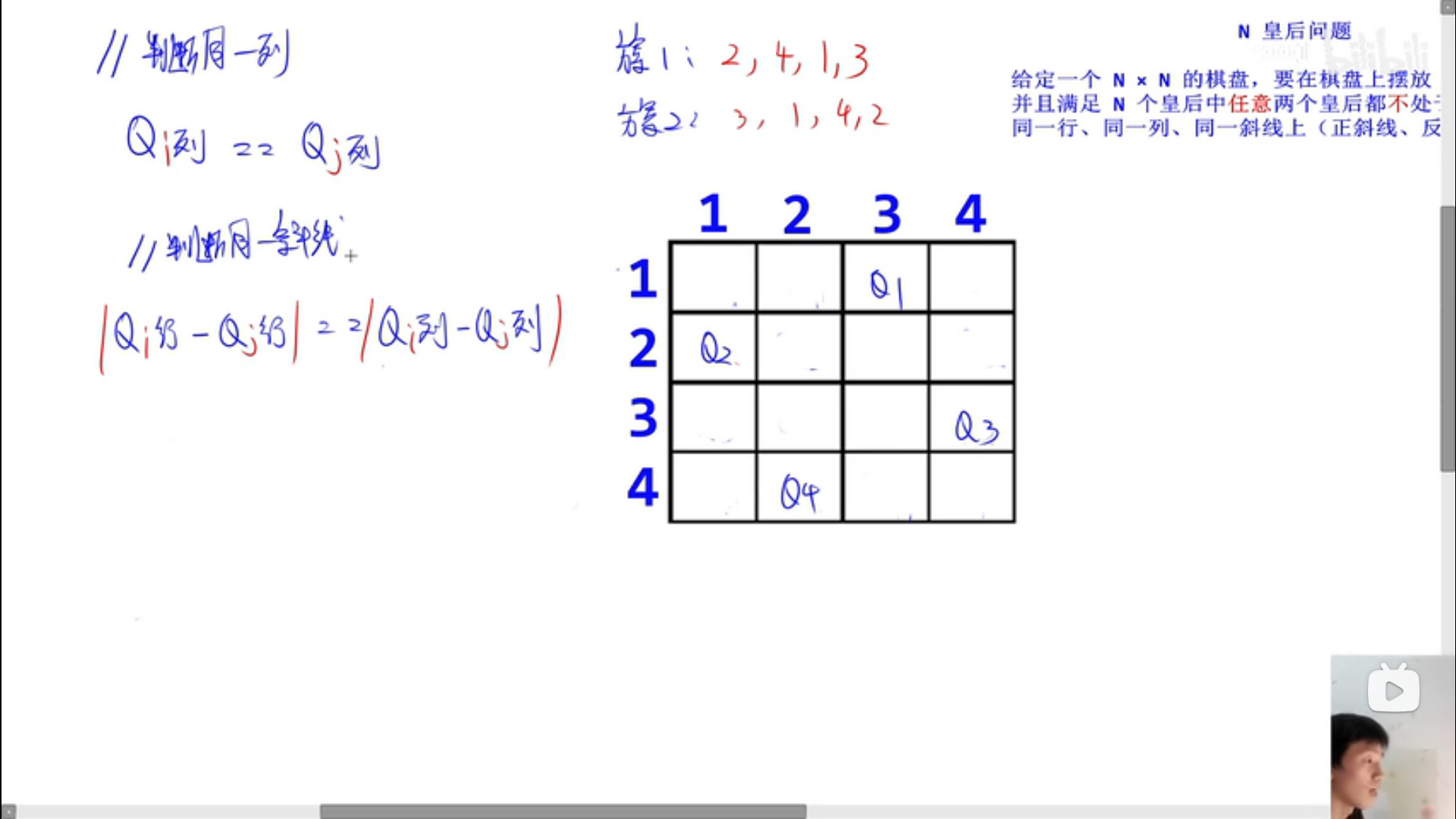
源imtationQueensCode
//
// Created by GER on 2023/10/29.
//
#include <stdio.h>
#include <math.h>
//使用一维数组存储NXN的表盘
//a[i] 表示第i个皇后在第i行第a[i]列;
#define N 4 //棋盘的大小-当前为4X4
int q[N+1];//存储皇后的序号,这里皇后的序列只使用1,2,3,4,序号为0的不使用
int check(int j){
//检查第j个皇后的位置是否合法,判断两个皇后是否在同一列
//并且判断qi行-qj行的绝对值是否等于q[i]列-q[j]列的绝对值-即是判断当前两个皇后是否在对角线上
int i ;
for(i=1;i<j;i++){//只要满足一个就不能在这个位置放置皇后
if(q[i] == q[j]||abs(i-j) == abs(q[i]-q[j])){
return 0;//返回0是指未满足N皇后棋盘原则;
}
}
return 1;
}
void queen(){
//求解N皇后方案
int i ;
for(i=1;i<=N;i++){
q[i]=0;//遍历整个棋盘?,先将全部皇后的初值赋值为0?
}
int answer = 0 ;//方案数;
int j = 1;//表示正在摆放的皇后;(这里从第一个皇后开始)
while (j >= 1) {
q[j] = q[j] + 1;//让第j个皇后往后一列摆放,(初始为第一个皇后摆放在第一行第一列)
while (q[j] <= N && !check(j)) {//判断第j个皇后的位置是否合法
// !check(j)因为check(j)在判断时如果未满足N皇后规则就返回为0即false
// !check(j)->为true时即->check(j)为0->未满足N皇后规则
q[j] = q[j] + 1;//不合法就往后一个摆放
}
if(q[j] <= N){//判断当前列是否越界,并且表示第j个皇后找到了一个合法的摆放位置
if(j == N){
//找到了N皇后的一组解
answer = answer + 1;
printf("方案%d: ",answer);
for(i= 1; i<=N;i++){
printf("%d ",q[i]);
}
printf("\n");
}else{
j = j+1;//继续摆放下一个皇后
}
}else{//表示第j个皇后找不到一个合法的摆放位置
q[j]=0;//还原第j个皇后的位置
j=j-1;//回溯
}
}
}
int main(){
//是代码问题出现乱码吗?
queen();
return 0 ;
}
ImitaionErrorCodeCorrection
//
// Created by GER on 2023/10/30.
//
#include <stdio.h>
#include <math.h>
//先定义棋盘的大小,假设4X4;
#define N 4
//用一维数组来表示棋盘大小,
int q[N+1];//这里只使用下标为1,2,3,4的数组值来表示棋盘中的皇后
//q[i]表示第i个皇后在第i行第q[i]列
//编写方法判断摆放位置是否合法
int check(int j){
//传入需要摆位置的第j个皇后,判断第j个位置的皇后是否合法
int i ;
for(i=1;i<j;i++){
//遍历当前列是否和需要摆的当前皇后的列相等,或者判断两个皇后是否在斜线上
if(q[i] == q[j] || abs(i-j) == abs(q[i]-q[j])) {
return 0;//返回0是指当前未满足N皇后摆放规则
}
}
return 1;
}
void queen(){
//编写当前N皇后的回溯问题,从第一个皇后开始摆放,直到摆放当前设定的4个皇后
int i ;
int j = 1;//先设定从第从第一个开始摆放
int answer = 0;
//将棋盘中所有皇后赋值初值都为0
for(i = 1;i<=N;i++){
q[i]=0;
}
//开始摆放第一个皇后
// while (j<=N){//先判断当前摆放的皇后是否数组越界
while (j>=1){//这里?
//开始摆放
//先将第一个皇后摆放在第一行第q[j]列
q[j]=q[j]+1;//?
// for(i=1;i<=N;i++){//为什么要这样写?
//从第一个,皇后开始遍历
// if(j<=N&&!check(j)){//这里开始回溯//过第一个一遍
while (q[j]<=N && !check(j)){
//j<=N表示判断数组是否越界
// !check(j),判断当前摆放的位置是否符合N皇后摆放的位置
// check(j)返回为0表示不满足当前位置,!check(j)->return 1 ;表示要开始往后摆放
q[j]=q[j]+1;
}
// else{
// j=j+1;//摆放下一个皇后
// }
//这里在摆第三个皇后时需要开始回溯
// }
//判断当前摆放的位置是否已找到最优解
if(q[j]<=N) {1
if (j == N) {
//表示已经找到一组最优解
answer = answer + 1;
printf("方案%d ", answer);
for (i = 1; i <= N; i++) {
printf("%d", q[i]);
}
printf("\n");
} else{
j = j+1;
}
// else {
// q[j] = 0;
// j = j - 1;
// }
}else {
q[j] = 0;
j = j - 1;
}
}
}
int main(){
queen();
return 0;
}
ErroCode
//
// Created by GER on 2023/10/30.
//
#include <stdio.h>
#include <math.h>
//先定义棋盘的大小,假设4X4;
#define N 4
//用一维数组来表示棋盘大小,
int q[N+1];//这里只使用下标为1,2,3,4的数组值来表示棋盘中的皇后
//q[i]表示第i个皇后在第i行第q[i]列
//编写方法判断摆放位置是否合法
int check(int j){
//传入需要摆位置的第j个皇后,判断第j个位置的皇后是否合法
int i ;
for(i=1;i<j;i++){
//遍历当前列是否和需要摆的当前皇后的列相等,或者判断两个皇后是否在斜线上
if(q[i] == q[j] || abs(i-j) == abs(q[i]-q[j])) {
return 0;//返回0是指当前未满足N皇后摆放规则
}
}
return 1;
}
void queen(){
//编写当前N皇后的回溯问题,从第一个皇后开始摆放,直到摆放当前设定的4个皇后
int i ;
int j = 1;//先设定从第从第一个开始摆放
int answer = 0;
//将棋盘中所有皇后赋值初值都为0
for(i = 1;i<=N;i++){
q[i]=0;
}
//开始摆放第一个皇后
while (j<=N){//先判断当前摆放的皇后是否数组越界
//开始摆放
//先将第一个皇后摆放在第一行第q[j]列
q[j]=q[j]+1;//?
// for(i=1;i<=N;i++){//为什么要这样写?
//从第一个,皇后开始遍历
if(j<=N&&!check(j)){//这里开始回溯//过第一个一遍
//j<=N表示判断数组是否越界
// !check(j),判断当前摆放的位置是否符合N皇后摆放的位置
// check(j)返回为0表示不满足当前位置,!check(j)->return 1 ;表示要开始往后摆放
q[j]=q[j]+1;
} else{
j=j+1;//摆放下一个皇后
}
//这里在摆第三个皇后时需要开始回溯
// }
//判断当前摆放的位置是否已找到最优解
if(j==N){
//表示已经找到一组最优解
answer = answer + 1;
printf("方案%d ",answer);
for (i = 1; i <=N ; i++) {
printf("%d",q[i]);
}
printf("\n");
} else{
q[j]=0;
j=j-1;
}
}
}
int main(){
queen();
return 0;
}
debug错1

错2
if(q[j]<=N&&!check(j)){//啊while和if区别这么大的吗?
//check(j)->0是表示当前不满足N皇后摆放规则,需要往后摆放
// !check(j)->返回1执行往后摆放
q[j]=q[j]+1;
}
***
while(q[j]<=N&&!check(j)){//啊while和if区别这么大的吗?
//check(j)->0是表示当前不满足N皇后摆放规则,需要往后摆放
// !check(j)->返回1执行往后摆放
q[j]=q[j]+1;
}
这两段的区别是什么?
N皇后问题中(回溯什么时候结束)
while (j>=1){//这里?
}
当回溯到第一行时,并且回溯到第一行最后一列再加一,继续判断是否满足,因已经超出棋盘数组的大小,
q[j]=0;
j=j-1;
//第一行执行后,j=0;while循环结束回溯,全部N皇后方案已经找到;
N皇后问题(递归)
code
//
// Created by GER on 2023/10/30.
//
//N皇后问题(递归版)
#include <stdio.h>
#include <math.h>
//先定义棋盘的大小,假设4X4;
#define N 4
int answer = 0;
//用一维数组来表示棋盘大小,
int q[N+1];//这里只使用下标为1,2,3,4的数组值来表示棋盘中的皇后
//q[i]表示第i个皇后在第i行第q[i]列
//编写方法判断摆放位置是否合法
int check(int j){
//传入需要摆位置的第j个皇后,判断第j个位置的皇后是否合法
int i ;
for(i=1;i<j;i++){
//遍历当前列是否和需要摆的当前皇后的列相等,或者判断两个皇后是否在斜线上
if(q[i] == q[j] || abs(i-j) == abs(q[i]-q[j])) {
return 0;//返回0是指当前未满足N皇后摆放规则
}
}
return 1;
}
void queen(int j){
//将要摆放的皇后的位置传入
int i ;
for( i=1 ; i<=N ; i++){
q[j]=i;//这里将一行中的各个位置遍历,依次判断是否符合位置
if(check(j)){//判断当前摆放的位置是否合法
if (j == N) {
//表示已经找到一组最优解
answer = answer + 1;
printf("方案%d ", answer);
for (i = 1; i <= N; i++) {
printf("%d", q[i]);
}
printf("\n");
}else{
queen(j+1);//递归摆放下一个皇后的位置
}
}
}
}
int main(){
queen(1);
return 0;
}
分治法
分治法的基本思想
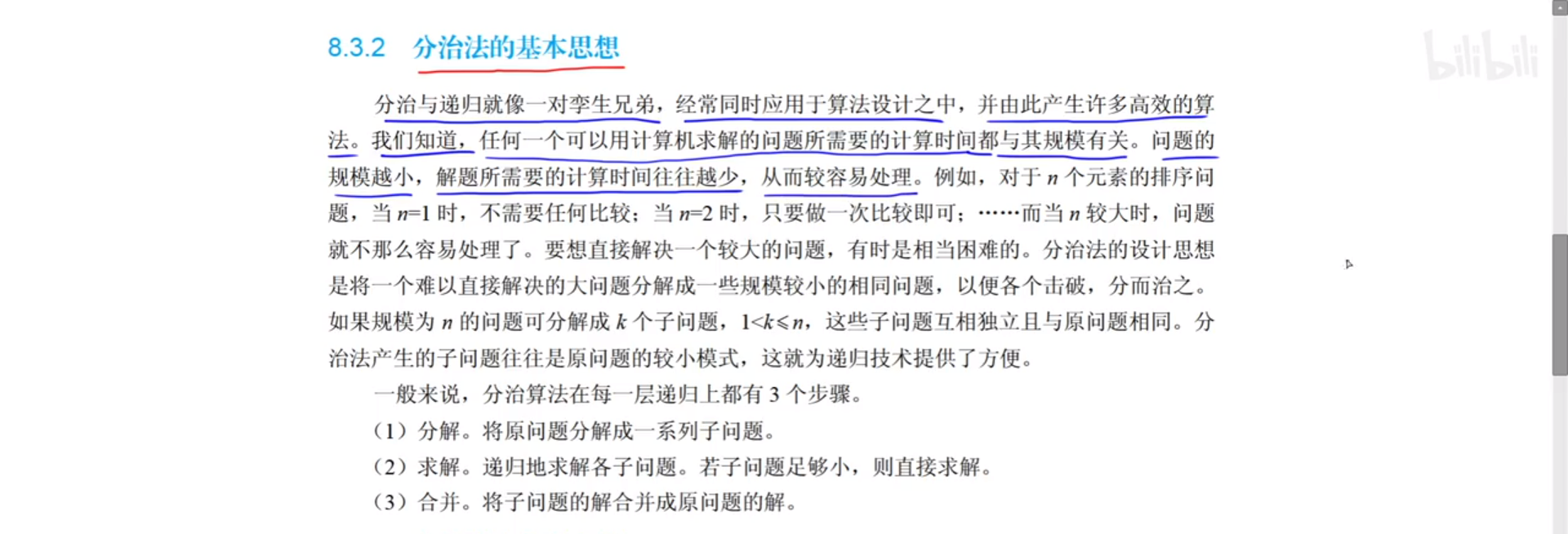
六大题知识点
创建型设计模式
简单工厂模式
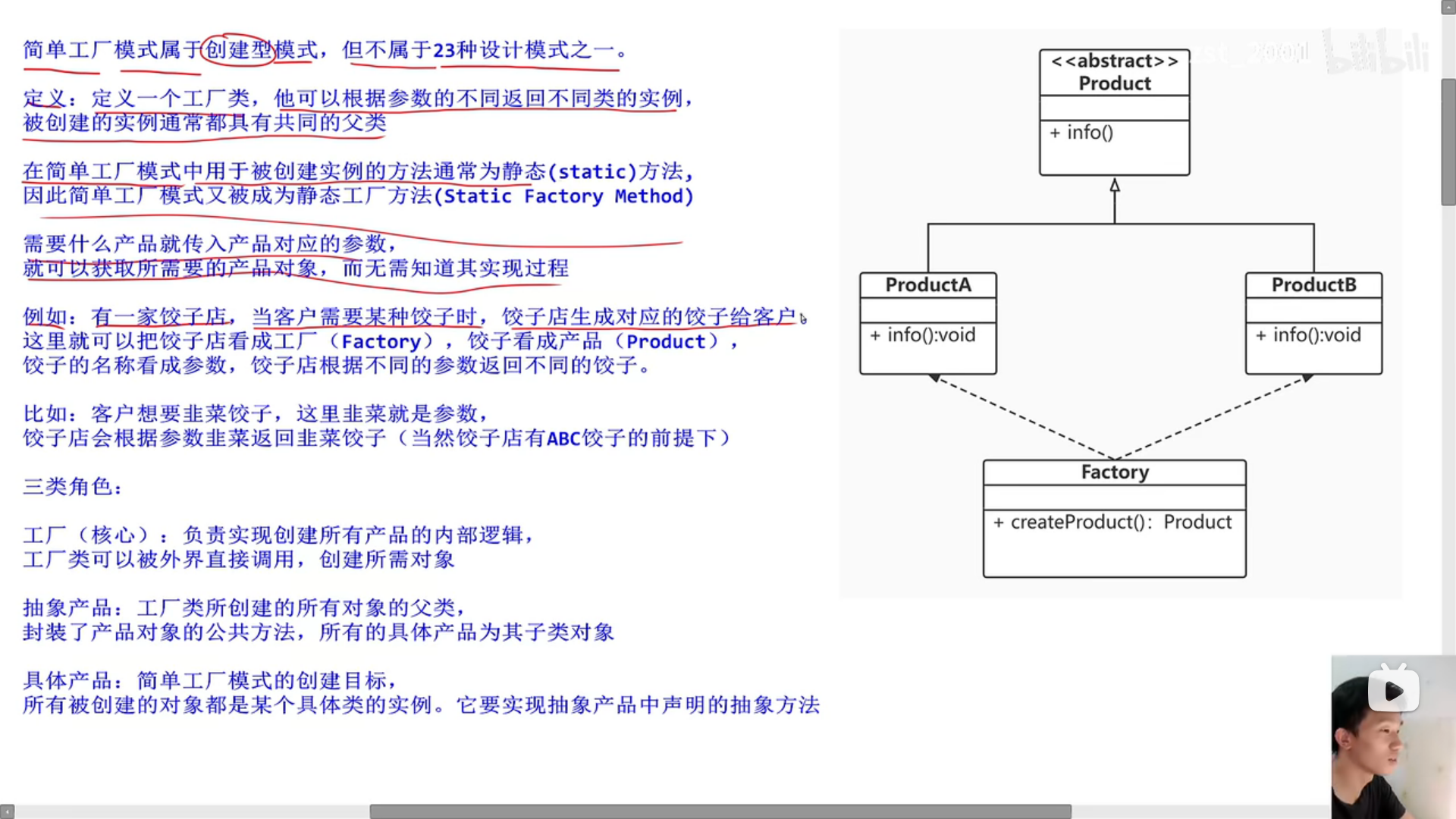
简单工厂模式Code
package com.tom.创建型设计模式;
public class ImitationSimpleFactory {
public static void main(String[] args) {
Product A = Factory.createProduct("A");
A.info();
Product B = Factory.createProduct("B");
B.info();
}
}
class Factory{
public static Product createProduct (String type) {
Product product = null;
switch(type){
case "A":
product = new ProductA();
break;
case "B":
product = new ProductB();
break;
default:
System.out.println("没有"+type+"类型的产品");
break;
}
return product ;
}
}
abstract class Product {
public abstract void info();
}
class ProductA extends Product{
@Override
public void info() {
System.out.println("产品的信息: A");
}
}
class ProductB extends Product{
@Override
public void info() {
System.out.println("产品的信息: B");
}
}
工厂方法模式
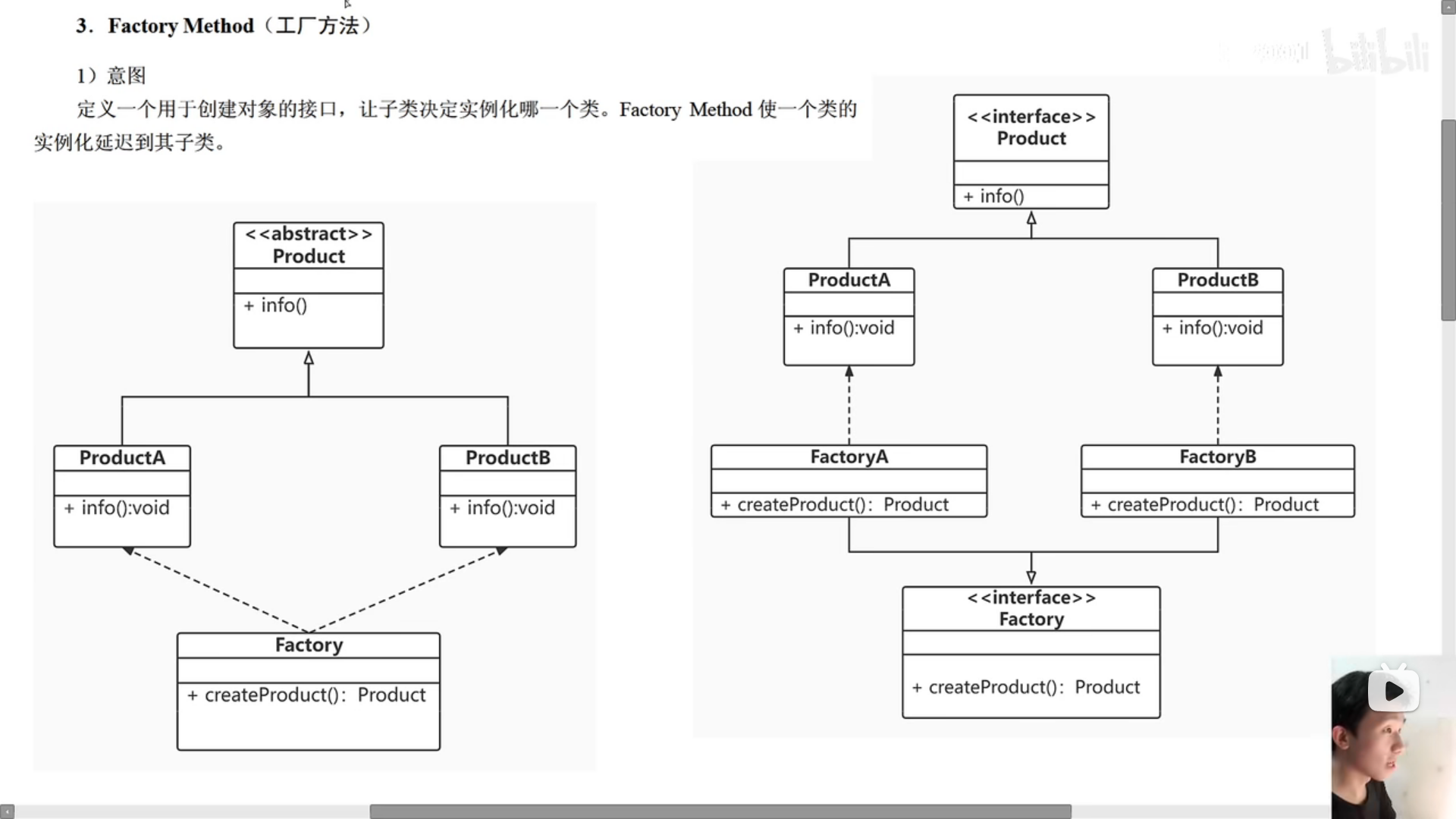
FactoryMethodCode
package com.tom.创建型设计模式;
public class ImitationFactoryMethod {
public static void main(String[] args) {
FactoryA factoryA = new FactoryA();
Product1 productA = factoryA.createProduct1();
productA.info();
FactoryB factoryB = new FactoryB();
Product1 productB = factoryB.createProduct1();
productB.info();
}
}
interface Product1{
public void info();
}
class ProductA1 implements Product1 {
@Override
public void info() {
System.out.println("产品的信息: A");
}
}
class ProductB1 implements Product1 {
@Override
public void info() {
System.out.println("产品的信息: B");
}
}
interface Factory1{
public Product1 createProduct1();
}
class FactoryA implements Factory1{
@Override
public Product1 createProduct1() {
return new ProductA1();
}
}
class FactoryB implements Factory1{
@Override
public Product1 createProduct1() {
return new ProductB1();
}
}
抽象工厂模式
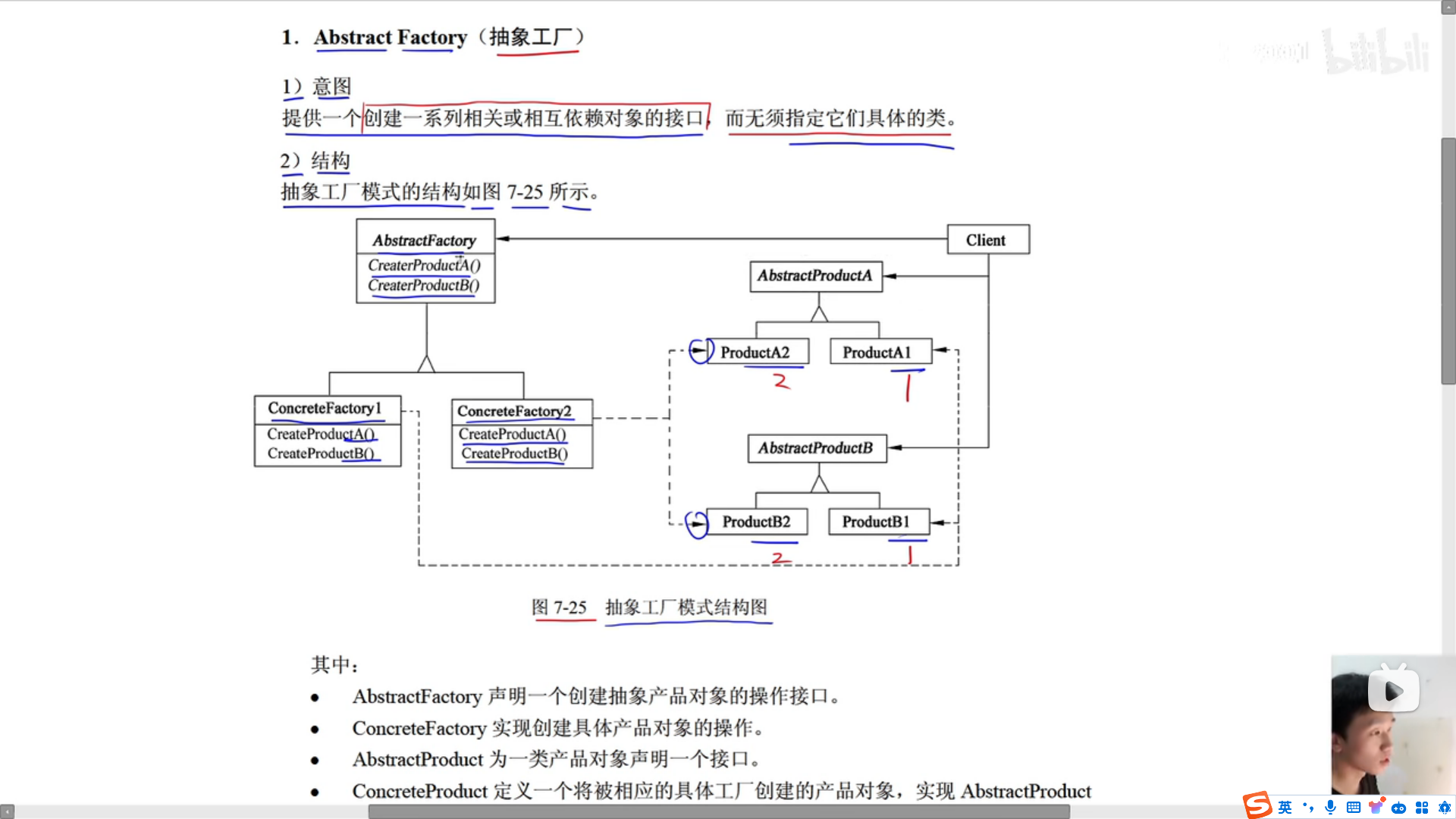
抽象工厂模式code
package com.tom.创建型设计模式;
public class ImitationAbstractFactory {
public static void main(String[] args) {
Factory2A factory2A = new Factory2A();
ProductA21 productA21 = factory2A.createProductA21();
ProductB21 productB21 = factory2A.createProductB21();
productA21.info();
productB21.info();
Factory2B factory2B = new Factory2B();
ProductA21 productA211 = factory2B.createProductA21();
ProductB21 productB211 = factory2B.createProductB21();
productA211.info();
productB211.info();
}
}
interface Factory2{
public ProductA21 createProductA21();
public ProductB21 createProductB21();
}
class Factory2A implements Factory2{
public ProductA21 createProductA21(){
return new ProductA21();
};
public ProductB21 createProductB21(){
return new ProductB21();
};
}
class Factory2B implements Factory2{
public ProductA21 createProductA21(){
return new ProductA21();
};
public ProductB21 createProductB21(){
return new ProductB21();
};
}
interface ProductA2{
public void info();
}
interface ProductB2{
public void info();
}
class ProductA21 implements ProductA2{
@Override
public void info() {
System.out.println("产品信息A21");
}
}
class ProductB21 implements ProductB2{
@Override
public void info() {
System.out.println("产品信息B21");
}
}
生成器模式
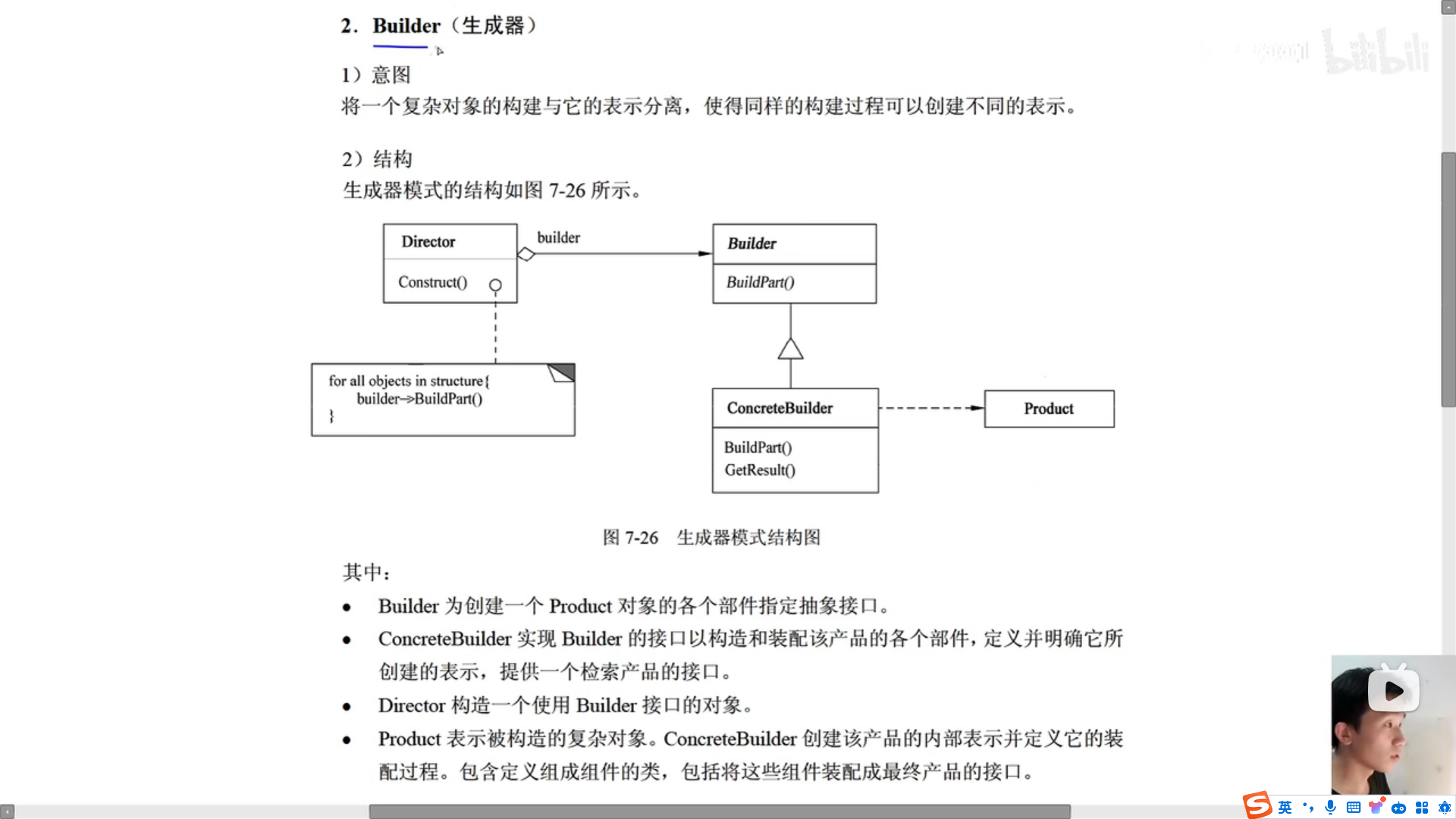
生成器模式code
package com.tom.创建型设计模式;
import java.util.ArrayList;
import java.util.List;
public class ImitationBuilder {
public static void main(String[] args) {
Director director = new Director();
Builder1 builder1 = new Builder1();
director.Construct(builder1);
ProductA3 productA3 = builder1.getResult();
productA3.show();
Builder2 builder2 = new Builder2();
director.Construct(builder2);
ProductA3 productA31 = builder2.getResult();
productA31.show();
}
}
class Director{
public void Construct(Builder builder){
builder.BuildPart();
}
}
abstract class Builder{
public abstract void BuildPart();
public abstract ProductA3 getResult();
}
class Builder1 extends Builder{
ProductA3 productA3 = new ProductA3();
@Override
public void BuildPart() {
productA3.Add("A");
productA3.Add("B");
productA3.Add("C");
productA3.Add("D");
productA3.Add("E");
productA3.Add("F");
}
@Override
public ProductA3 getResult() {
return productA3;
}
}
class Builder2 extends Builder{
ProductA3 productA3 = new ProductA3();
@Override
public void BuildPart() {
productA3.Add("A");
productA3.Add("B");
productA3.Add("C");
productA3.Add("D");
productA3.Add("E");
productA3.Add("F");
}
@Override
public ProductA3 getResult() {
return productA3;
}
}
class ProductA3{
List<String> parts = new ArrayList<String>();
public void Add(String part){
parts.add(part);
}
public void show(){
System.out.println("产品的组成:");
for(String s : parts)
System.out.println(s+" ");
System.out.println("\n");
}
}
原型模式
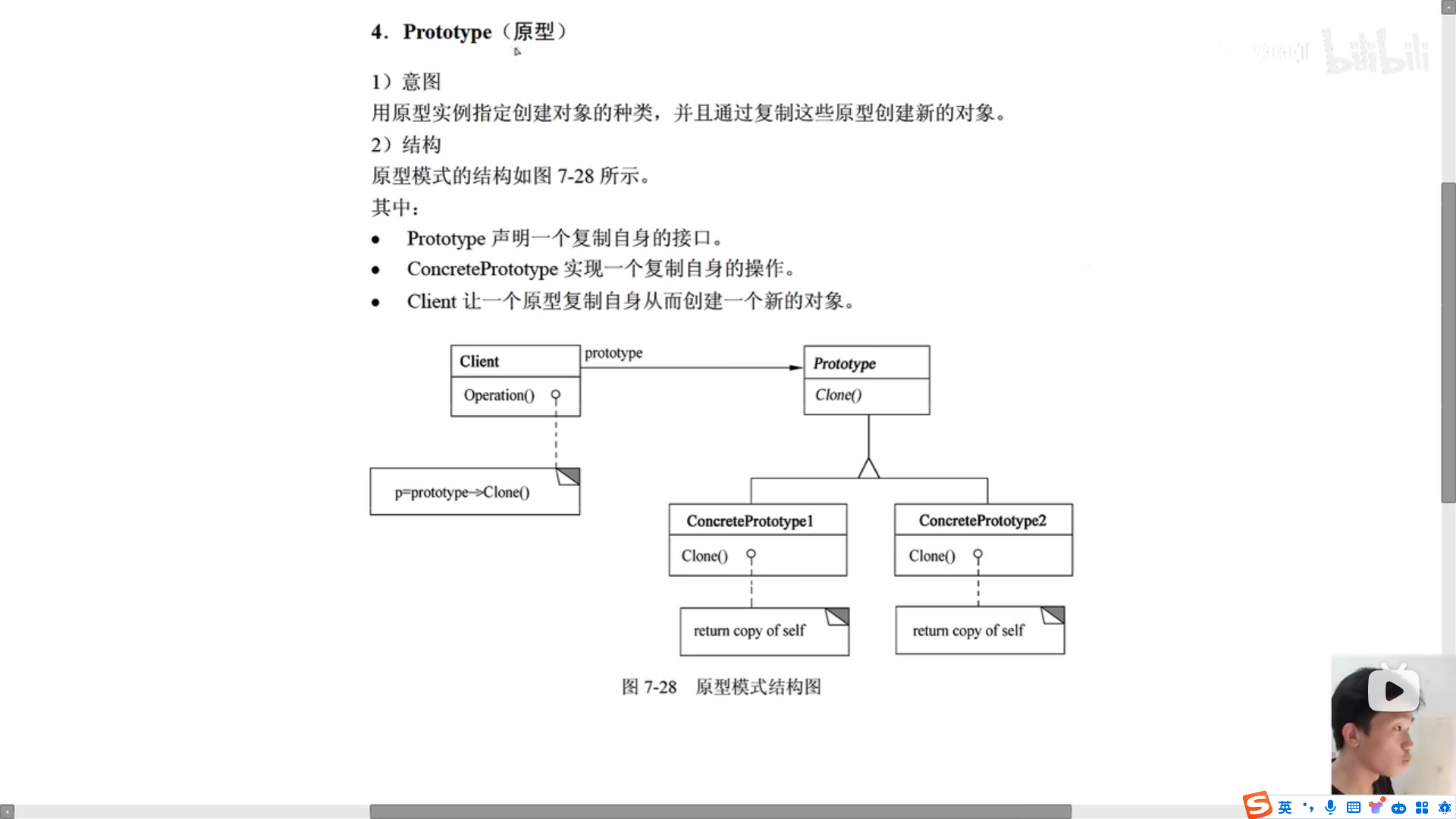
原型模式code
package com.tom.创建型设计模式;
public class ImitationPrototype02 {
public static void main(String[] args) {
Product002 product002 = new Product002(1, 12);
Product002 clone02 = (Product002)product002.clone02();
System.out.println(product002.getId()+" "+product002.getPrice());
System.out.println(clone02.getId()+" "+clone02.getPrice());
}
}
interface Prototype02{
public Object clone02();
}
class Product002 implements Prototype02{
private int id ;
private int price;
public Product002() {
}
public Product002(int id, int price) {
this.id = id;
this.price = price;
}
public int getId() {
return id;
}
public void setId(int id) {
this.id = id;
}
public int getPrice() {
return price;
}
public void setPrice(int price) {
this.price = price;
}
@Override
public Object clone02() {
Product002 product002 = new Product002() ;
product002.id = this.id;
product002.price = this.price;
return product002 ;
}
}
结构型设计模式
适配器模式
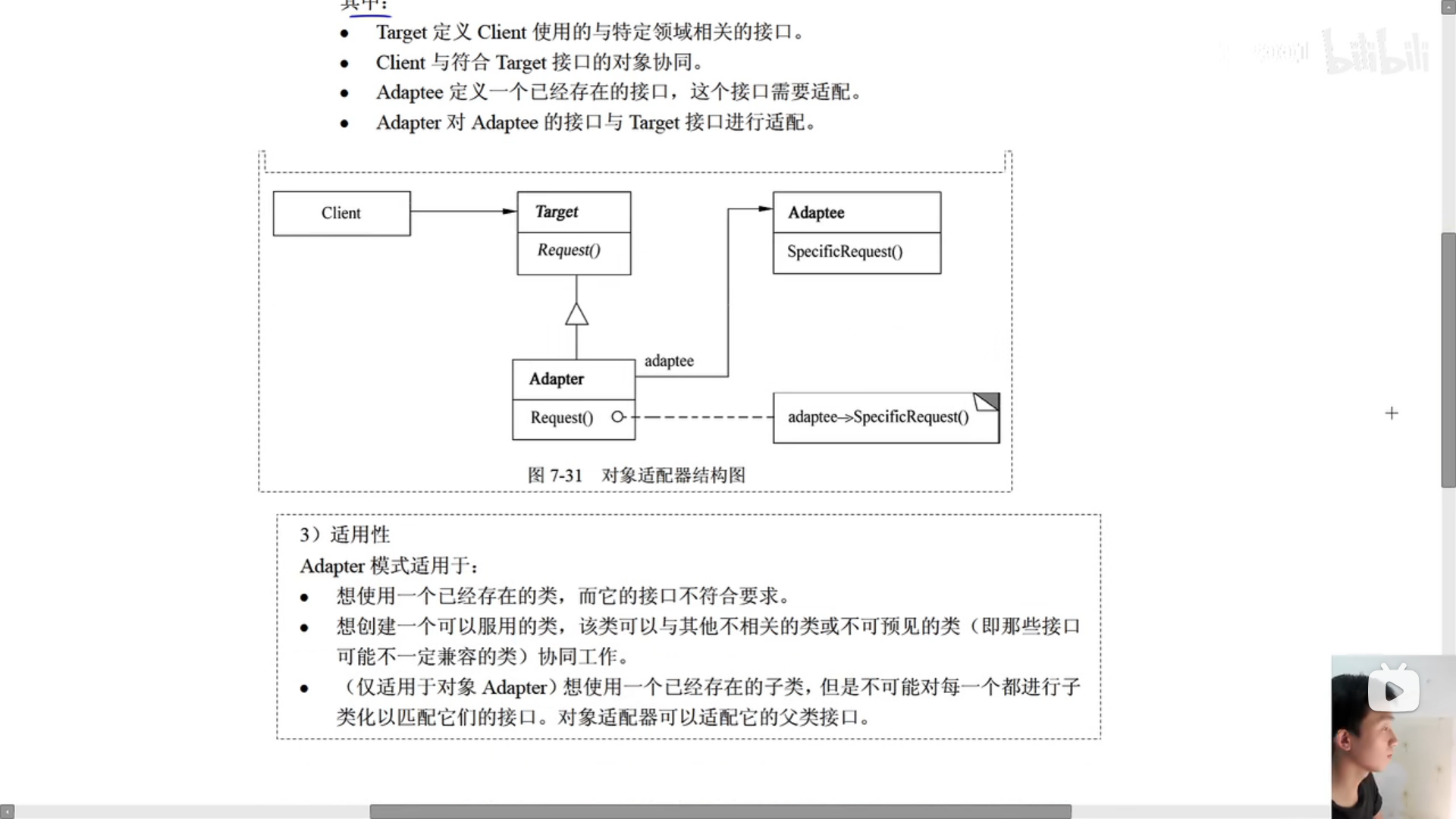
适配器模式Code
package com.tom.结构型设计模式;
public class imitationAdapter {
public static void main(String[] args) {
USB usb = new Adapter();
usb.Request();
}
}
class USB {
public void Request(){
System.out.println("USB数据线");
}
}
class Adapter extends USB {
private TypeC typeC = new TypeC() ;
@Override
public void Request(){
typeC.SpecificRequest();
}
}
class TypeC{
public void SpecificRequest(){
System.out.println("TypeC-数据线");
}
}
桥接模式
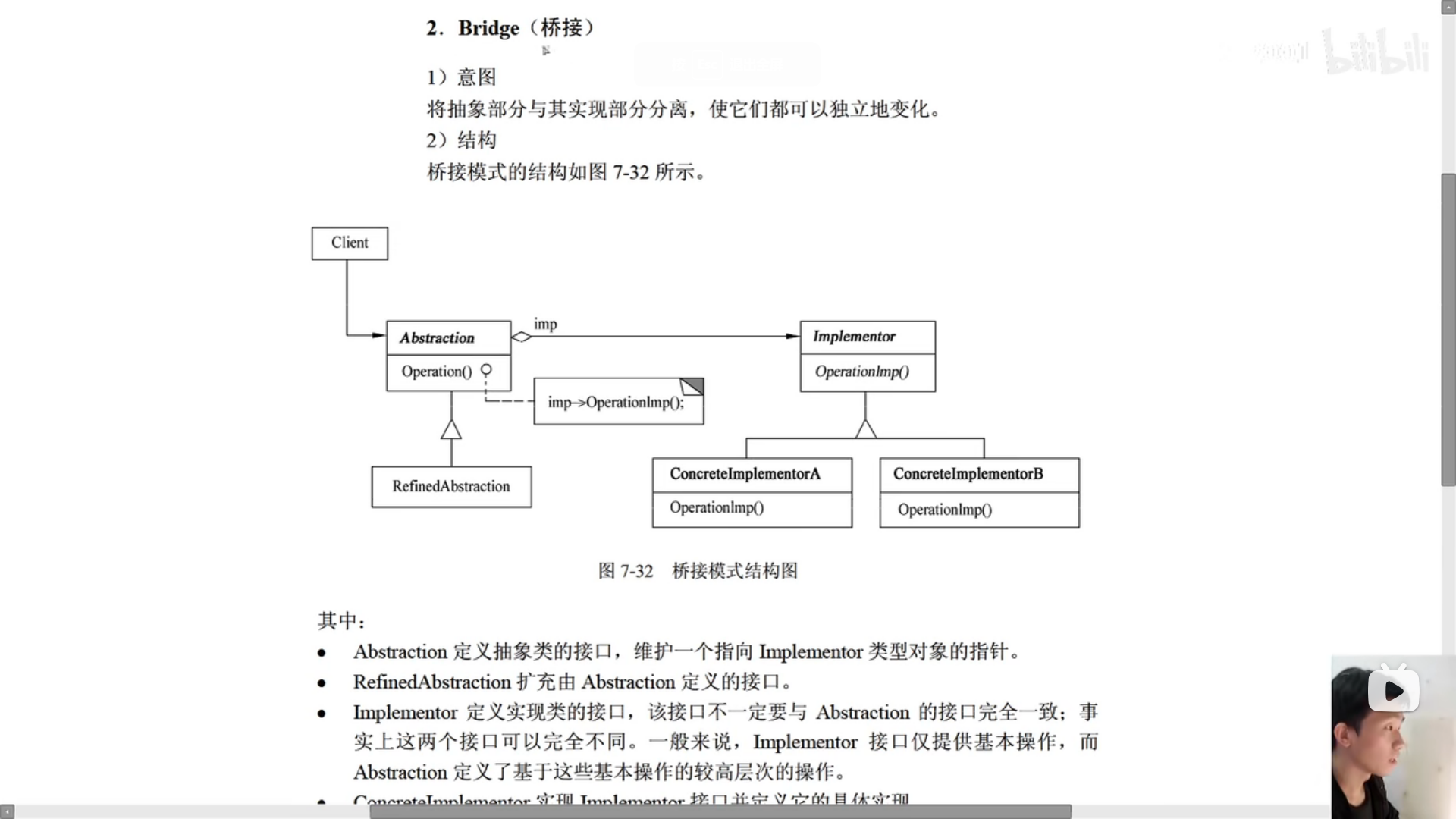
桥接模式code
package com.tom.结构型设计模式;
import java.awt.*;
public class ImitationBridge {
public static void main(String[] args) {
ProductA productA = new ProductA();
Color red = new Red();
Color blue = new Blue();
productA.setName("产品A");
productA.setColor(red);
productA.setName("产品A");
productA.Operation();
}
}
abstract class Product{
private String name ;
protected Color color ;
public Product() {
}
public Product(String name, Color color) {
this.name = name;
this.color = color;
}
public String getName() {
return name;
}
public void setName(String name) {
this.name = name;
}
public Color getColor() {
return color;
}
public void setColor(Color color) {
this.color = color;
}
public abstract void Operation () ;
}
class ProductA extends Product{
@Override
public void Operation() {
color.OperationImp(this.getName());
}
}
interface Color {
public void OperationImp(String name);
}
class Red implements Color {
@Override
public void OperationImp(String name) {
System.out.println(name+": 红色");
}
}
class Blue implements Color{
@Override
public void OperationImp(String name) {
System.out.println(name+ ": 蓝色 ");
}
}
组合模式
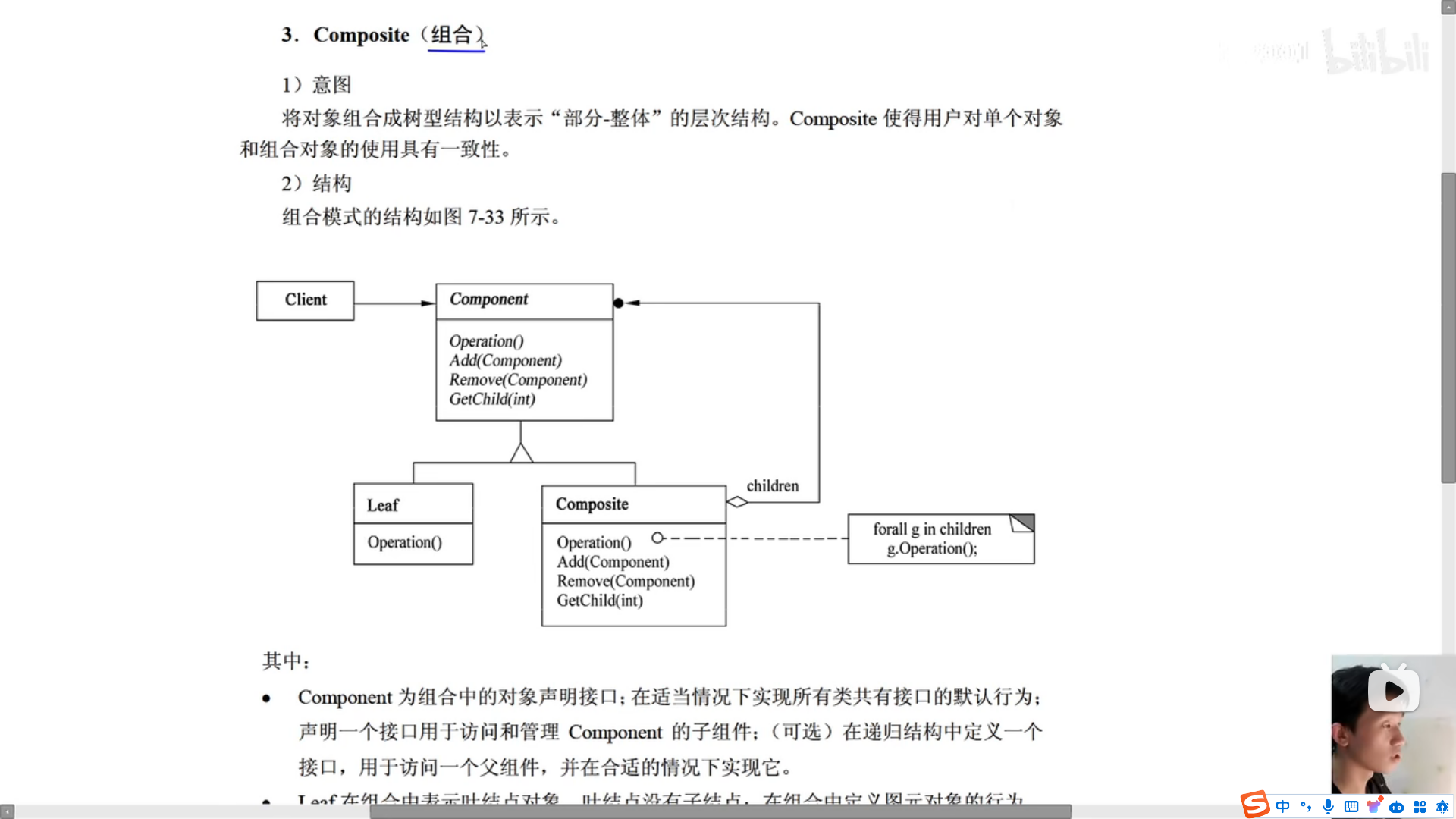
组合模式Code
package com.tom.结构型设计模式;
import java.util.ArrayList;
import java.util.List;
public class ImitationComposite {
public static void main(String[] args) {
AbstractFile root = new Folder("root");
AbstractFile folderA = new Folder("FolderA");
AbstractFile folderC = new Folder("FolderC");
AbstractFile folderD = new Folder("FolderD");
AbstractFile fileA = new File("FileA");
root.Add(folderA);
root.Add(folderC);
root.Add(folderD);
root.Add(fileA);
// System.out.println(root.Add(folderA));
// System.out.println(root.Add(fileA));
AbstractFile folderB = new Folder("FolderB");
AbstractFile fileB = new File("FileB");
folderA.Add(folderB);
folderA.Add(fileB);
// System.out.println(folderA.Add(folderB));
// System.out.println(folderA.Add(fileB));
print(root);
//从root开始遍历,整个文件夹;
}
//未实现递归
// static void print(AbstractFile file){
// file.printName();
// List<AbstractFile> Children = file.getChildren() ;
// for(AbstractFile child : Children){
// System.out.println(child.name);
// }
// }
//实现递归到folderB
static void print(AbstractFile file){
file.printName();
List<AbstractFile> Children = file.getChildren() ;
if (Children == null) return;//在递归时遍历是否是文件File或者Folder为空,为空时返回print,直到遍历完整个List
for(AbstractFile child : Children){
//在第一次遍历List<AbstractFile>时取到了FolderA(FolderB,FileB)
//再次递归遍历,当前child<->即FolderA
print(child);
//遍历打印出结果
}
}
}
abstract class AbstractFile{
protected String name ;
public void printName(){
System.out.println(name);
}
public abstract boolean Add(AbstractFile file);
public abstract boolean Delete(AbstractFile file);
public abstract List getChildren();
}
class Folder extends AbstractFile{
private List<AbstractFile> childLlsit = new ArrayList<AbstractFile> () ;
public Folder(String name){
this.name = name ;
}
@Override
public boolean Add(AbstractFile file) {
childLlsit.add(file);
return true ;
}
@Override
public boolean Delete(AbstractFile file) {
childLlsit.remove(file);
return true;
}
@Override
public List<AbstractFile> getChildren() {
return childLlsit;
}
}
class File extends AbstractFile{
public File (String name){
this.name = name ;
}
@Override
public boolean Add(AbstractFile file) {
return false;
}
@Override
public boolean Delete(AbstractFile file) {
return false;
}
@Override
public List<AbstractFile> getChildren() {
return null;
}
}
装饰器模式
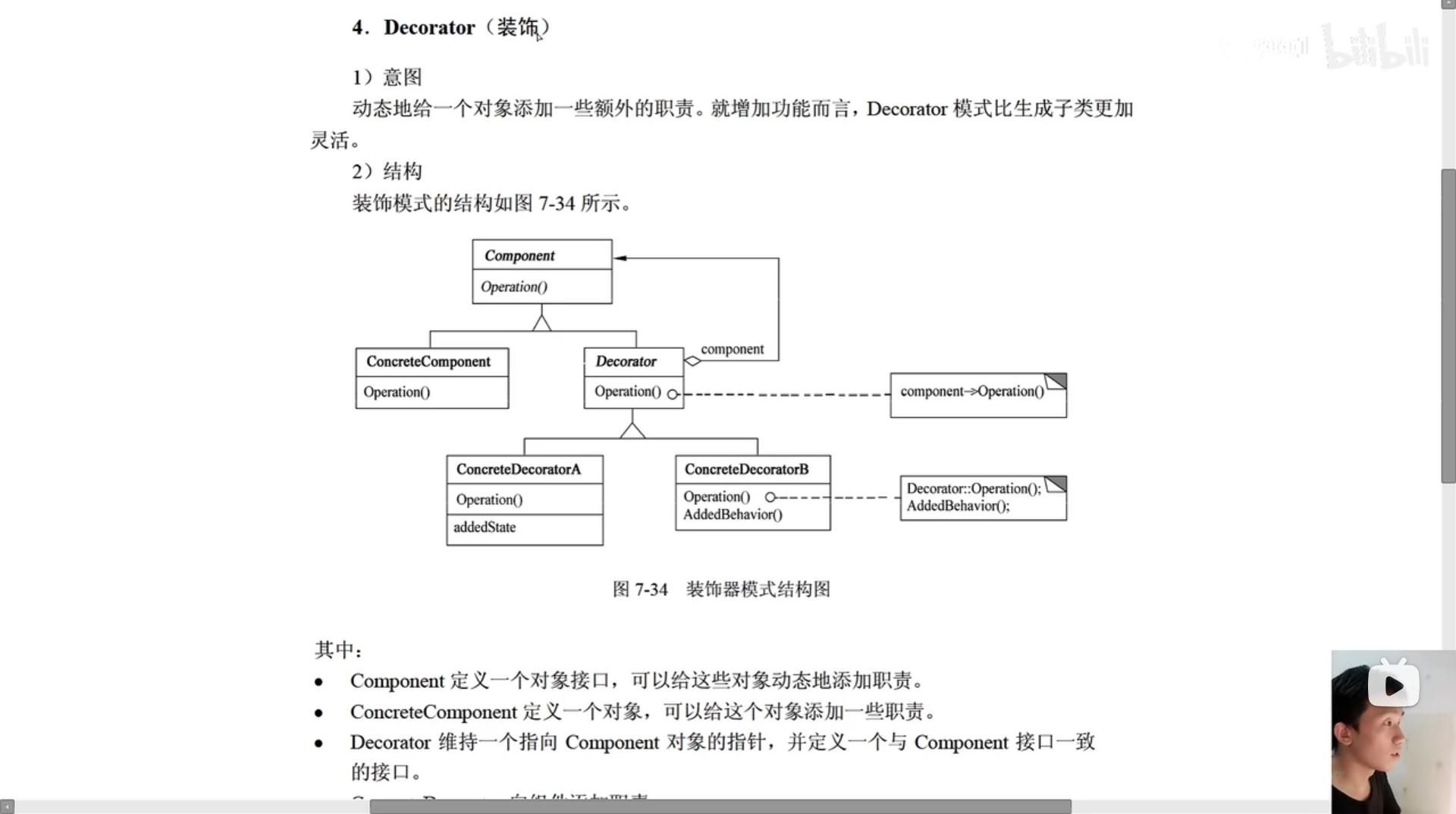
装饰器模式Code
package com.tom.结构型设计模式;
public class ImitationDecorator {
public static void main(String[] args) {
Person zhangSan = new Student("张三");
zhangSan.Operation();
System.out.println("===================");
zhangSan = new DecoratorA(zhangSan);
zhangSan.Operation();
System.out.println("===================");
zhangSan = new DecoratorB(zhangSan);//再将张三加入DecoratorB时调用Operation()时的顺序是什么?
zhangSan.Operation();//这条语句解释一下执行的顺序
/**
*1,整体在执行时,因为DecoratorA和 DecoratorB都是Decorator的子类,
*2,这是子类父类在调用时的执行顺序吗?测试一下将DecoratorB写在前面的效果(根代码编写顺序无关)
* 3,听讲理解(稍慢点)
* 4,叙述
* 根据代码,DecoratorB(zhangSan)->这里的zhangSan是 public DecoratorA(Person person) {
* this.person = person;
* }执行 zhangSan = new DecoratorA(zhangSan);后的person
* 所以在执行 B中的 person.Operation();//原本的职责->对应到A-> person.Operation()
* //即是先执行student中的Operation() ;2,再执行 DecoratorA中的 -》 System.out.print("+写作业");//职责
* //3,DecoratorB-> System.out.print("+健康");//职责
*/
}
}
abstract class Person {
protected String name;
public abstract void Operation();//职责
}
class Student extends Person {
public Student(String name) {
this.name = name;
}
@Override
public void Operation() {
System.out.print(name + ":职责为学习");
}
}
abstract class Decorator extends Person {
protected Person person;
}
class DecoratorB extends Decorator {
public DecoratorB(Person person) {
this.person = person;
}
@Override
public void Operation() {
person.Operation();//原本的职责
System.out.print("+健康");//职责
}
}
class DecoratorA extends Decorator {
public DecoratorA(Person person) {
this.person = person;
}
@Override
public void Operation() {
person.Operation();//原本的职责
System.out.print("+写作业");//职责
}
}
//class DecoratorB extends Decorator{
// public DecoratorB(Person person){
// this.person = person ;
// }
// @Override
// public void Operation(){
// person.Operation();//原本的职责
// System.out.print("+健康");//职责
// }
//}
享元模式
调用时从同一地址拿出->实现共享数据源?
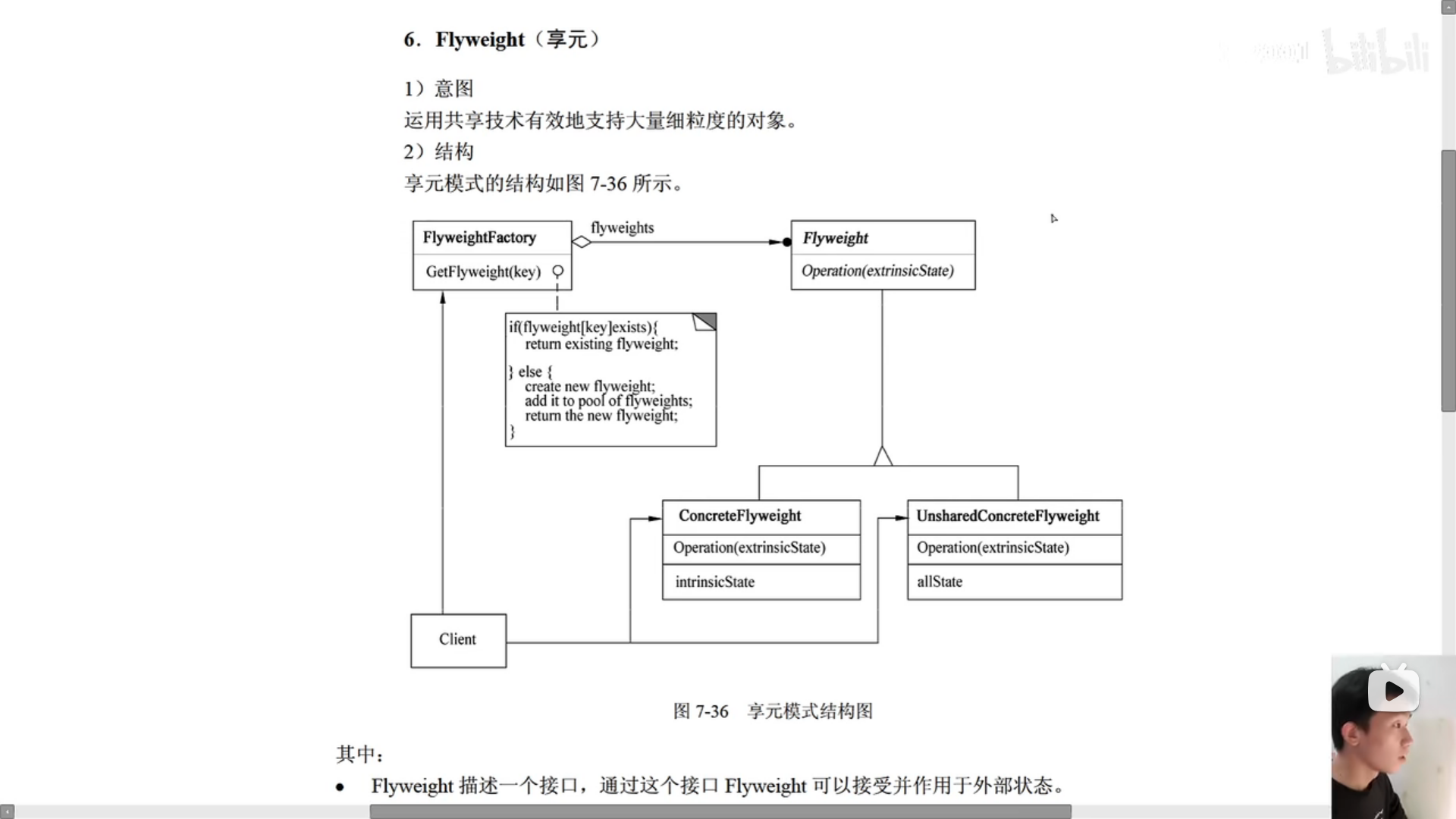
享元模式Code
List
package com.tom.结构型设计模式;
public class ImitationFlyweight {
public static void main(String[] args) {
PieceFactory pieceFactory = new PieceFactory();
piece whitePiece1 = pieceFactory.getPiece(0);
System.out.println(whitePiece1);
piece whitePiece2 = pieceFactory.getPiece(0);
System.out.println(whitePiece2);
piece blackPiece1 = pieceFactory.getPiece(1);
System.out.println(blackPiece1);
piece blackPiece2 = pieceFactory.getPiece(1);
System.out.println(blackPiece2);
}
}
class PieceFactory{
private piece [] pieces = {new whitePiece(),new blackPiece()};
public piece getPiece(int key){
if(key == 0) return pieces[0];
else return pieces[1];
}
}
abstract class piece {
protected String color ;
public abstract void draw(int x , int y);
}
class whitePiece extends piece{
public whitePiece(){
this.color = "white" ;
}
@Override
public void draw(int x, int y){
System.out.println("draw a color : "+color+"piece x :"+x+"piece y :"+y);
}
}
class blackPiece extends piece{
public blackPiece(){
this.color = "black" ;
}
@Override
public void draw(int x, int y){
System.out.println("draw a color : "+color+"piece x :"+x+"piece y :"+y);
}
}
Map
package com.tom.结构型设计模式;
import java.util.*;
public class ImitationFlyweight2 {
public static void main(String[] args) {
shapeFactory shapefactory = new shapeFactory();
Random random = new Random();
String[] colors = {"red","blue","yellow","grey","black","red"};
for(int i = 0 ;i<=99 ; i++){
int x = random.nextInt(colors.length);//[0-5]
shape shapes = shapefactory.getShape(colors[x]);
System.out.println("第" + i + "个圆");
shapes.draw(random.nextInt(2023),random.nextInt(17));
}
}
}
class shapeFactory{
private Map<String , shape> map= new HashMap<>();
public shape getShape(String key){
//未降重code
// if(map.containsKey(key)){
// return map.get(key);
// }else{
// shape shapes = new Circle(key);
// map.put(key,shapes);
// return map.get(key);
// }
//降重code
if(!map.containsKey(key)){
map.put(key,new Circle(key));
System.out.println("create color : "+key+" circle");
}
return map.get(key);
}
}
abstract class shape {
protected String color ;
public abstract void draw(int x,int y);
}
class Circle extends shape {
public Circle (String color ){
this.color = color ;
}
@Override
public void draw(int x,int y){
System.out.println("draw a color : "+color+" circle x:"+x+" y : "+ y);
}
}
行为设计模式
命令模式
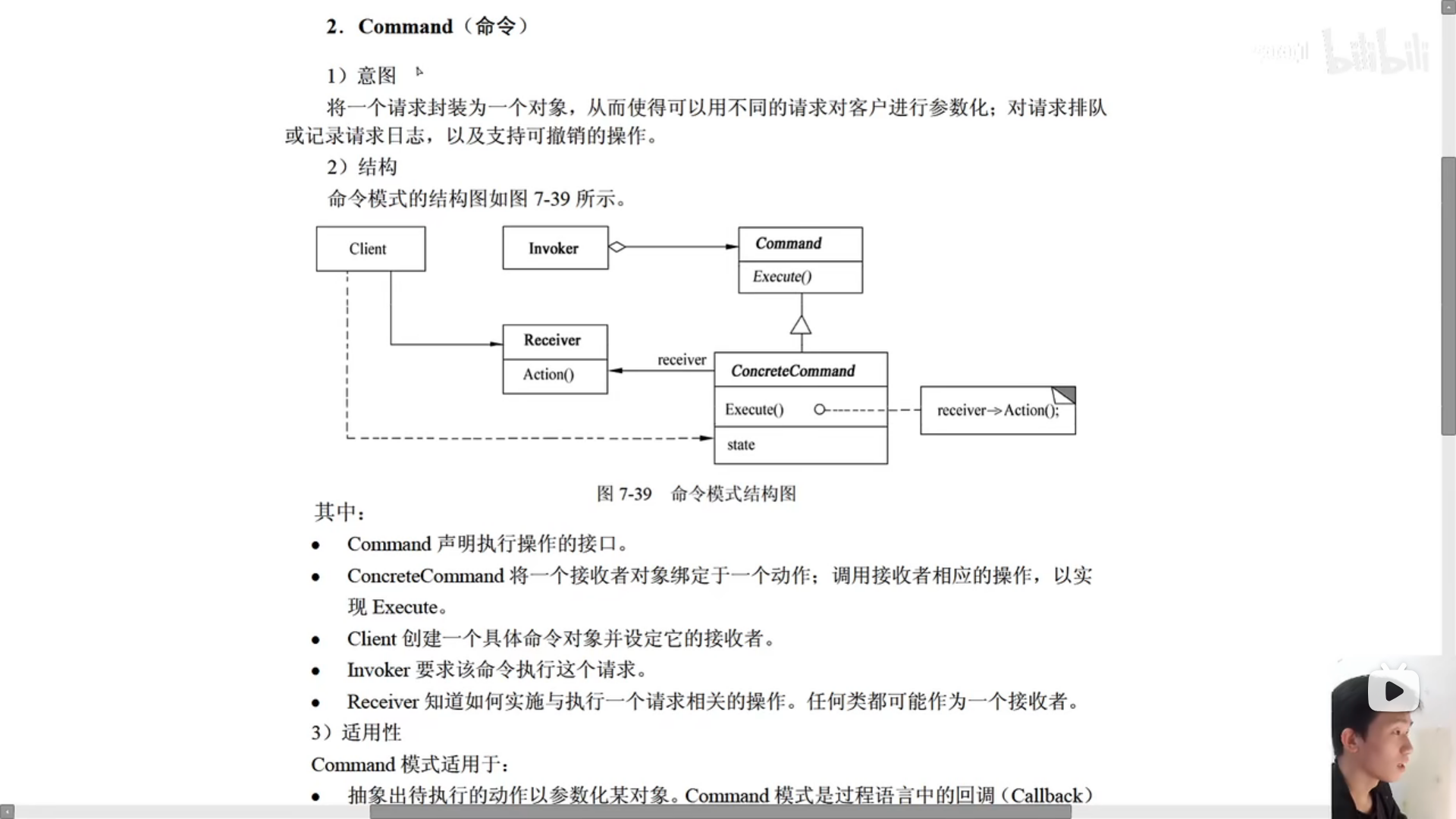
命令模式Code
package com.tom.行为型设计模式;
public class ImitationCommand {
public static void main(String[] args) {
Tv tv = new Tv();
Command ON = new OnCommand(tv);
Command OFF= new OffCommand(tv);
Invoker invoker = new Invoker();
invoker.setCommand(ON);
invoker.call();
System.out.println("=================");
invoker.setCommand(OFF);
invoker.call();
}
}
class Invoker{
//请求者
private Command command ; //命令
public void setCommand (Command command){
this.command = command ;
}
public void call(){
command.Execute();
}
}
interface Command{
public void Execute();
}
class OffCommand implements Command{
private Tv tv ;
public OffCommand(Tv tv){
this.tv = tv ;
}
@Override
public void Execute(){
tv.offAction();
}
}
class OnCommand implements Command{
private Tv tv ;
public OnCommand(Tv tv){
this.tv = tv ;
}
@Override
public void Execute(){
tv.onAction();
}
}
class Tv{
public void onAction(){
System.out.println("开机行动");
}
public void offAction(){
System.out.println("关机行为");
}
}
观察者模式
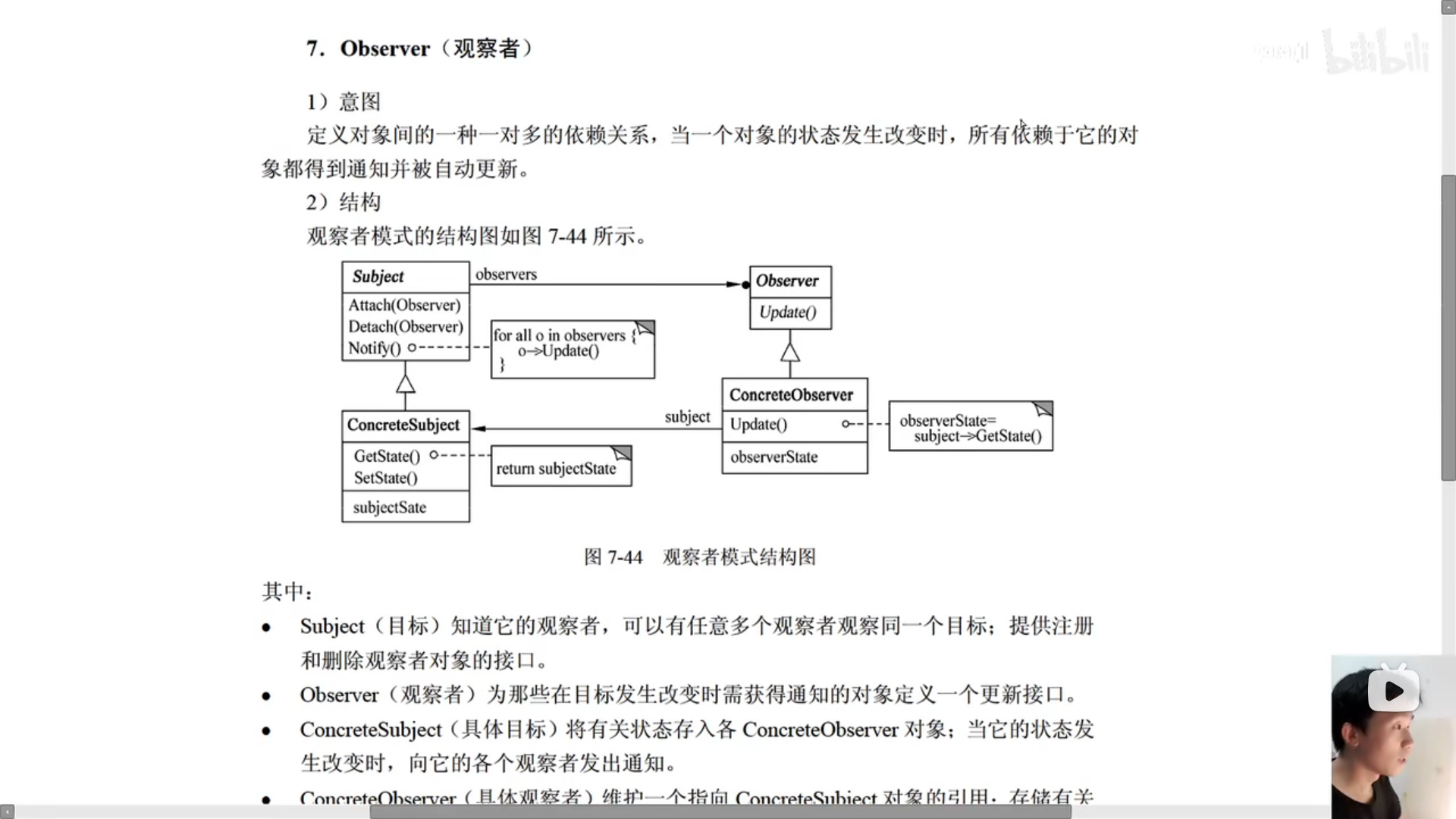
观察者模式Code
package com.tom.行为型设计模式;
import java.util.ArrayList;
import java.util.List;
public class ImitationObserver {
public static void main(String [] args){
Subject subjectA = new ConcreteSubject("目标A");
Observer zhangSan = new ConcreteObserver("张三", subjectA);
Observer LiSi = new ConcreteObserver("李四",subjectA);
Observer WangWu = new ConcreteObserver("王五",subjectA);
subjectA.setState("更新了");
subjectA.Notify();
}
}
interface Subject{
public void Attach(Observer observer);
public void Detach(Observer observer);
public void Notify();//更新通知
public void setState(String state) ;
public String getState();
}
class ConcreteSubject implements Subject{
private String name ;
private String state;
private List<Observer> observerList ;
public void setState(String state){
this.state = state ;
}
public String getState(){
return state ;
}
public ConcreteSubject(String name) {
this.name = name ;
state = "未更新" ;
observerList = new ArrayList<Observer>() ;
}
@Override
public void Attach(Observer observer) {
observerList.add(observer);
}
@Override
public void Detach(Observer observer) {
observerList.remove(observer);
}
@Override
public void Notify() {
//更新通知
for(Observer observer : observerList){
observer.update();
}
}
}
interface Observer{
public void update();
}
class ConcreteObserver implements Observer{
private String state ;
private String name;
private Subject subject ;
public ConcreteObserver(String name, Subject subject) {
this.name = name;
this.subject = subject;
subject.Attach(this);
state = subject.getState();
}
@Override
public void update() {
System.out.println(name+"收到通知");
state = subject.getState();
System.out.println(name+"改变后的状态为:"+state);
}
}
状态模式

状态模式Code
package com.tom.行为型设计模式;
public class ImitationState {
public static void main(String[] args) {
Context2 context2 = new Context2();
System.out.println(context2.getStates());
context2.request();//购买一个饮料count = 2 ;
context2.request();;//购买一个饮料count = 1 ;
context2.request();//count = 0 ;
System.out.println(context2.getStates());//卖光了,将状态设置为StateB
context2.request();
}
}
class Context2{
//贩卖机
private int count ;
private state states ;
public Context2(){
count = 3;
states = new StateA();
}
public int getCount() {
return count;
}
public void setCount(int count) {
this.count = count;
}
public state getStates() {
return states;
}
public void setStates(state states) {
this.states = states;
}
public void request(){
states.Handle(this);
}
}
interface state{
public void Handle(Context2 context2);
}
class StateA implements state{//有货
@Override
public void Handle(Context2 context2) {
int count = context2.getCount();
if(count >= 1){
System.out.println("购买成功");
context2.setCount(count-1);
if(context2.getCount() == 0){
context2.setStates(new StateB());
}
}else {
System.out.println("购买失败");
}
}
}
class StateB implements state{//无货
@Override
public void Handle(Context2 context2) {
int count = context2.getCount();
if(count == 0){
System.out.println("购买失败! 等待补货");
}
}
}
策略模式

策略模式Code
package com.tom.行为型设计模式;
public class ImitationStrategy {
public static void main(String[] args) {
Strategy add= new AddStrategy();
Strategy substract =new SubtractionStrategy();
Strategy MULTIPLY = new MultiplyStrategy();
OperationContext operationContext = new OperationContext(add);
operationContext.Operation(12,12);
OperationContext operationContext1 = new OperationContext(substract);
operationContext1.Operation(12,1);
OperationContext operationContext2 =new OperationContext(MULTIPLY);
operationContext2.Operation(123,123);
}
}
class OperationContext{
private Strategy strategy ;
public OperationContext(Strategy strategy) {
this.strategy = strategy;
}
public void Operation(int a, int b){
strategy.TwoNumberOperation(a,b);
}
}
interface Strategy{
public void TwoNumberOperation(int a ,int b);
}
class AddStrategy implements Strategy{
@Override
public void TwoNumberOperation(int a, int b) {
System.out.println(a+b);
}
}
class SubtractionStrategy implements Strategy{
@Override
public void TwoNumberOperation(int a, int b) {
System.out.println(a-b);
}
}
class MultiplyStrategy implements Strategy{
@Override
public void TwoNumberOperation(int a, int b) {
System.out.println(a*b);
}
}
访问者模式
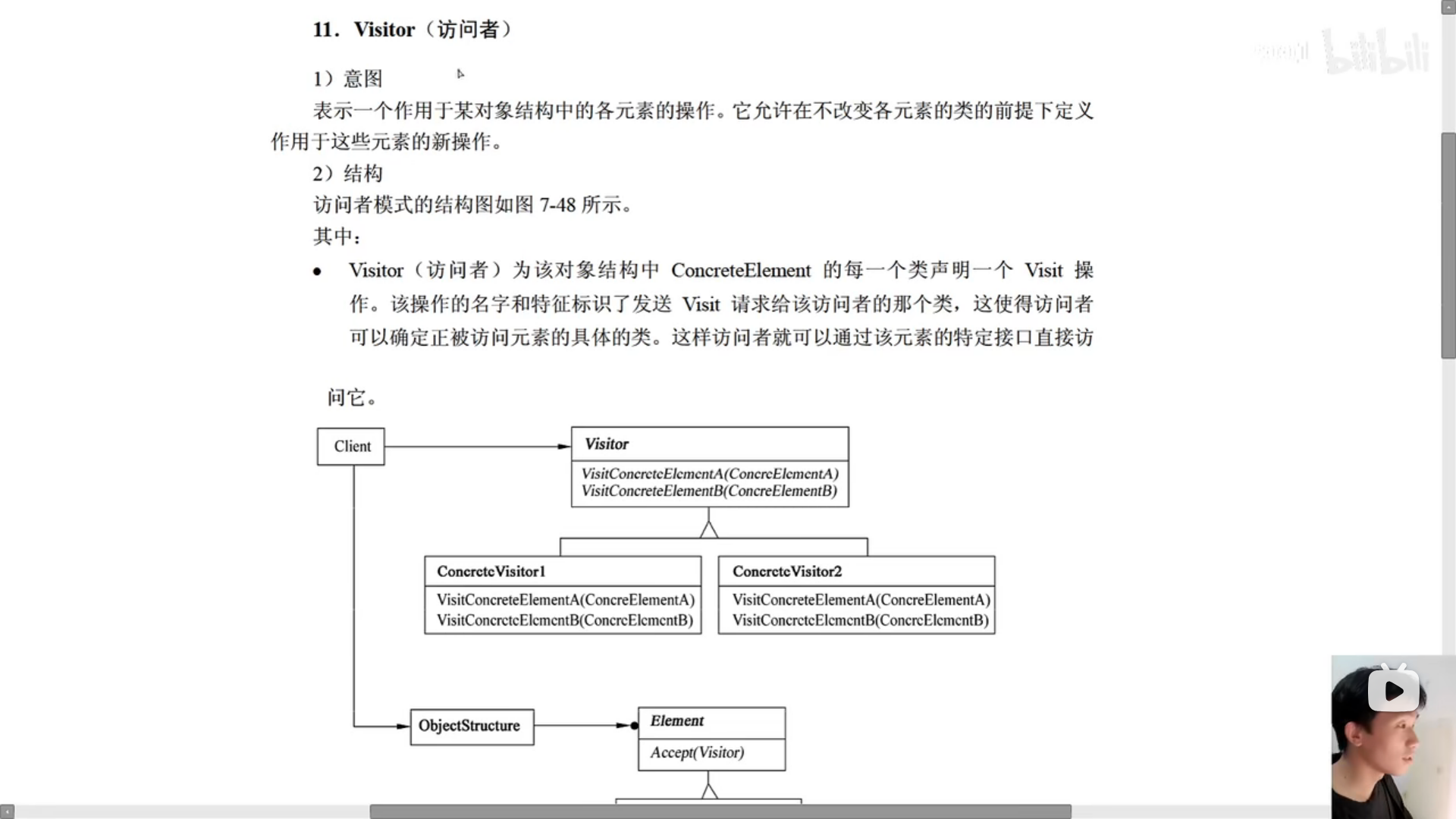
访问者模式Code
package com.tom.行为型设计模式;
import java.util.ArrayList;
import java.util.List;
public class ImitationVisitor {
public static void main(String[] args) {
PersonStructure personStructure = new PersonStructure();
Visitor1 visitor1 = new Visitor1();
System.out.println("访问者1的访问记录");
personStructure.Accept(visitor1);
double maxScore = visitor1.getMaxScore();
System.out.println("最大成绩:"+maxScore);
int maxWorkYear = visitor1.getMaxWorkYear();
System.out.println("最大工龄:"+maxWorkYear);
System.out.println("============================");
Visitor2 visitor2 = new Visitor2();
System.out.println("访问者2的访问记录");
personStructure.Accept(visitor2);
}
}
interface visitor{
public void visitStudent(Student1 student1);
public void visitTeacher(Teacher1 teacher1);
}
class Visitor1 implements visitor{
private double maxScore = -1 ;
private int maxWorkYear = -1 ;
public double getMaxScore() {
return maxScore;
}
public void setMaxScore(double maxScore) {
this.maxScore = maxScore;
}
public int getMaxWorkYear() {
return maxWorkYear;
}
public void setMaxWorkYear(int maxWorkYear) {
this.maxWorkYear = maxWorkYear;
}
@Override
public void visitStudent(Student1 student1) {
System.out.println("访问者1访问学生"+student1.getName()+"/年龄:"+student1.getAge()+"/成绩"+student1.getScore());
maxScore = Math.max(maxScore,student1.getScore());
}
@Override
public void visitTeacher(Teacher1 teacher1) {
System.out.println("访问者1访问老师"+teacher1.getName()+"/年龄"+teacher1.getAge()+"/工龄"+teacher1.getWorkYear());
maxWorkYear = Math.max(maxWorkYear,teacher1.getWorkYear());
}
}
class Visitor2 implements visitor{
private double maxScore = -1 ;
private int maxWorkYear = -1 ;
public double getMaxScore() {
return maxScore;
}
public void setMaxScore(double maxScore) {
this.maxScore = maxScore;
}
public int getMaxWorkYear() {
return maxWorkYear;
}
public void setMaxWorkYear(int maxWorkYear) {
this.maxWorkYear = maxWorkYear;
}
@Override
public void visitStudent(Student1 student1) {
System.out.println("访问者2访问学生"+student1.getName()+"/年龄:"+student1.getAge()+"/成绩"+student1.getScore());
maxScore = Math.max(maxScore,student1.getScore());
}
@Override
public void visitTeacher(Teacher1 teacher1) {
System.out.println("访问者2访问老师"+teacher1.getName()+"/年龄"+teacher1.getAge()+"/工龄"+teacher1.getWorkYear());
maxWorkYear = Math.max(maxWorkYear,teacher1.getWorkYear());
}
}
abstract class Person1{
private String name ;
private int age ;
public String getName() {
return name;
}
public void setName(String name) {
this.name = name;
}
public int getAge() {
return age;
}
public void setAge(int age) {
this.age = age;
}
public Person1(String name, int age) {
this.name = name;
this.age = age;
}
public abstract void Accept(visitor visitors);
}
class Student1 extends Person1{
public double getScore() {
return score;
}
public void setScore(double score) {
this.score = score;
}
private double score ;
public Student1(String name,int age ,double score) {
super(name,age);
this.score = score ;
}
@Override
public void Accept(visitor visitors) {
visitors.visitStudent(this);
}
}
class Teacher1 extends Person1{
public int getWorkYear() {
return workYear;
}
public void setWorkYear(int workYear) {
this.workYear = workYear;
}
private int workYear ;
public Teacher1(String name,int age,int workYear){
super(name,age);
this.workYear = workYear ;
}
@Override
public void Accept(visitor visitors) {
visitors.visitTeacher(this);
}
}
class PersonStructure{
private List<Person1> person1List = new ArrayList<>();
public PersonStructure() {
person1List.add(new Student1("张三",10,77));
person1List.add(new Student1("李四",11,78));
person1List.add(new Student1("王明",12,79));
person1List.add(new Student1("张三二号",13,80));
person1List.add(new Teacher1("老王",30,3));
person1List.add(new Teacher1("苍合",40,4));
person1List.add(new Teacher1("yupi",20,2));
person1List.add(new Teacher1("小布",18,1));
}
public void Accept(visitor visitors){
for(Person1 person1 : person1List){
person1.Accept(visitors);
}
}
}
中介者模式
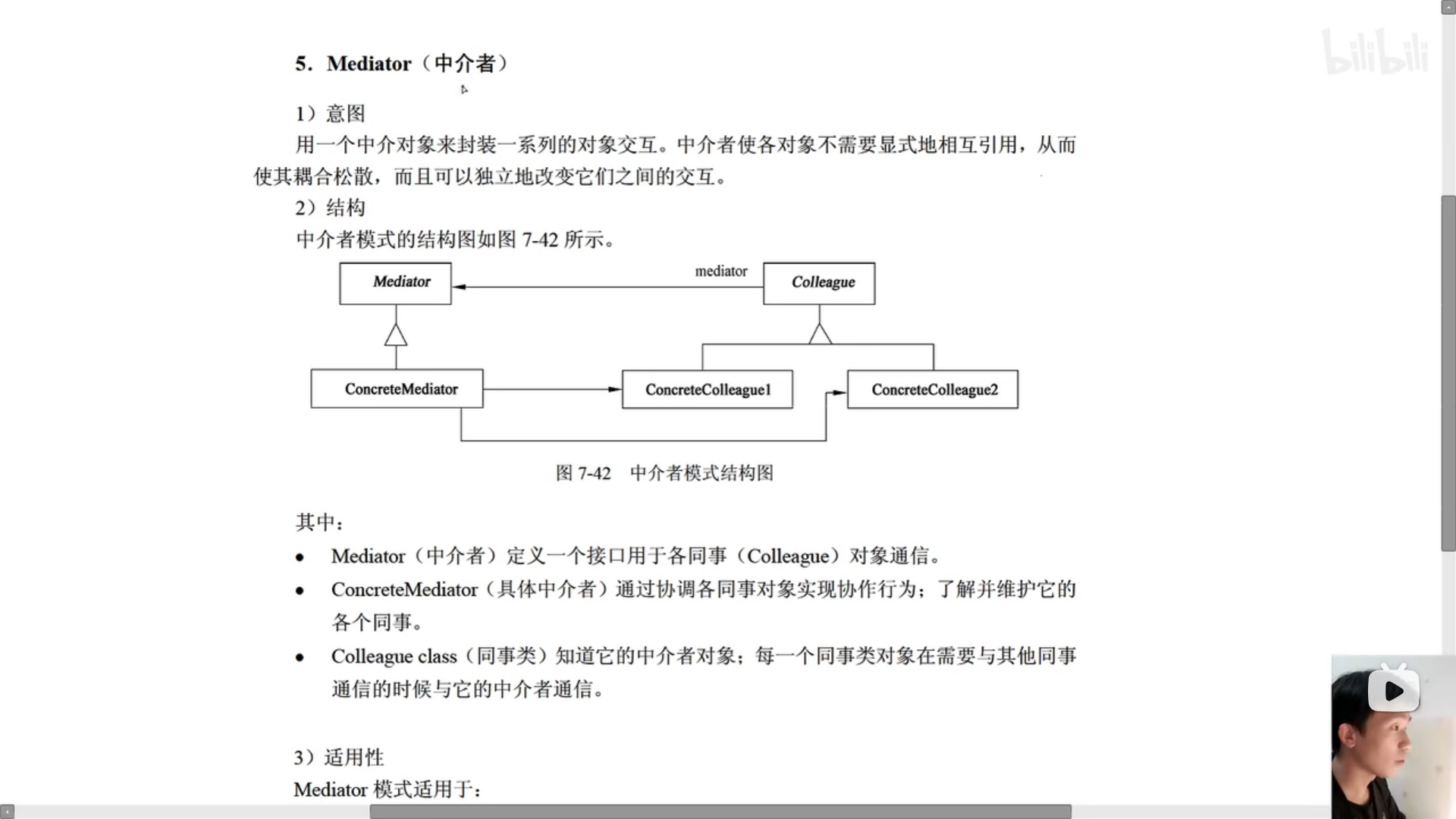
中介者模式Code
package com.tom.行为型设计模式;
public class ImitationMeditor {
public static void main(String[] args){
ConcreteMeditor concreteMeditor = new ConcreteMeditor();
Colleague1 colleague1 = new Colleague1(concreteMeditor);
Colleague2 colleague2 = new Colleague2(concreteMeditor);
concreteMeditor.setColleague1(colleague1);
concreteMeditor.setColleague2(colleague2);
colleague1.sendMessage("messageASD");//空指针异常
colleague2.sendMessage("messageZXC");
}
}
abstract class Colleague{
protected Meditor meditor ;
}
class Colleague1 extends Colleague{
public Colleague1 (Meditor meditor){
this.meditor = meditor ;
}
public void sendMessage(String message){
meditor.sendMessage(message,this);
}
public void Notify(String message){
System.out.println("同事1收到同事2发送的" + message);
}
}
class Colleague2 extends Colleague{
public Colleague2 (Meditor meditor){
this.meditor = meditor ;
}
public void sendMessage(String message){
meditor.sendMessage(message,this);
}
public void Notify(String message){
System.out.println("同事2收到同事1发送的" + message);
}
}
abstract class Meditor{
public abstract void sendMessage(String Message ,Colleague colleague);
}
class ConcreteMeditor extends Meditor {
private Colleague1 colleague1 ;
private Colleague2 colleague2 ;
public void setColleague1 (Colleague1 colleague1){
this.colleague1 = colleague1 ;
}
public void setColleague2(Colleague2 colleague2){
this.colleague2 = colleague2 ;
}
@Override
public void sendMessage(String Message, Colleague colleague) {
if (colleague == colleague1){
colleague2.Notify(Message);
}else {
colleague1.Notify(Message);
}
}
}




















 245
245











 被折叠的 条评论
为什么被折叠?
被折叠的 条评论
为什么被折叠?








